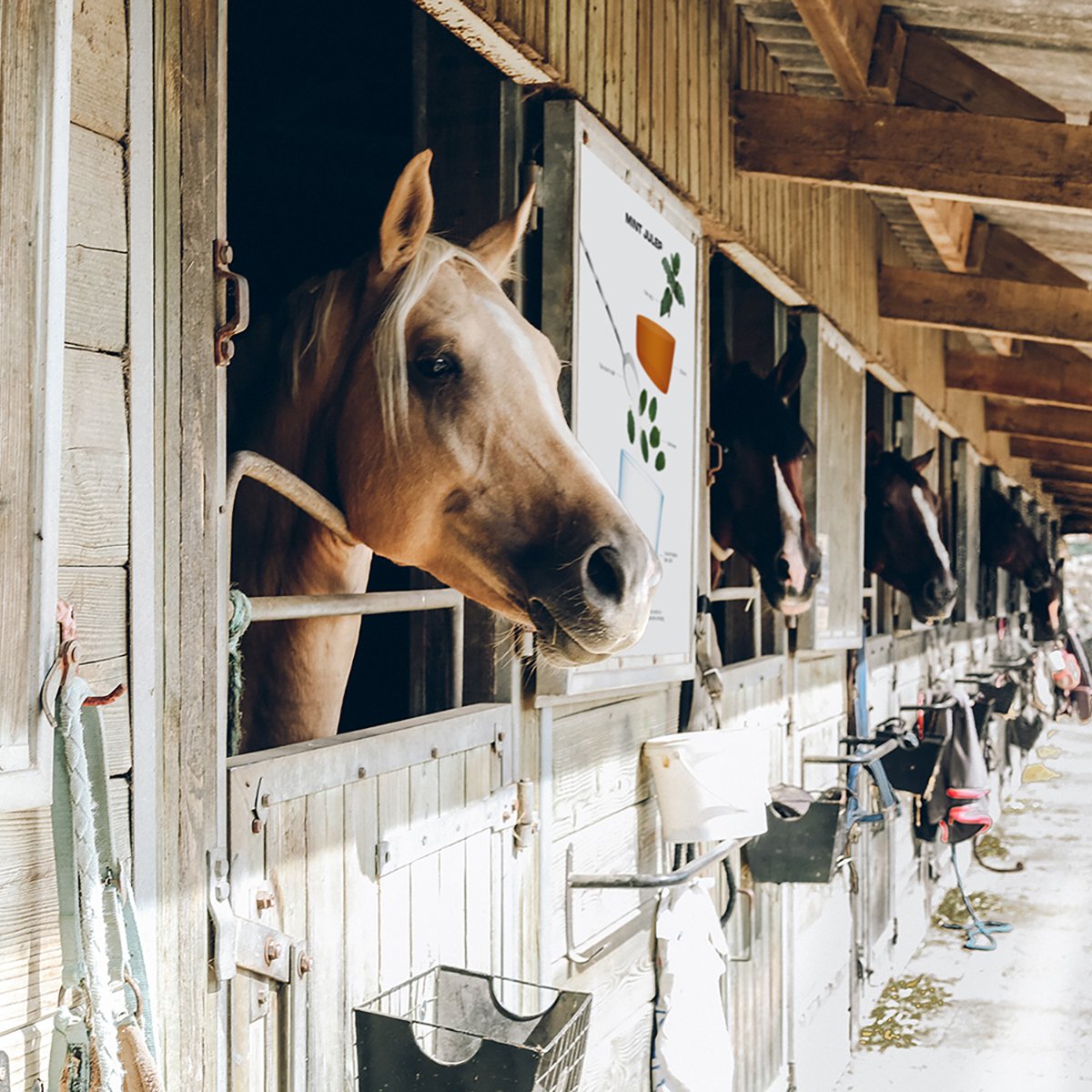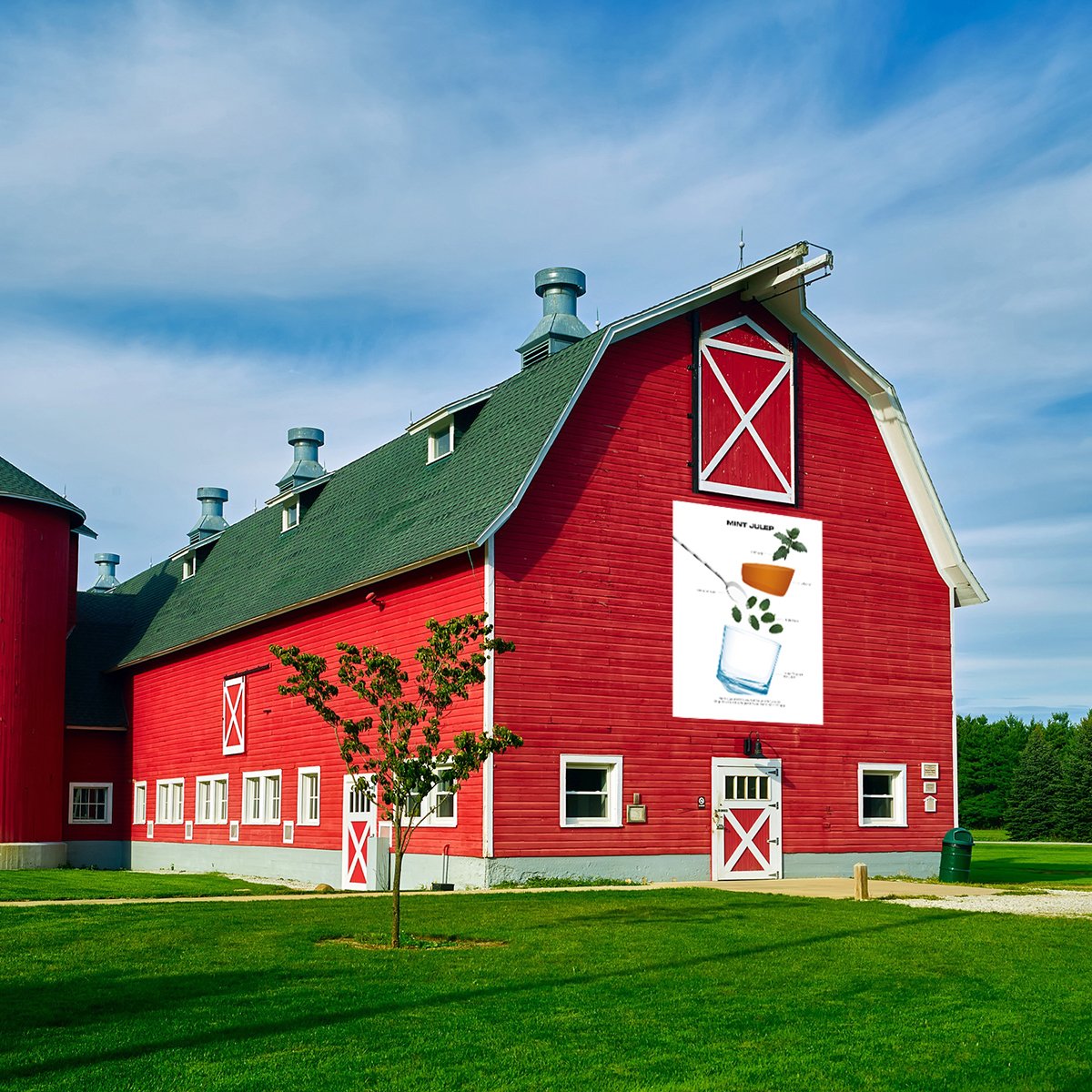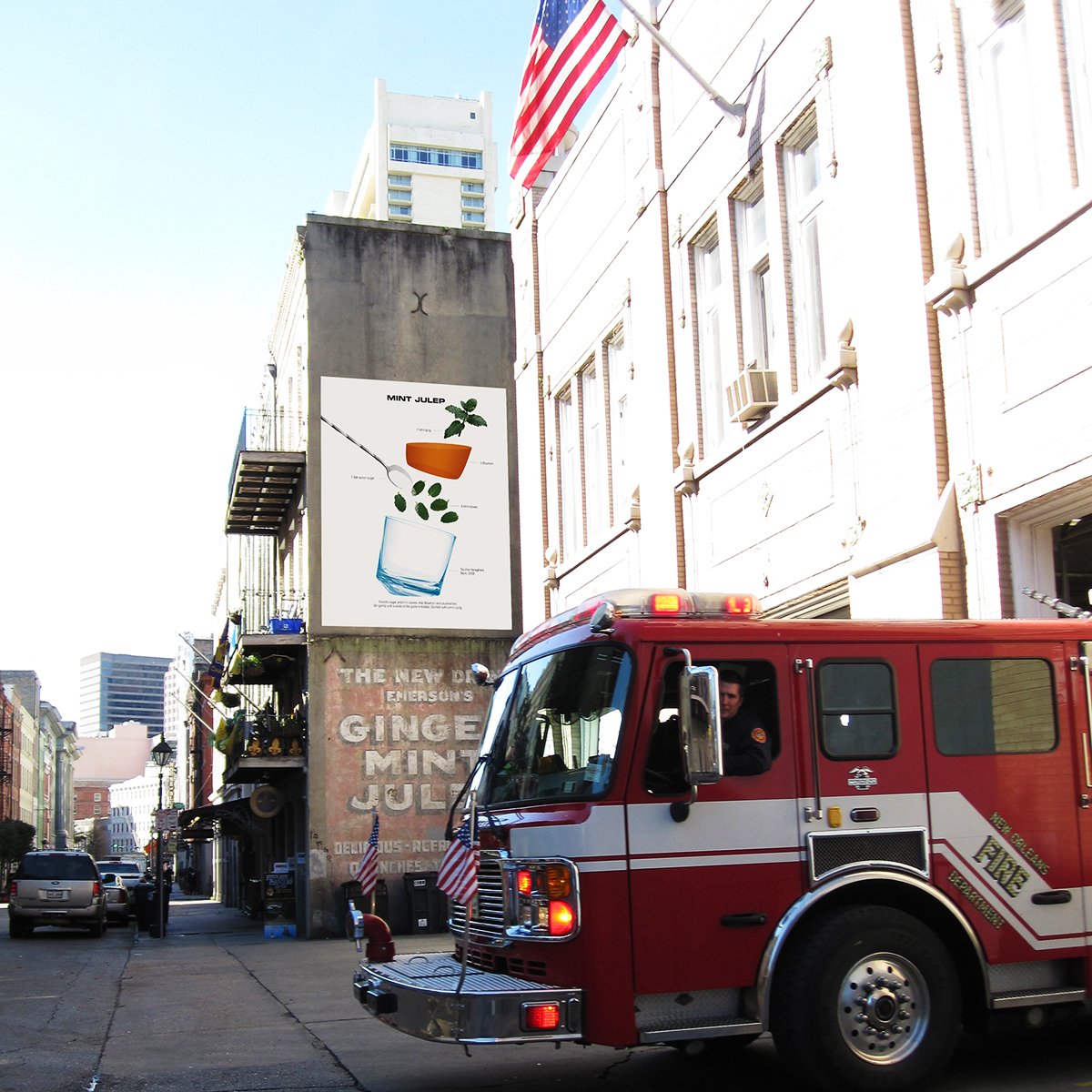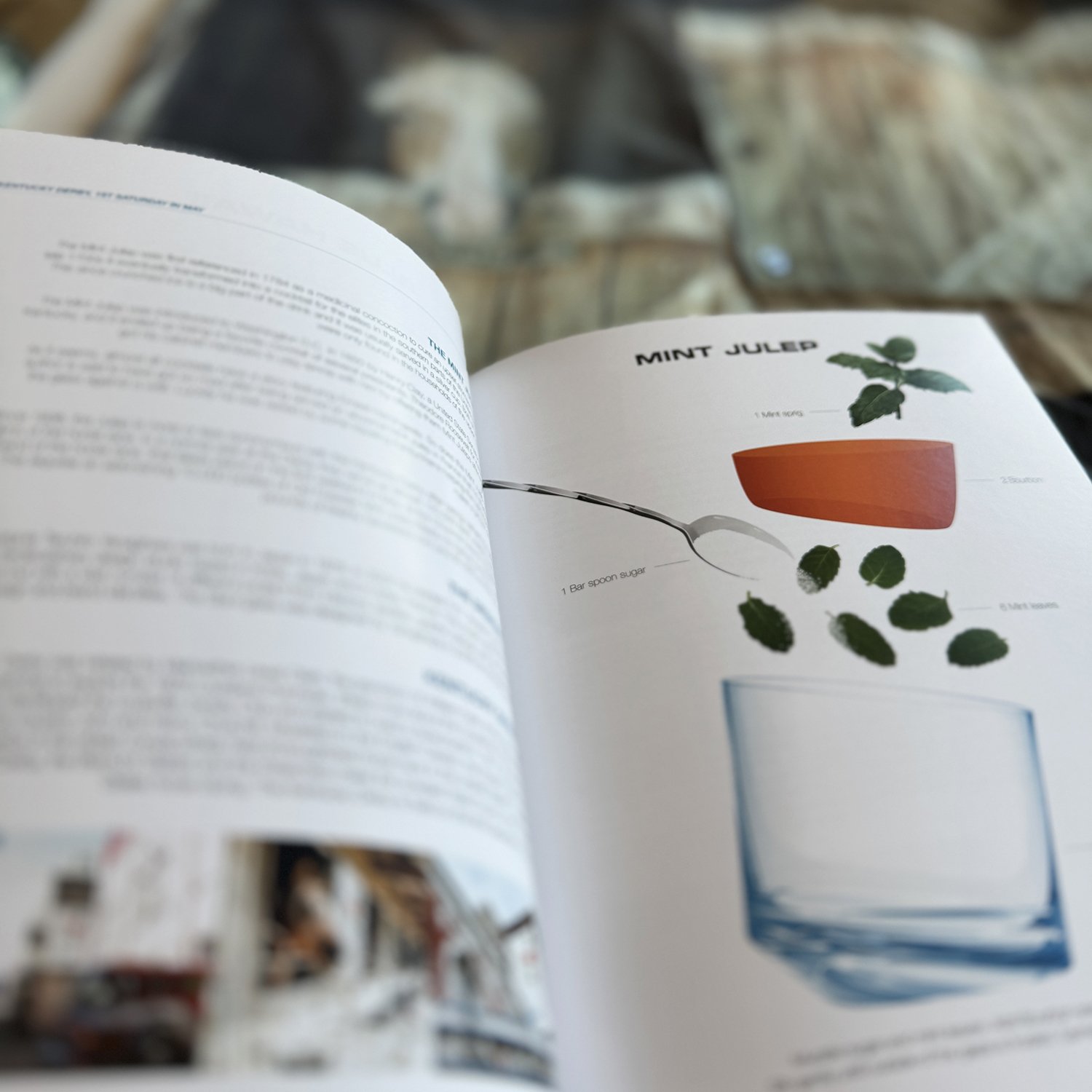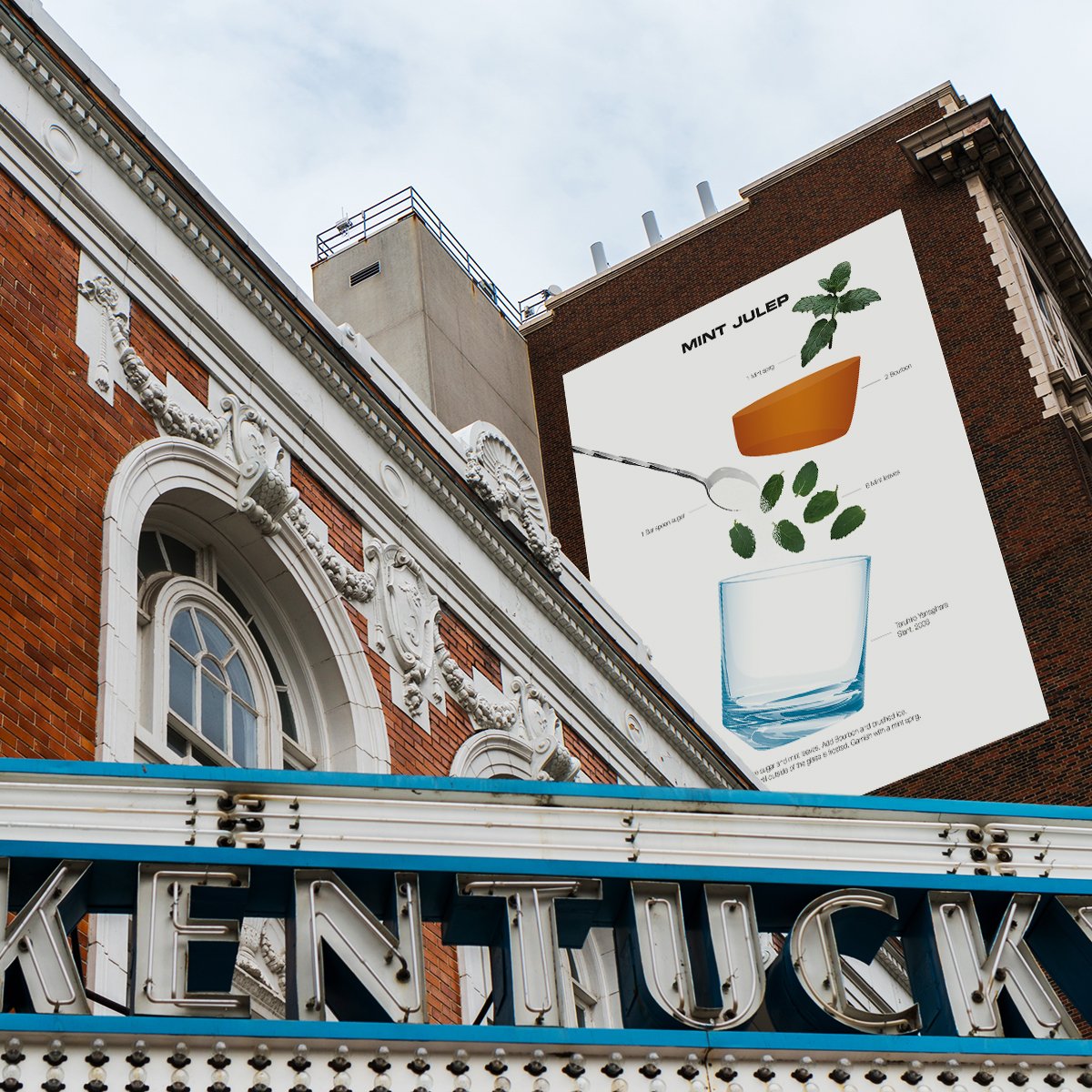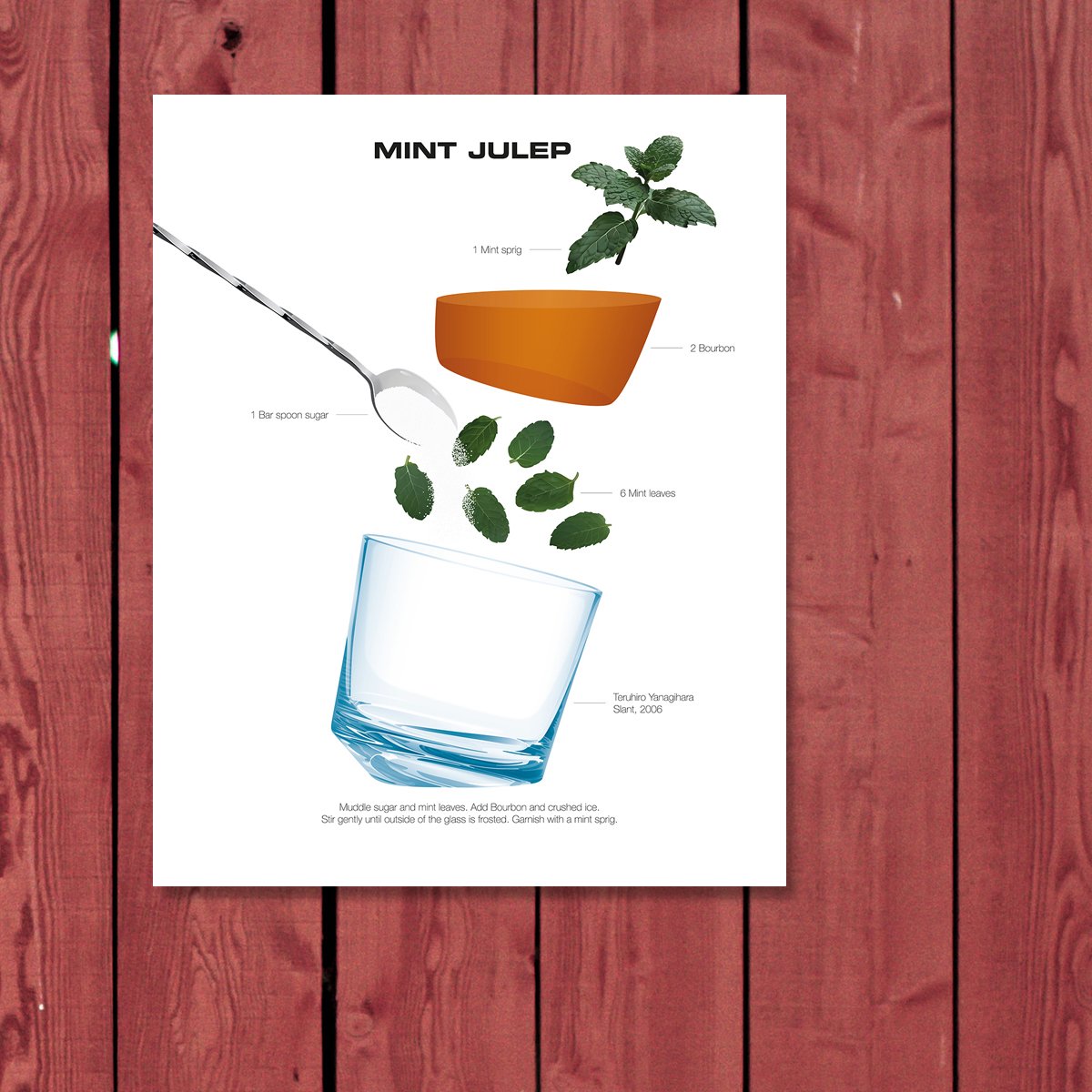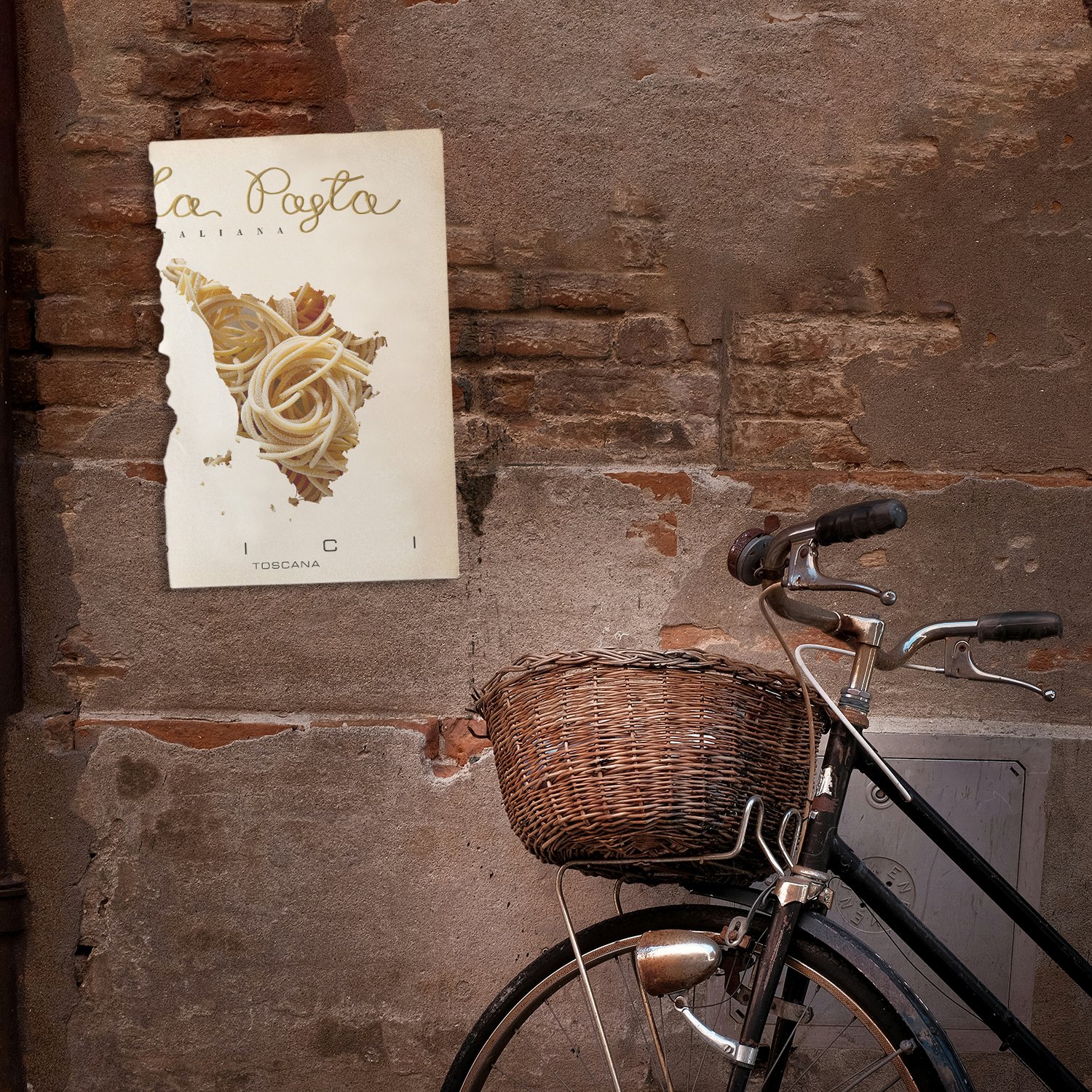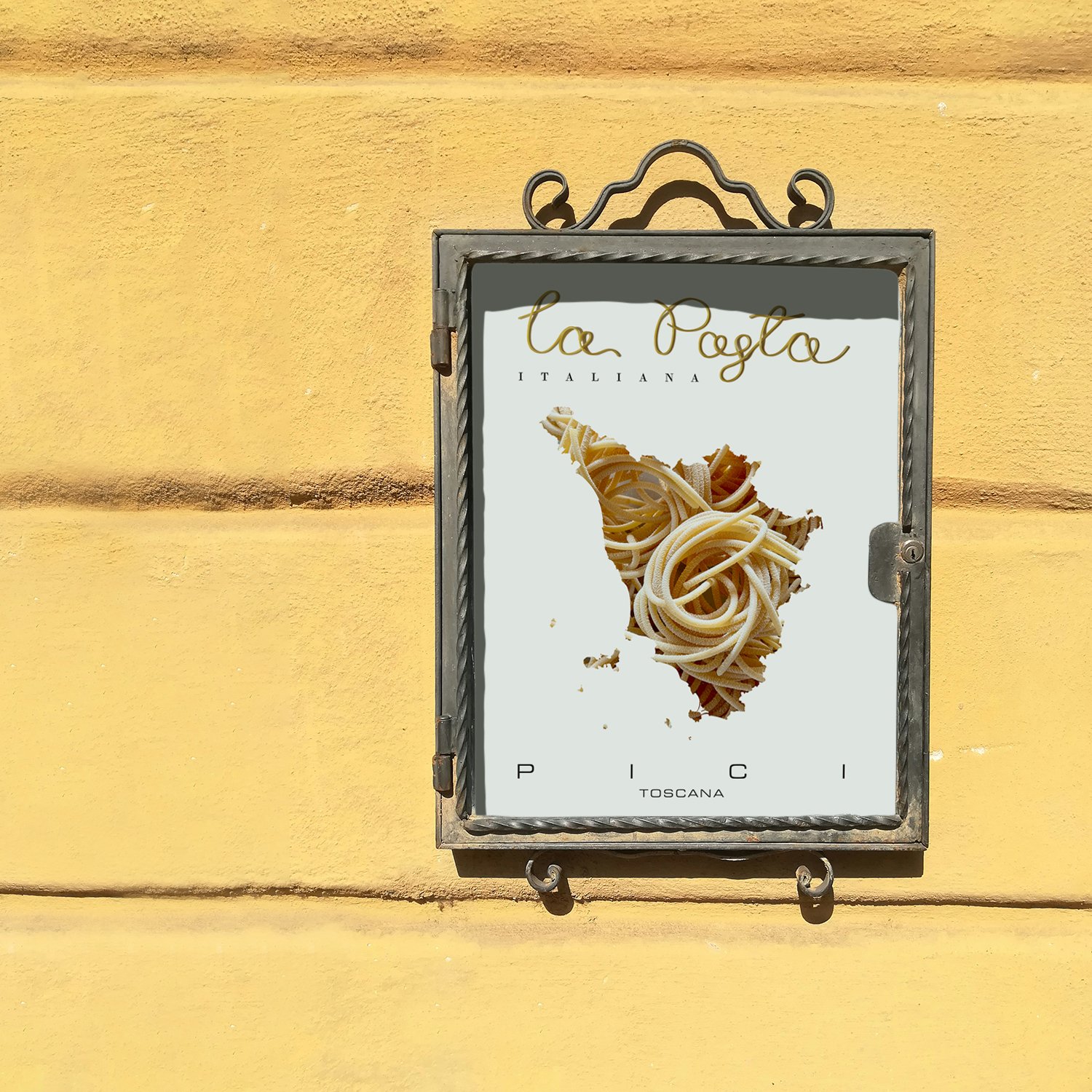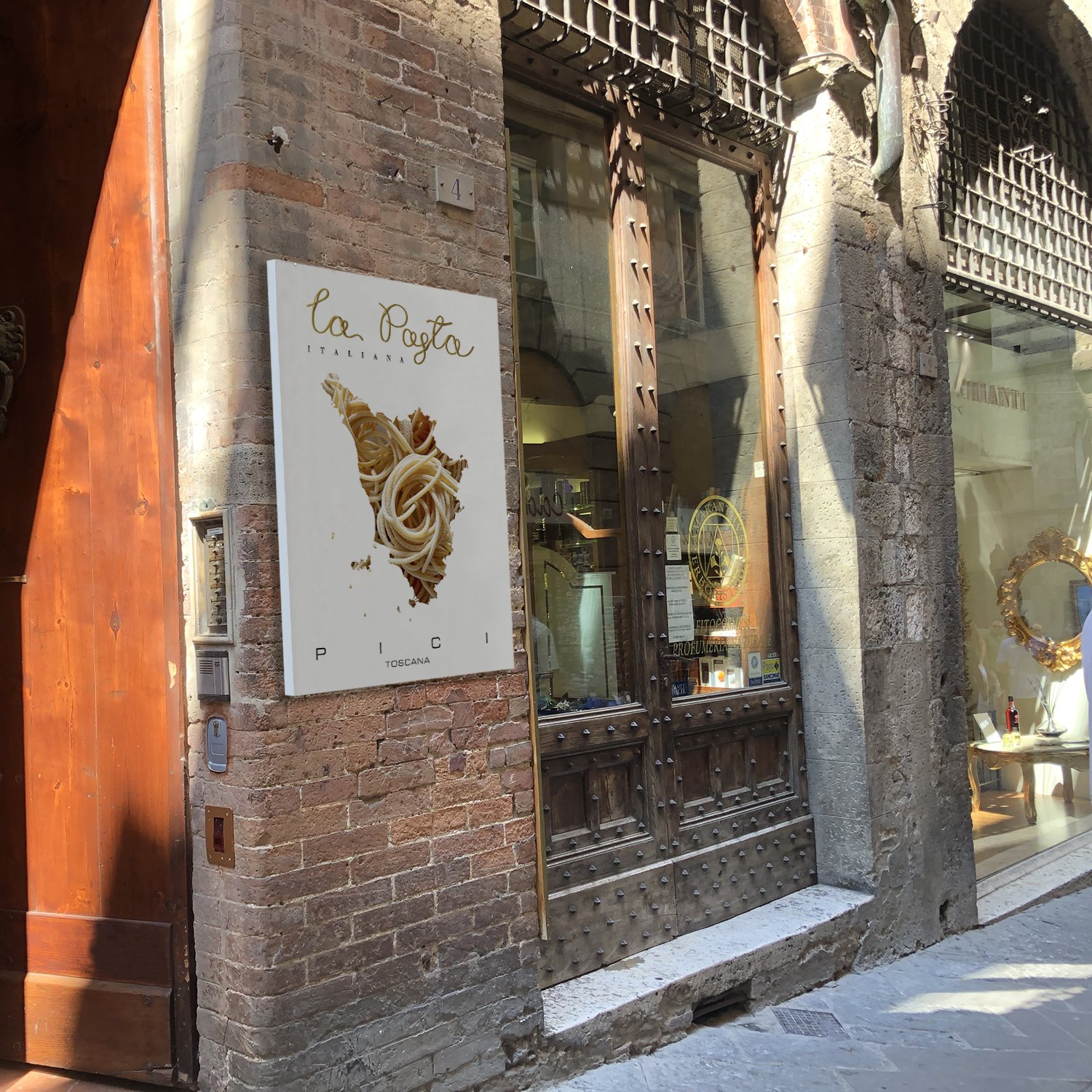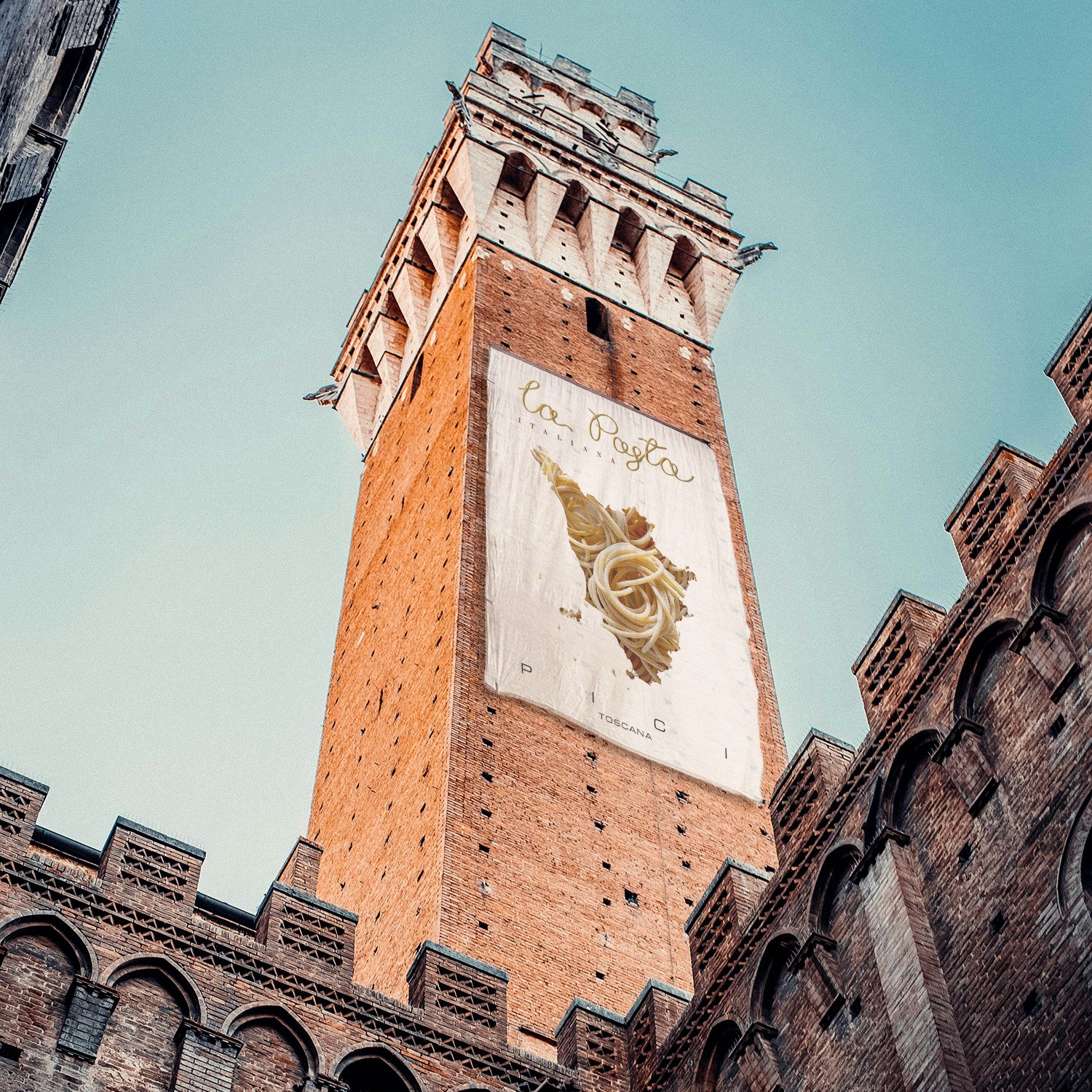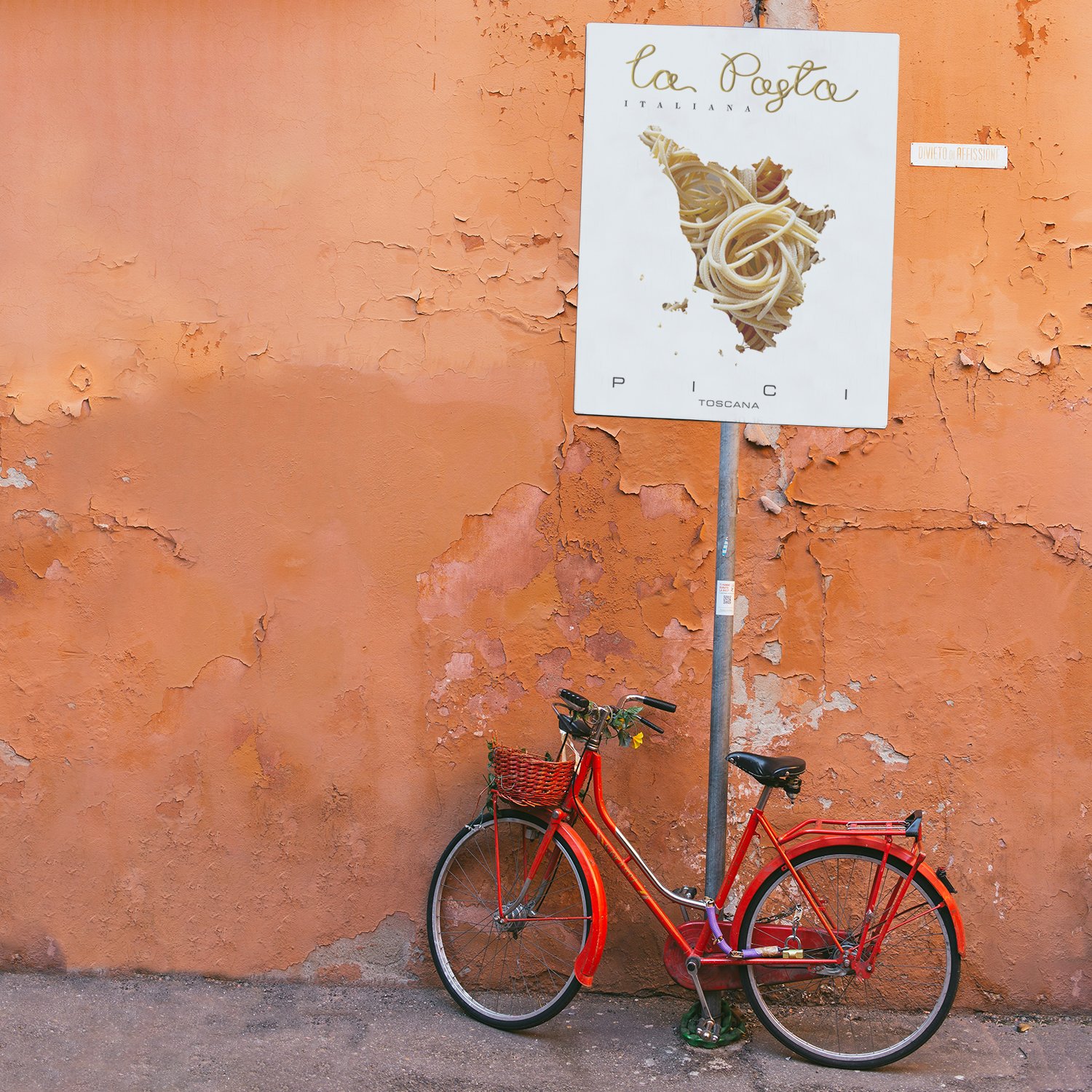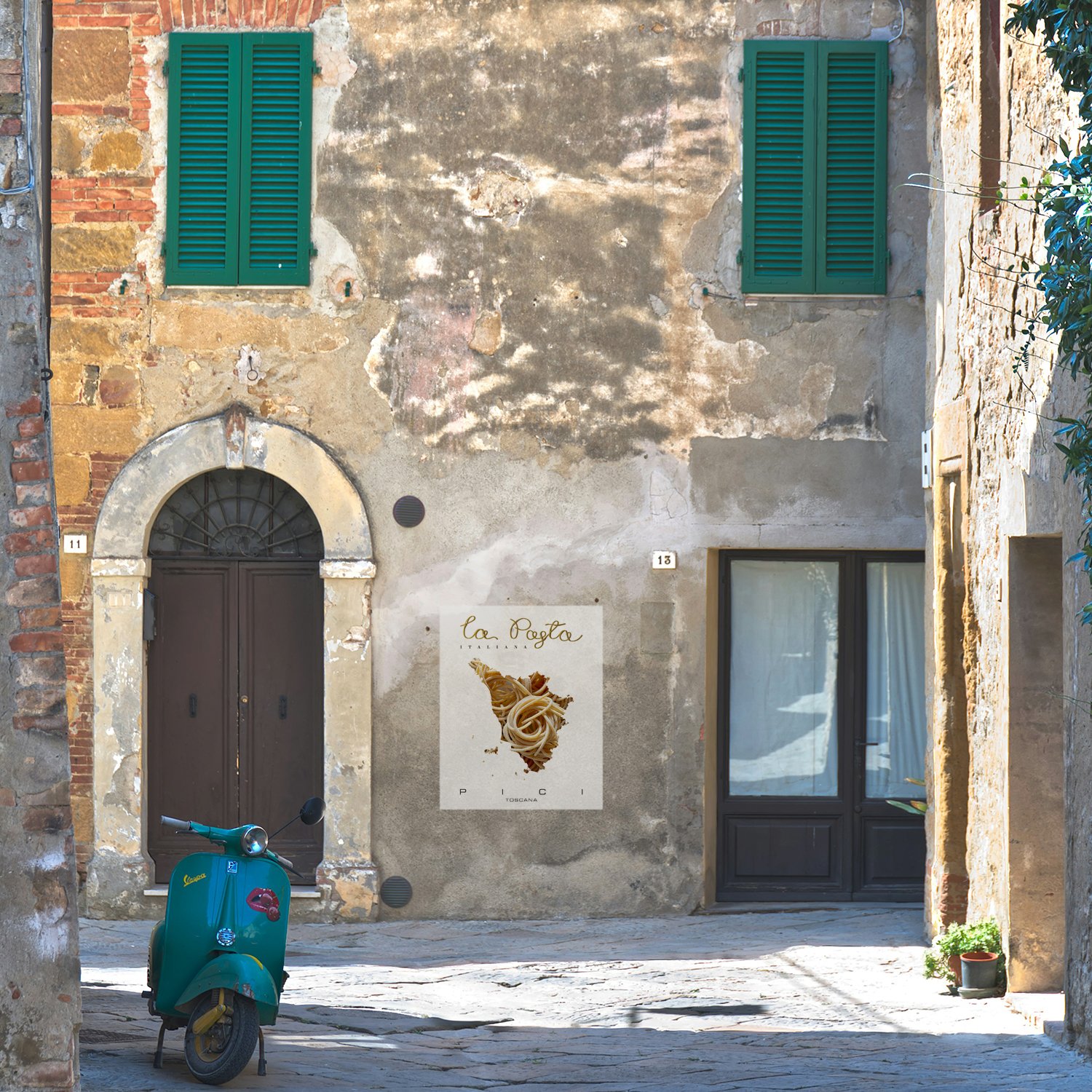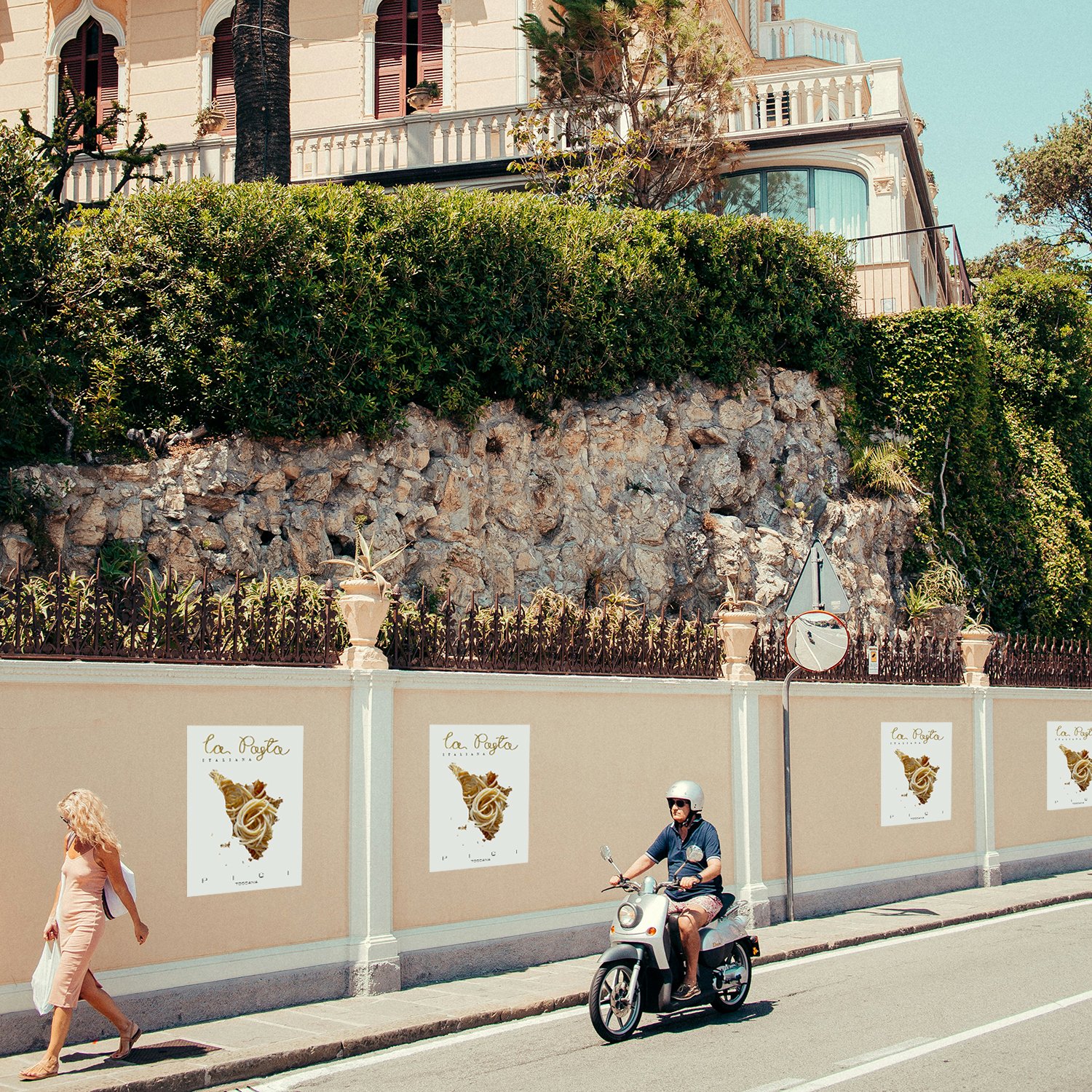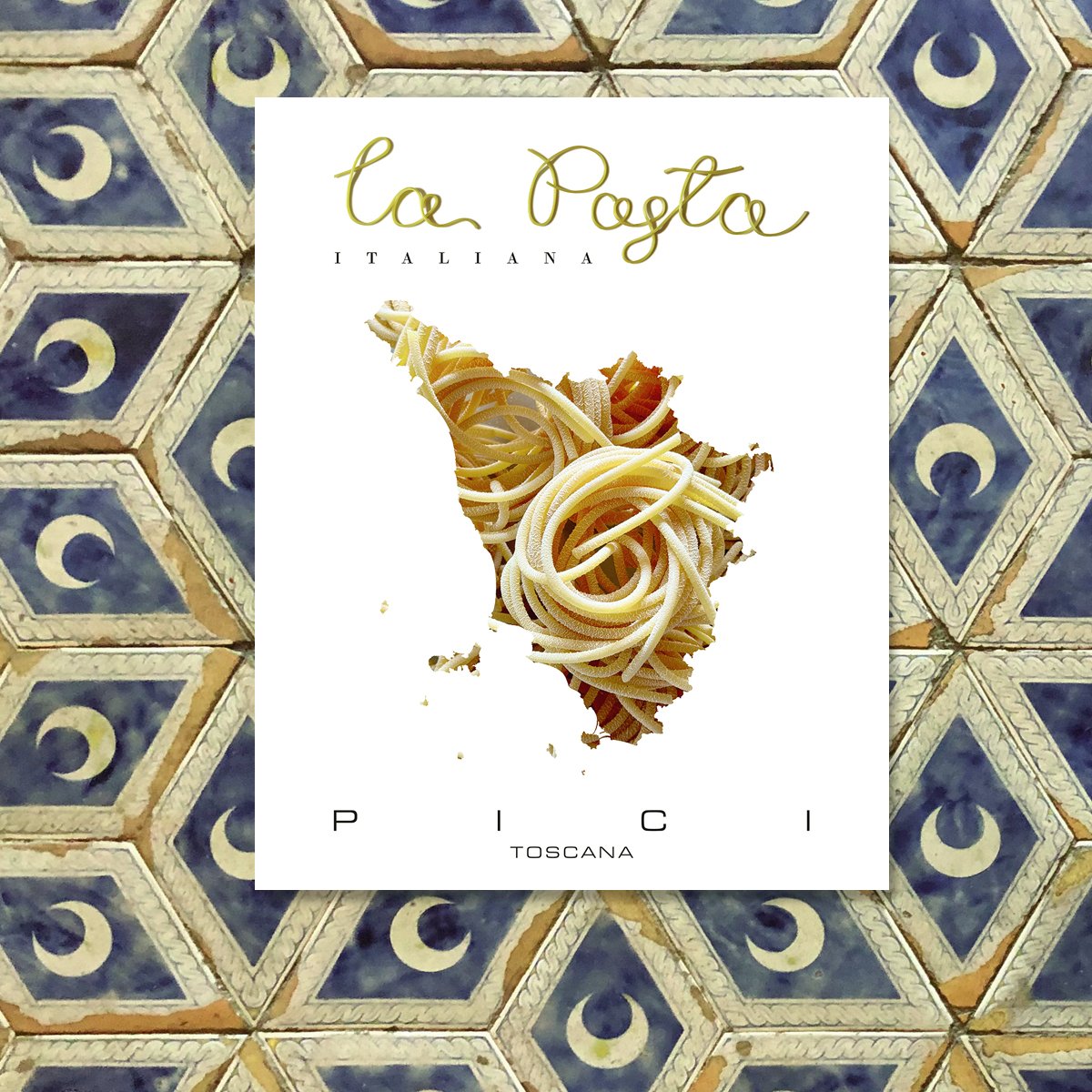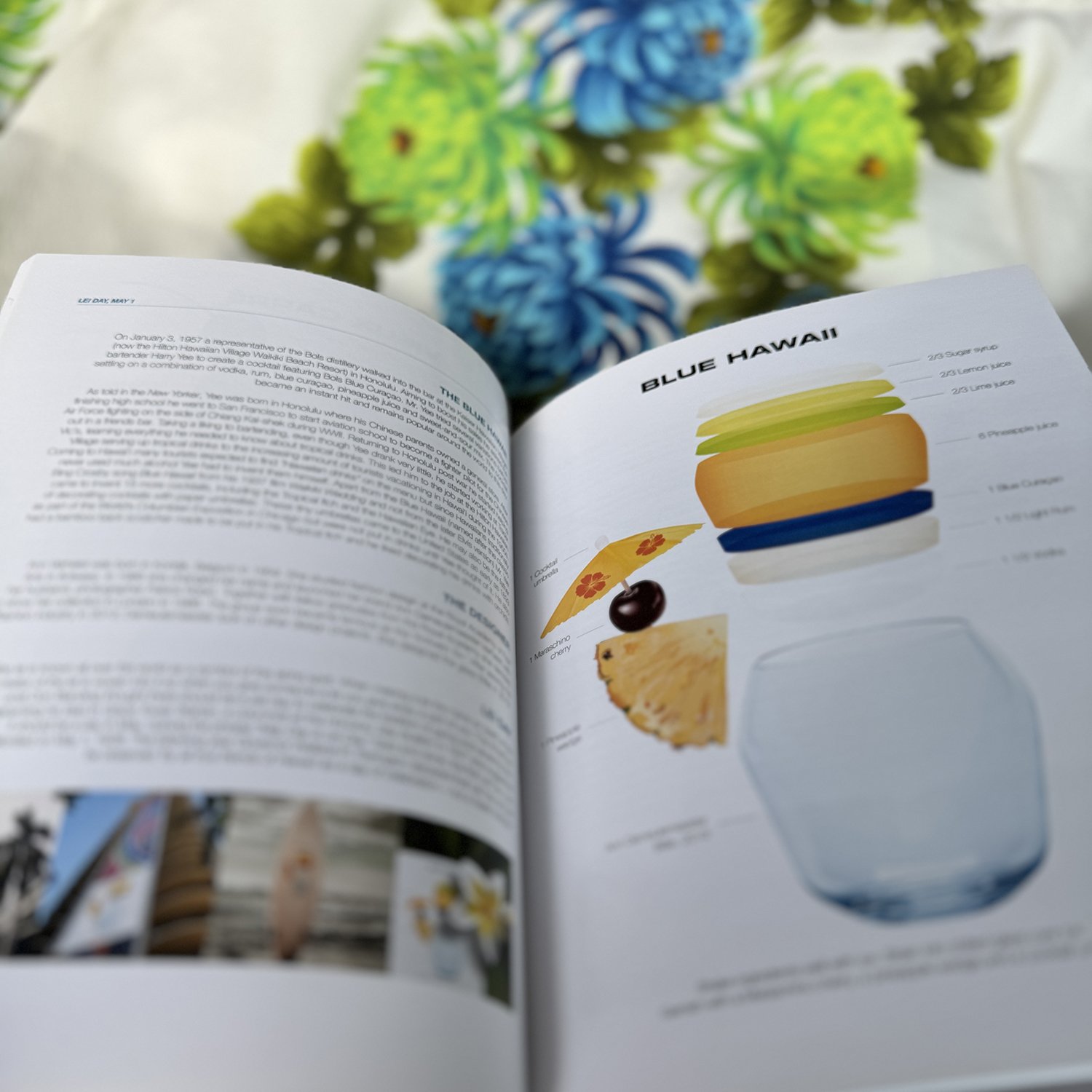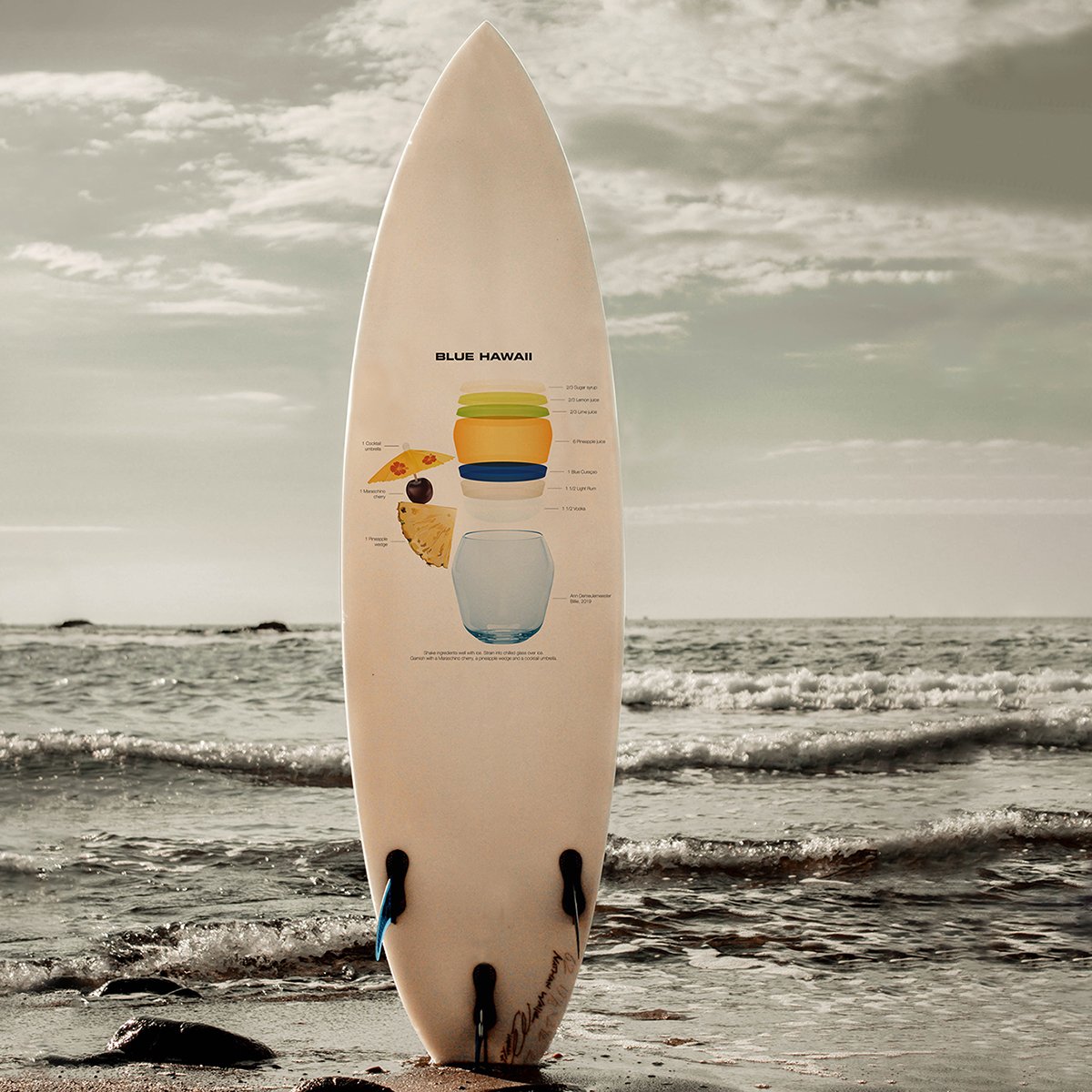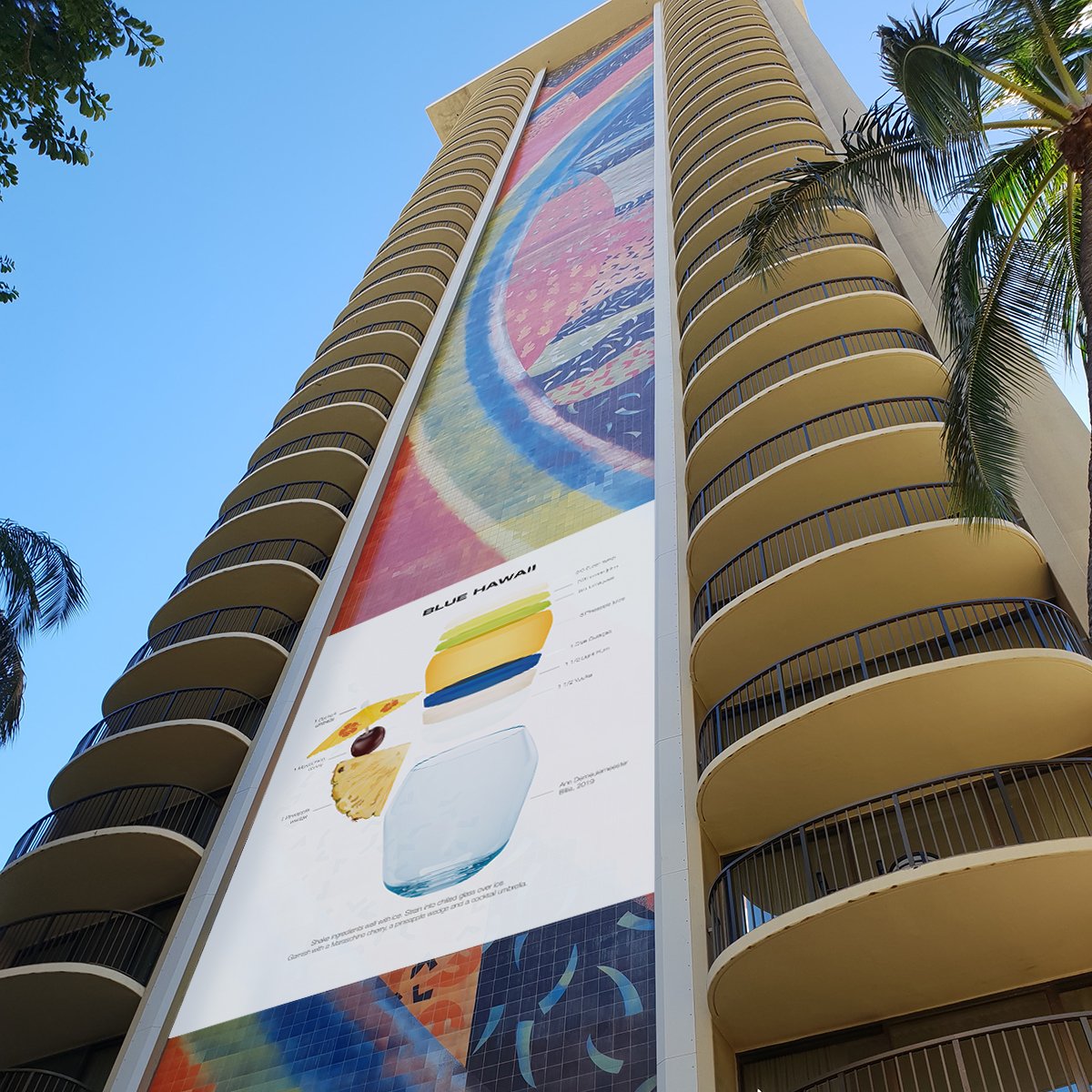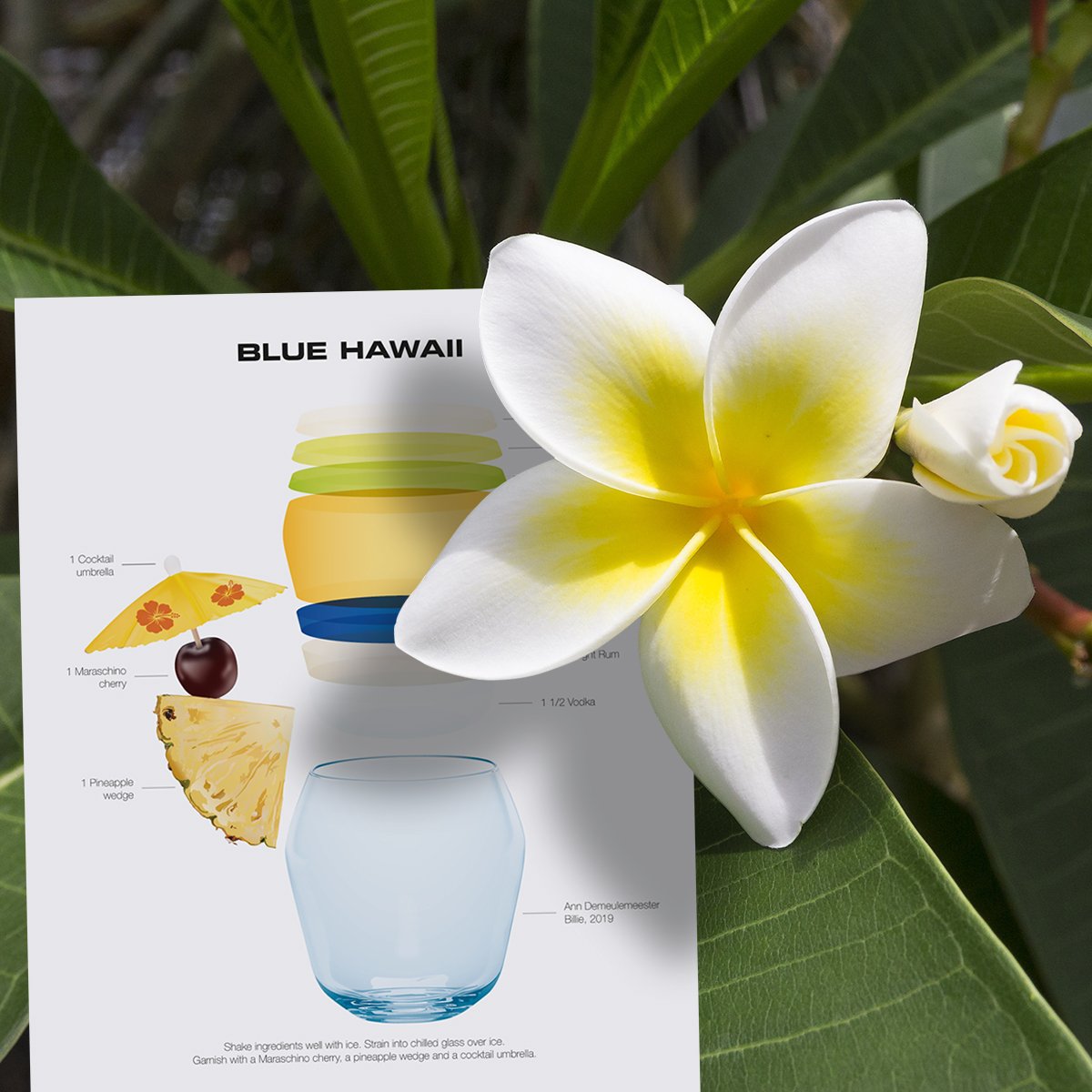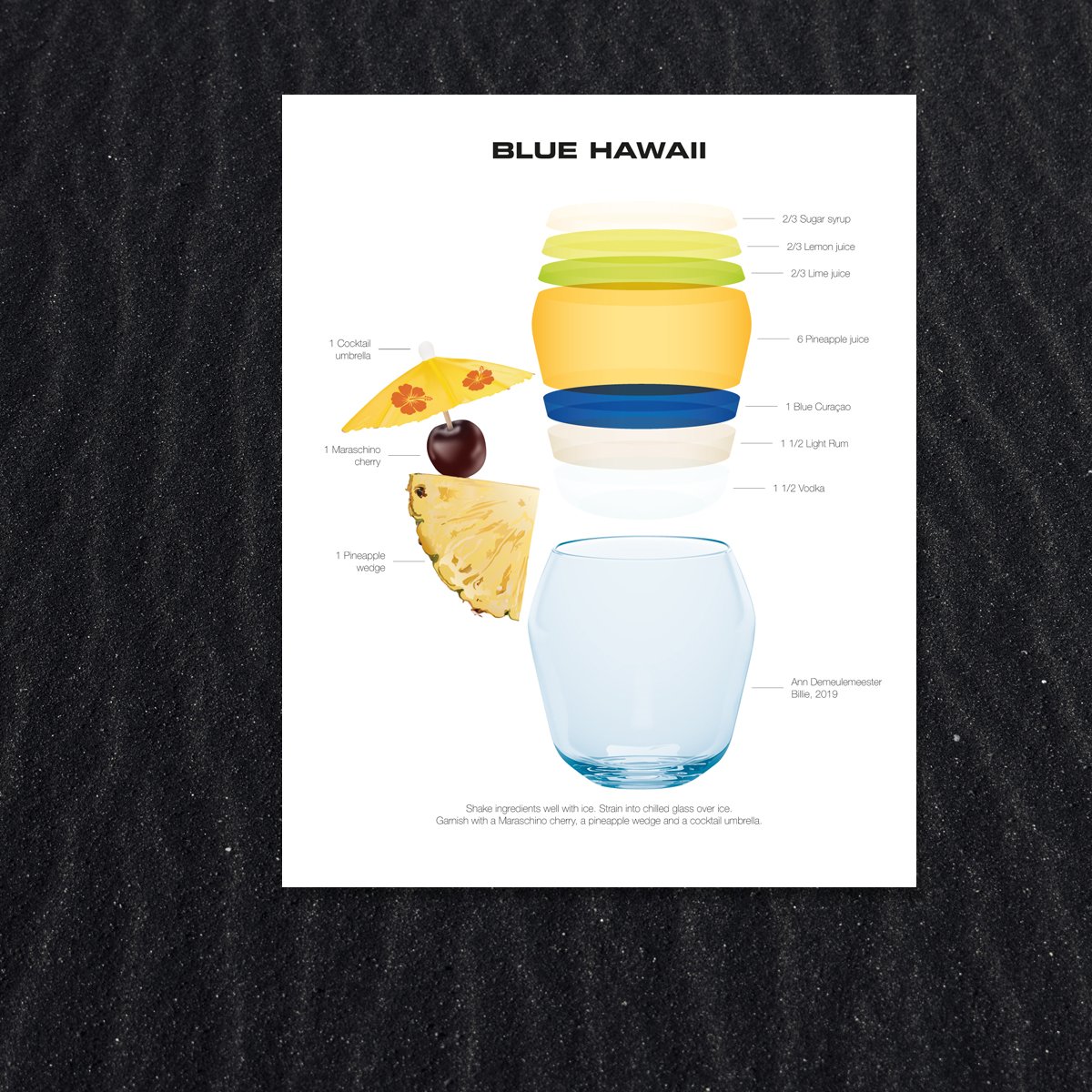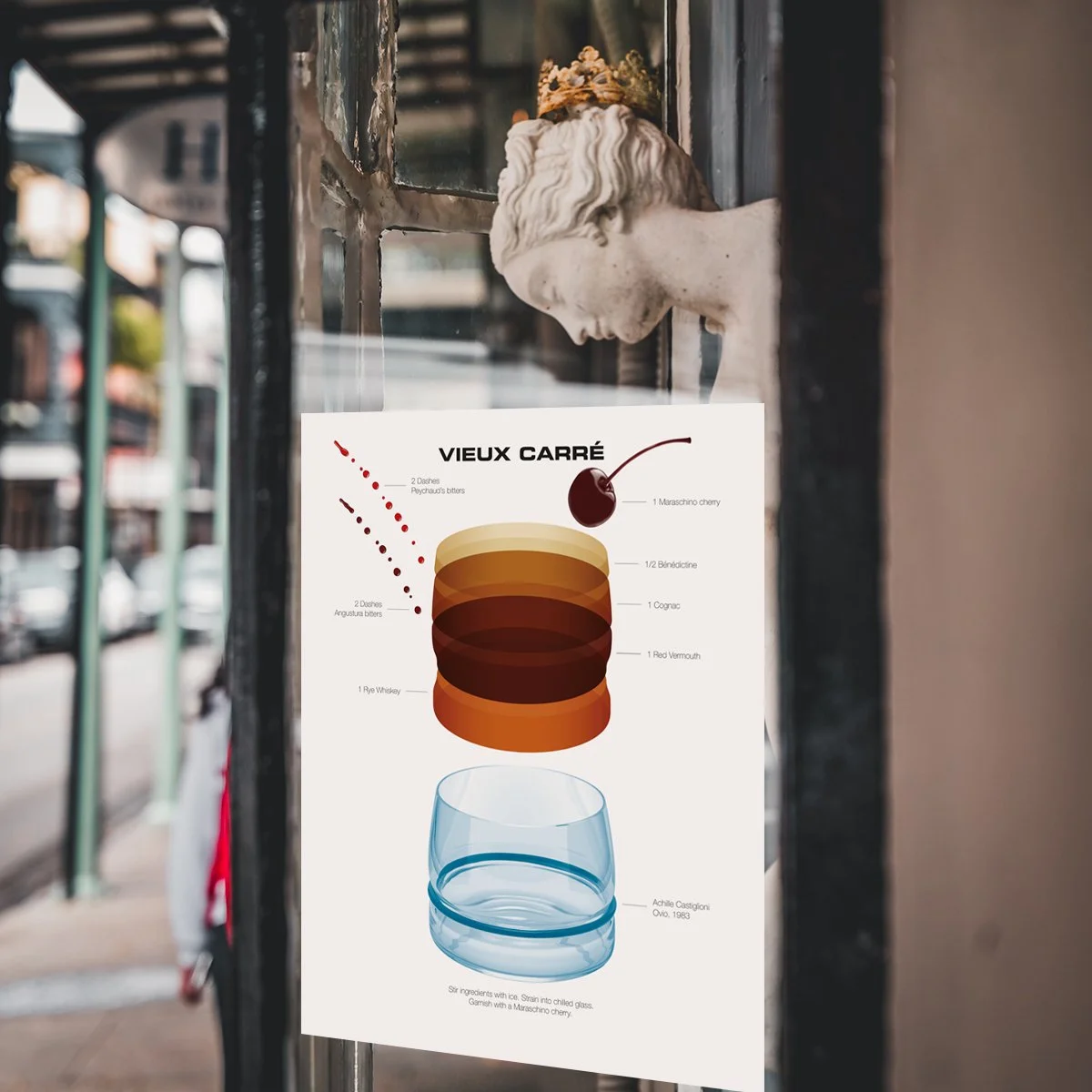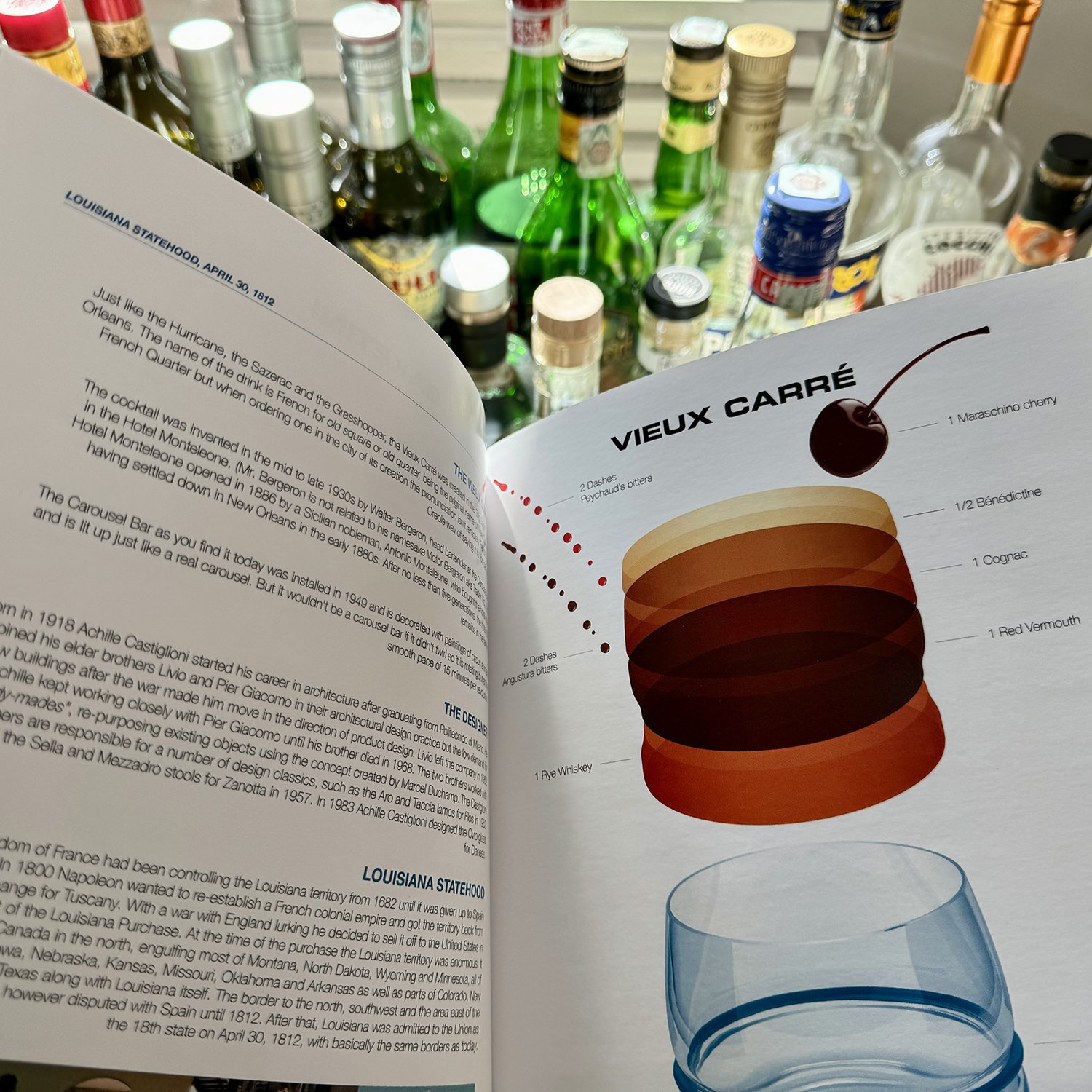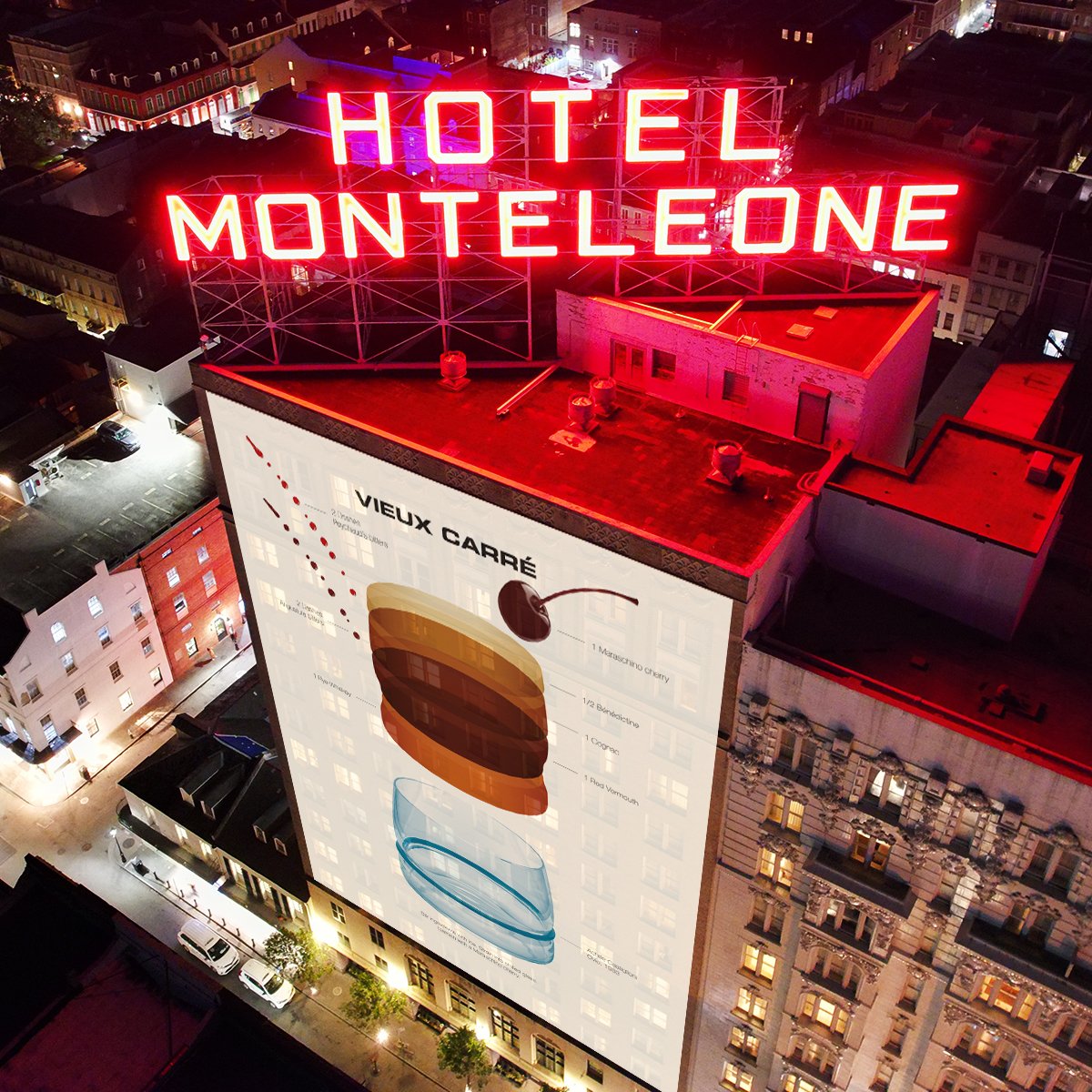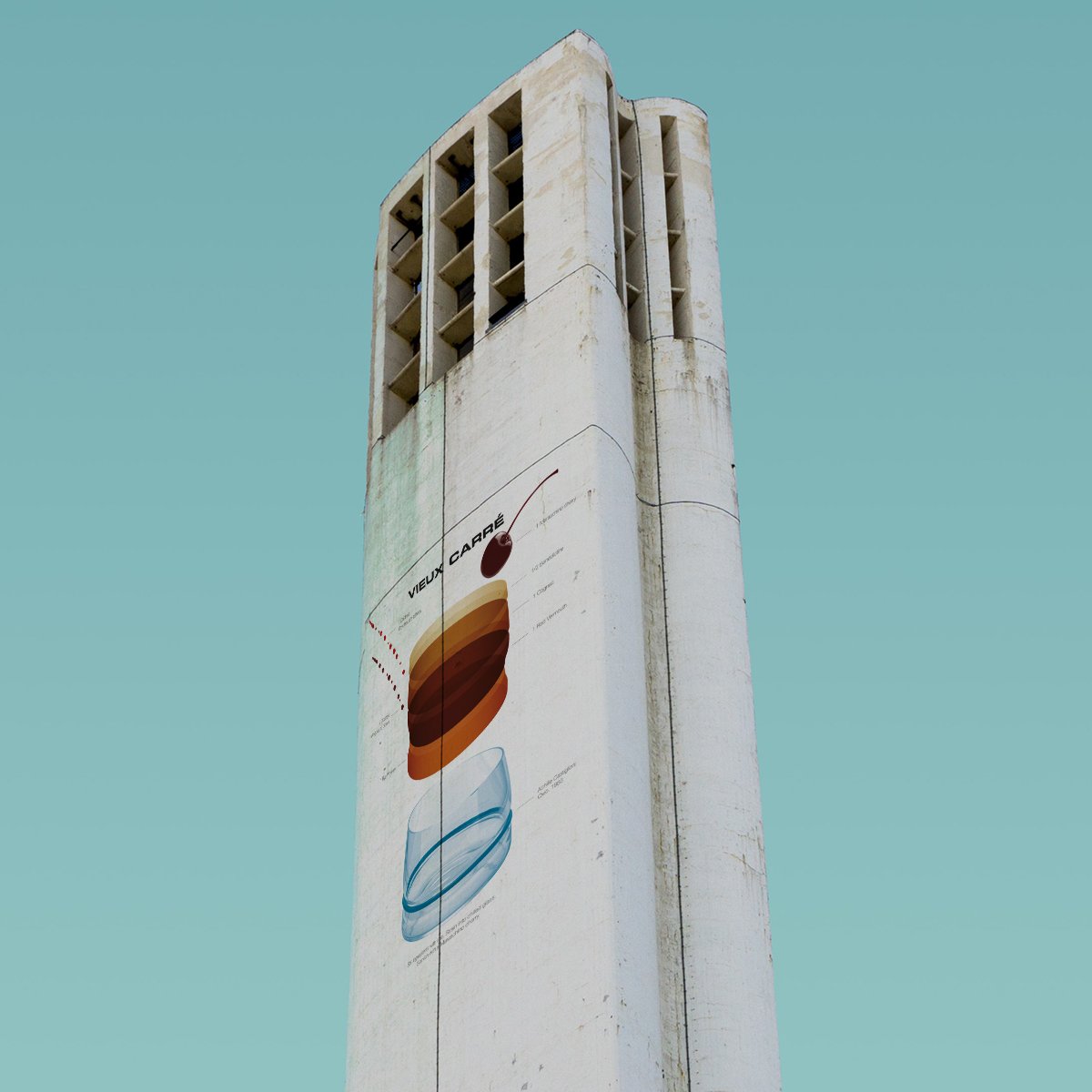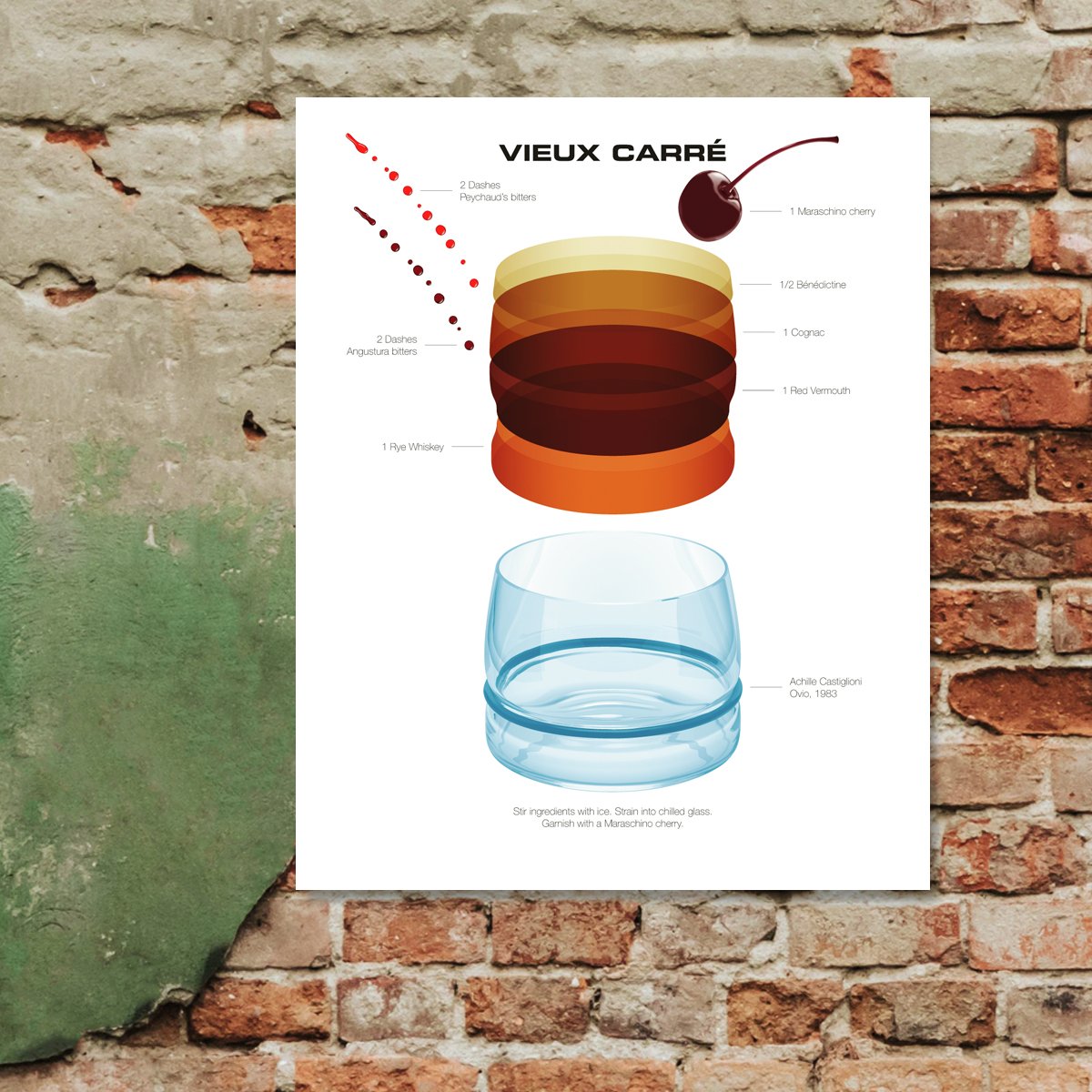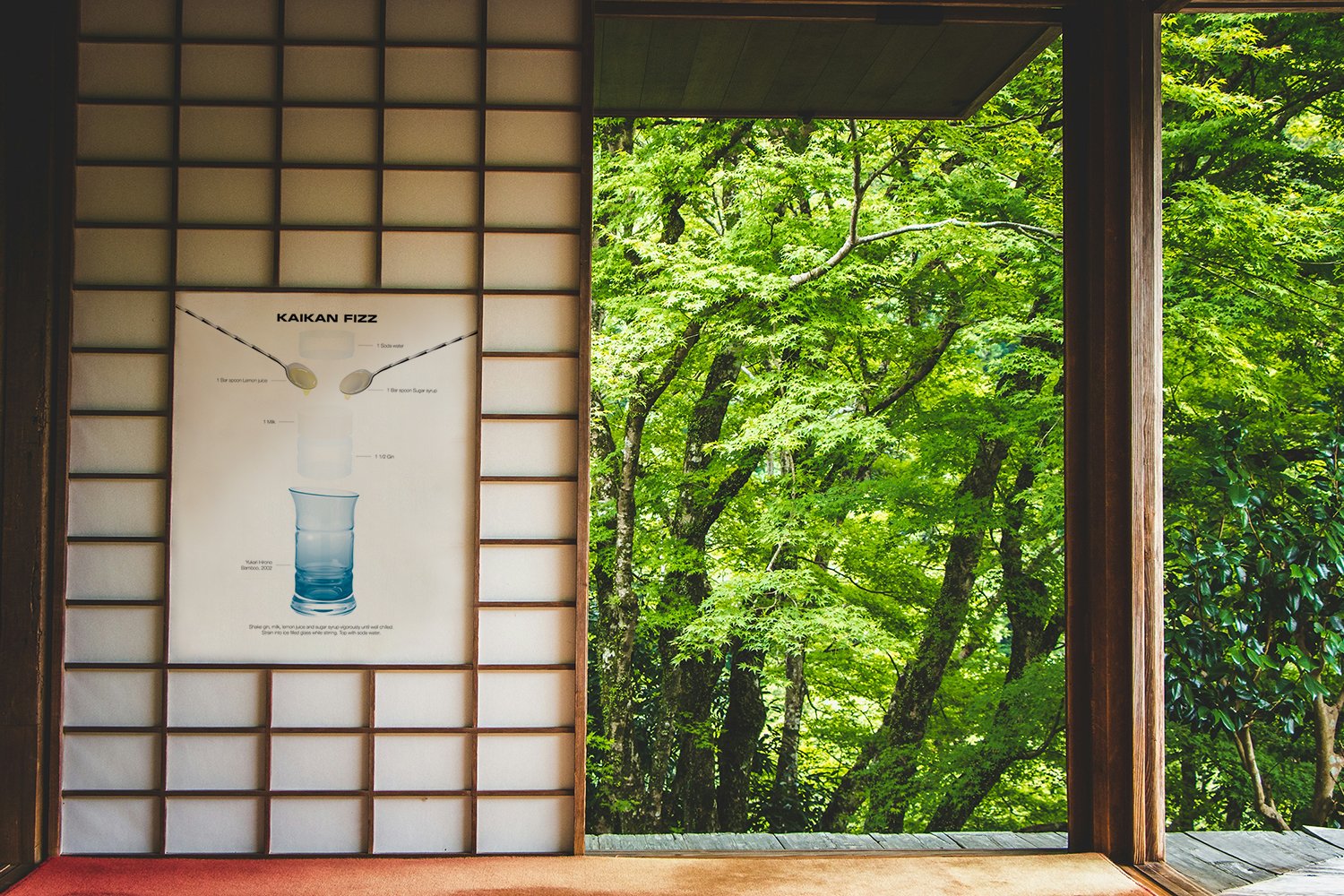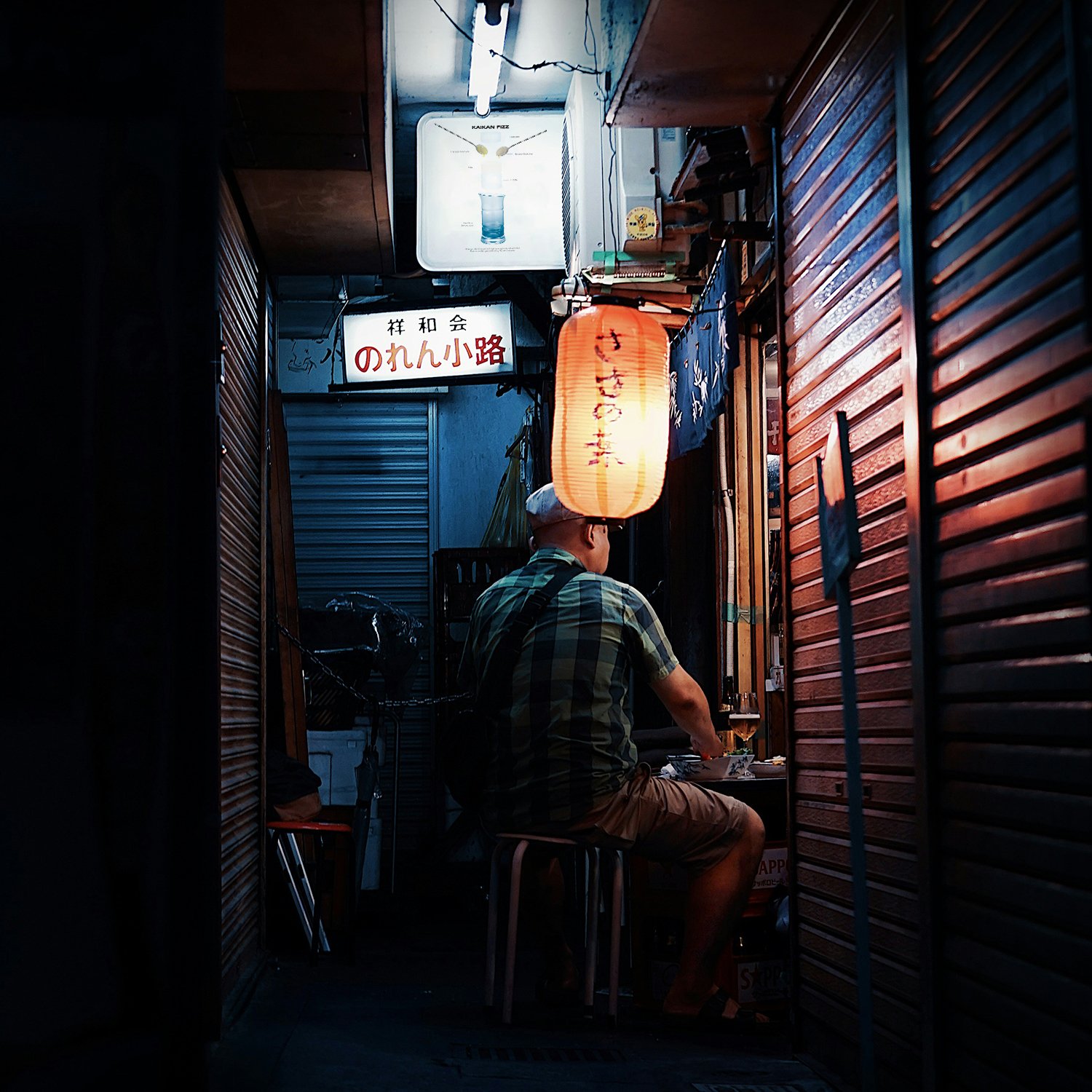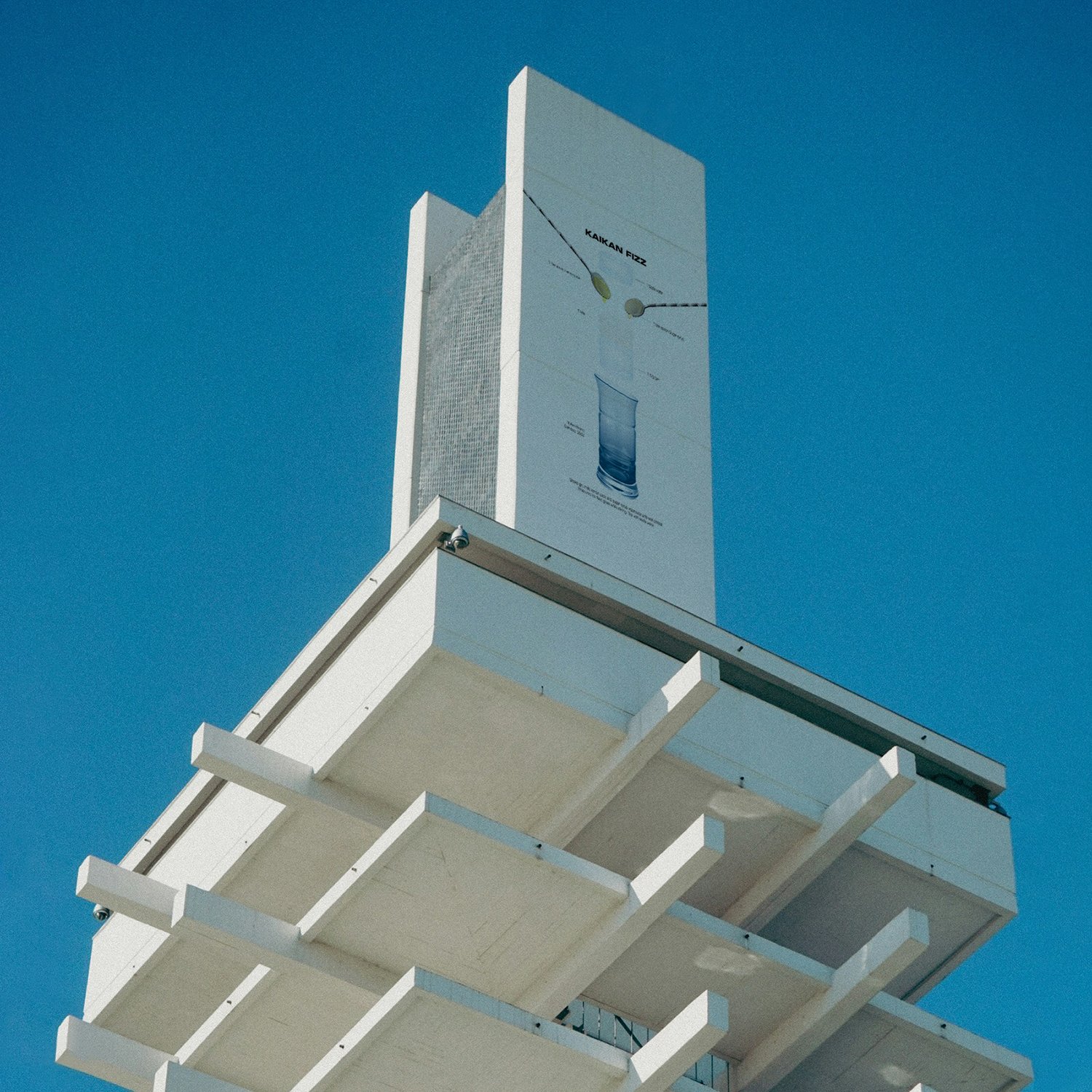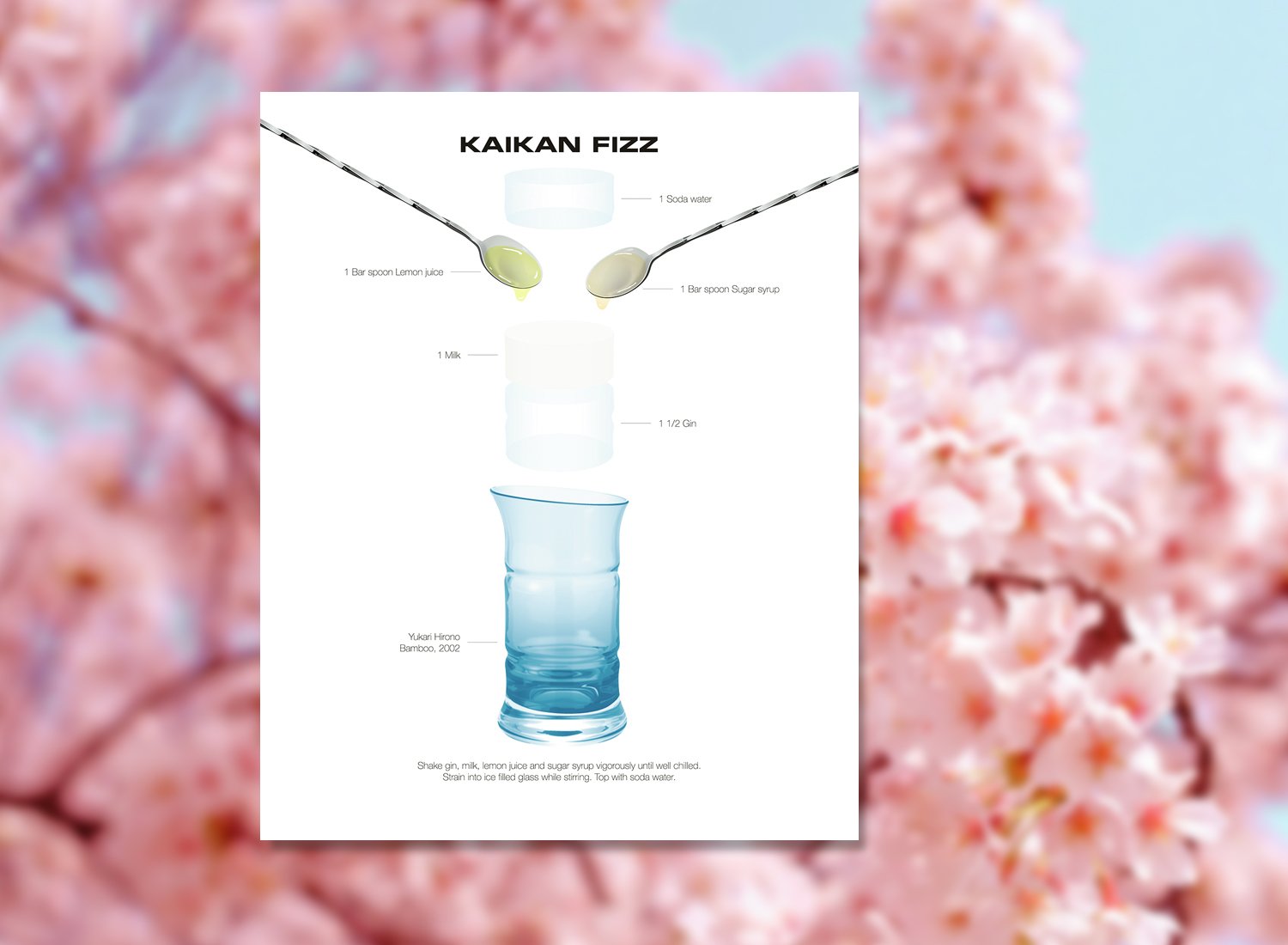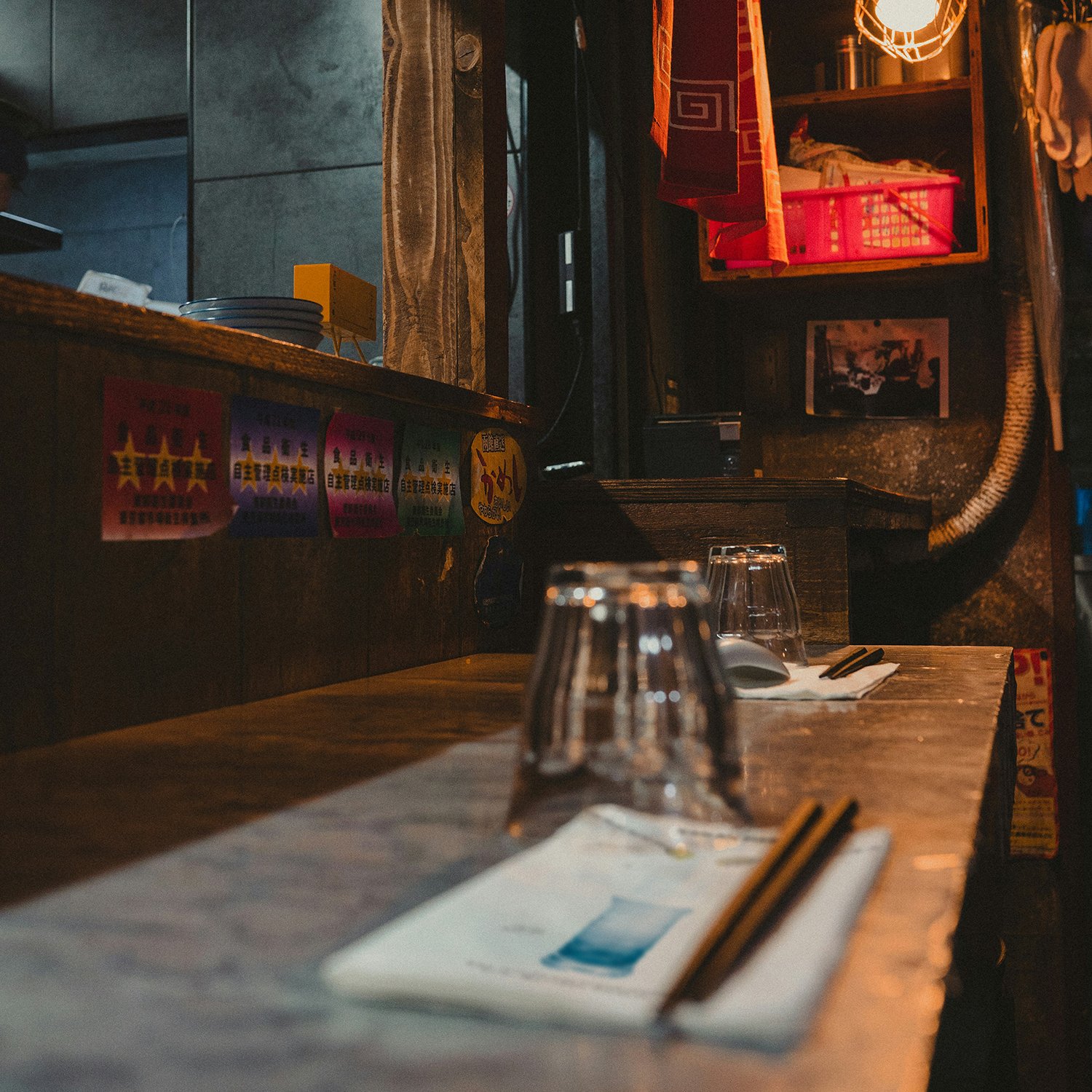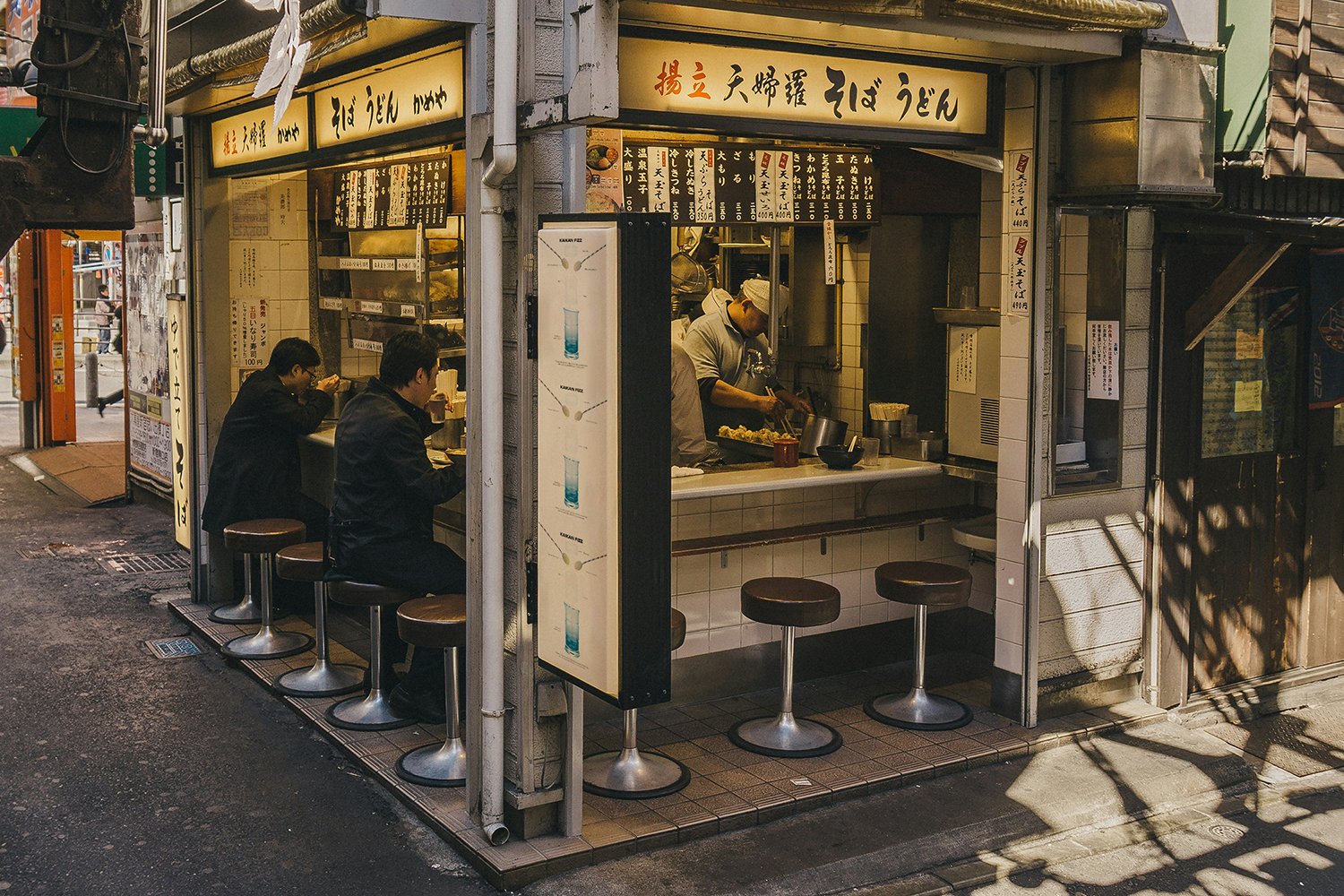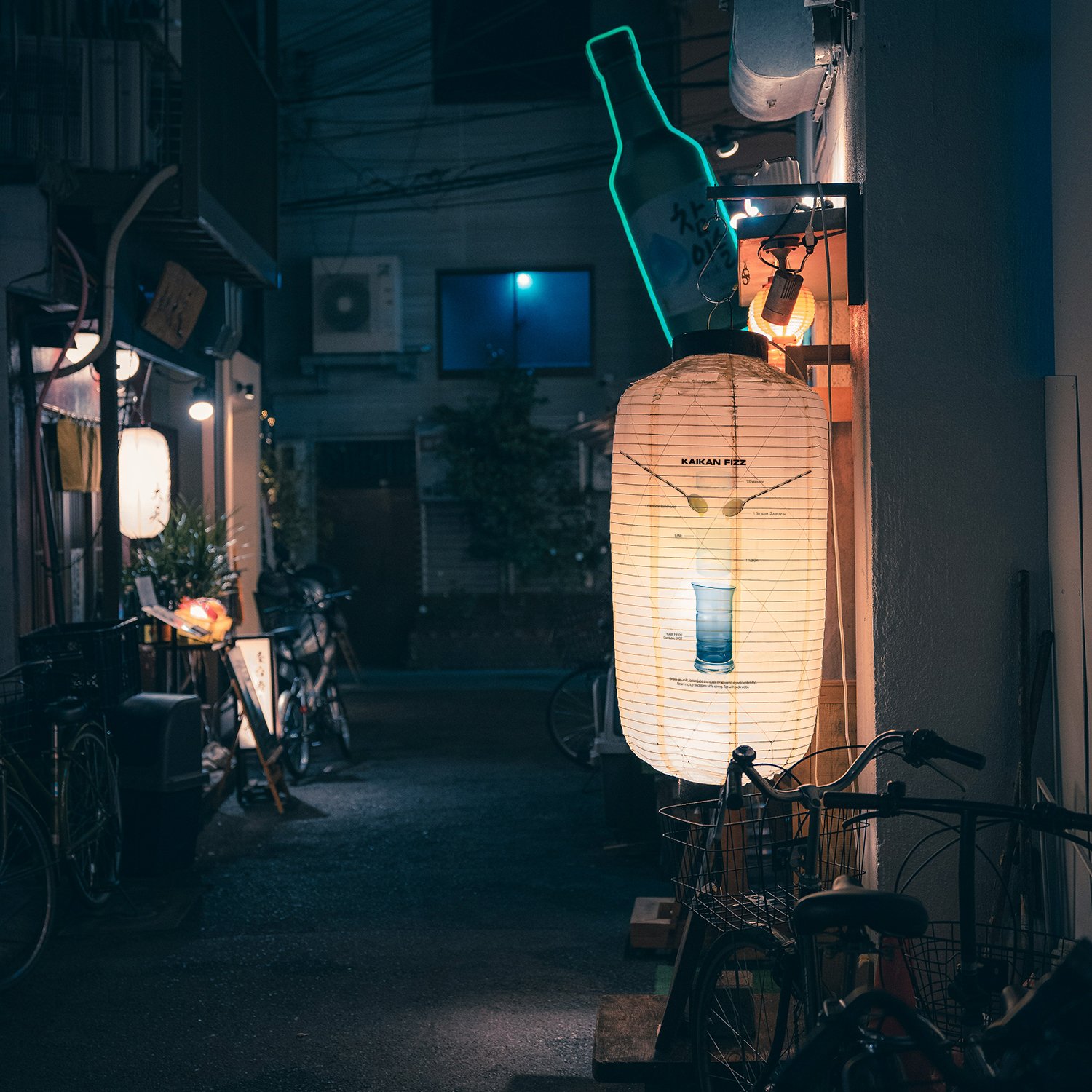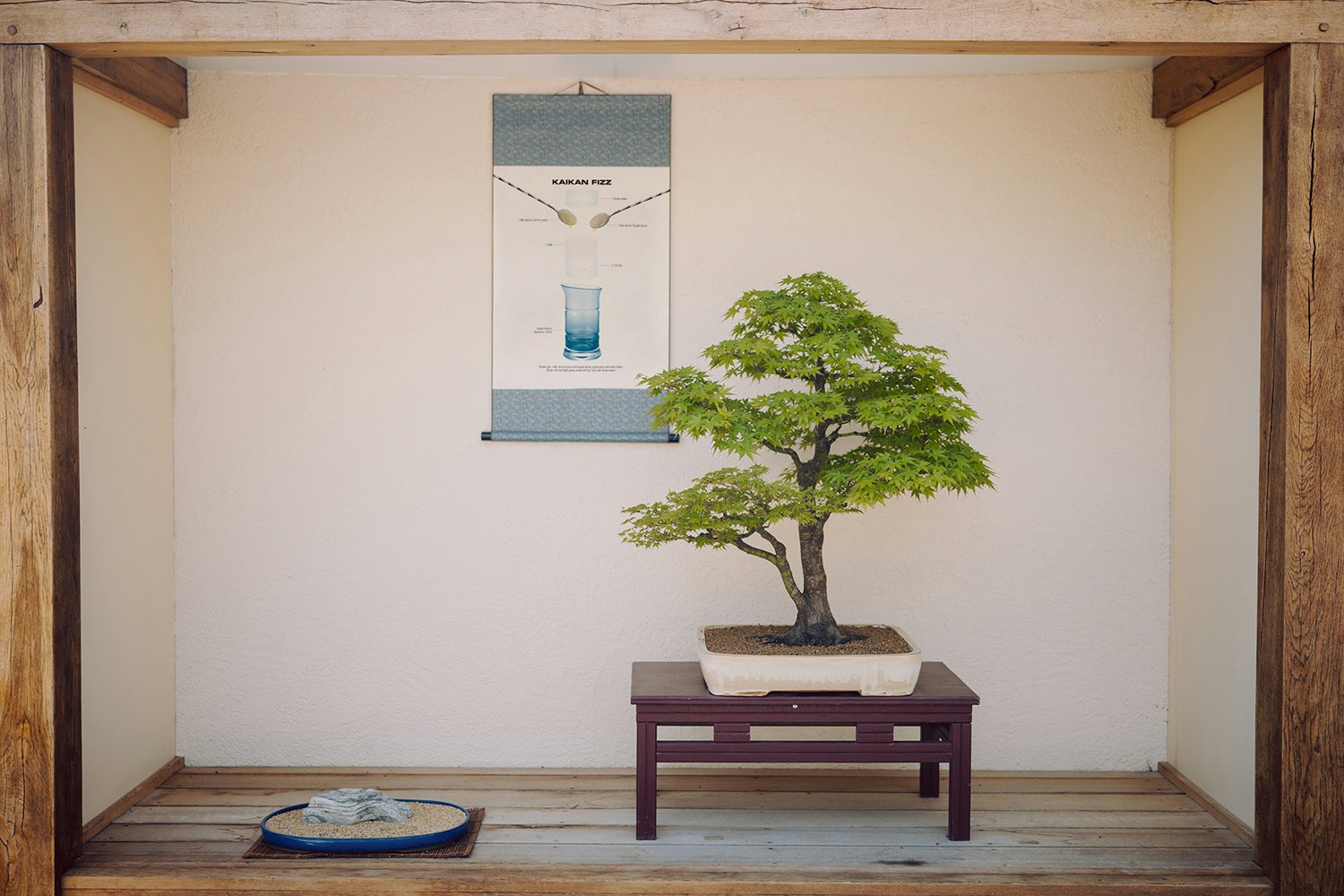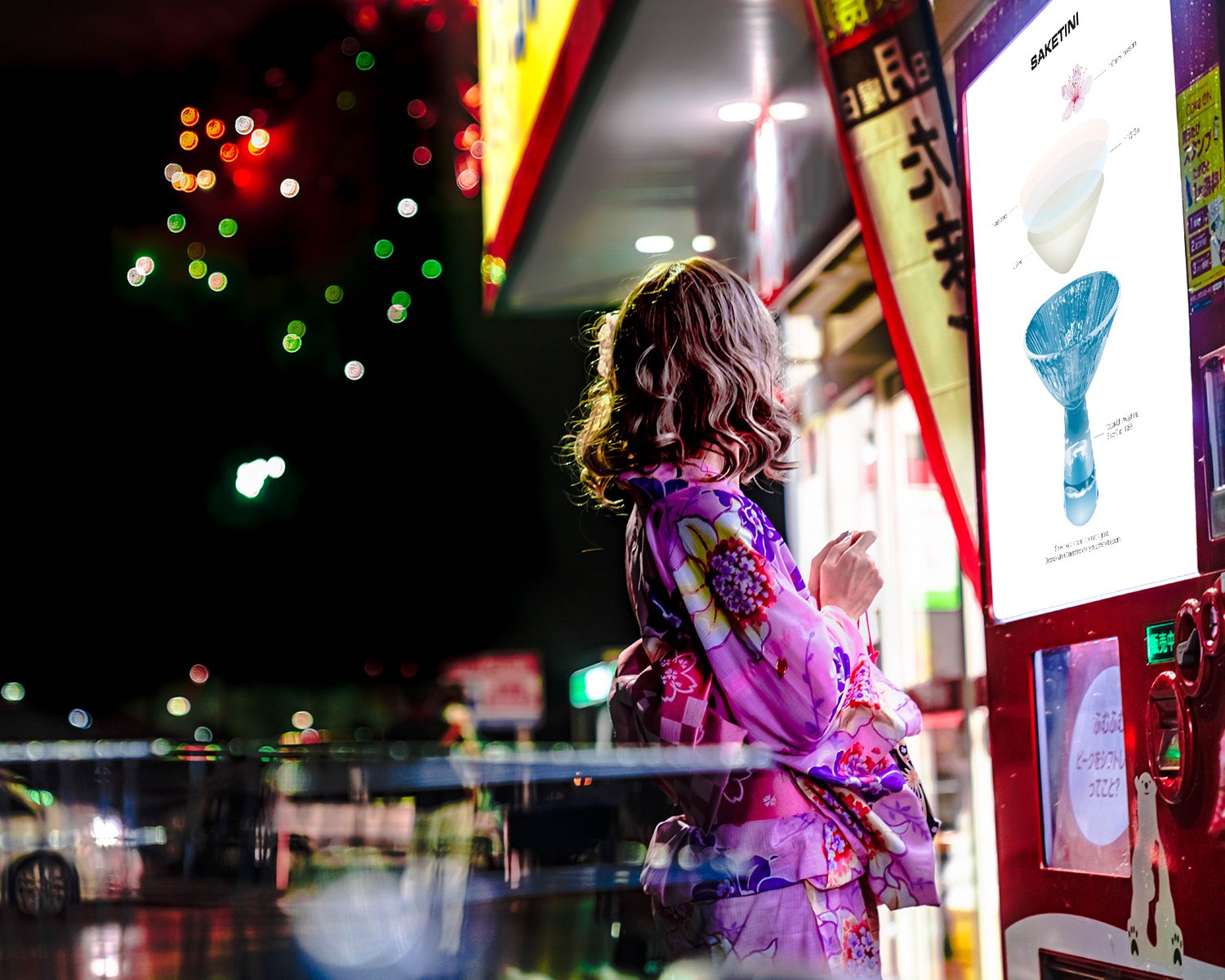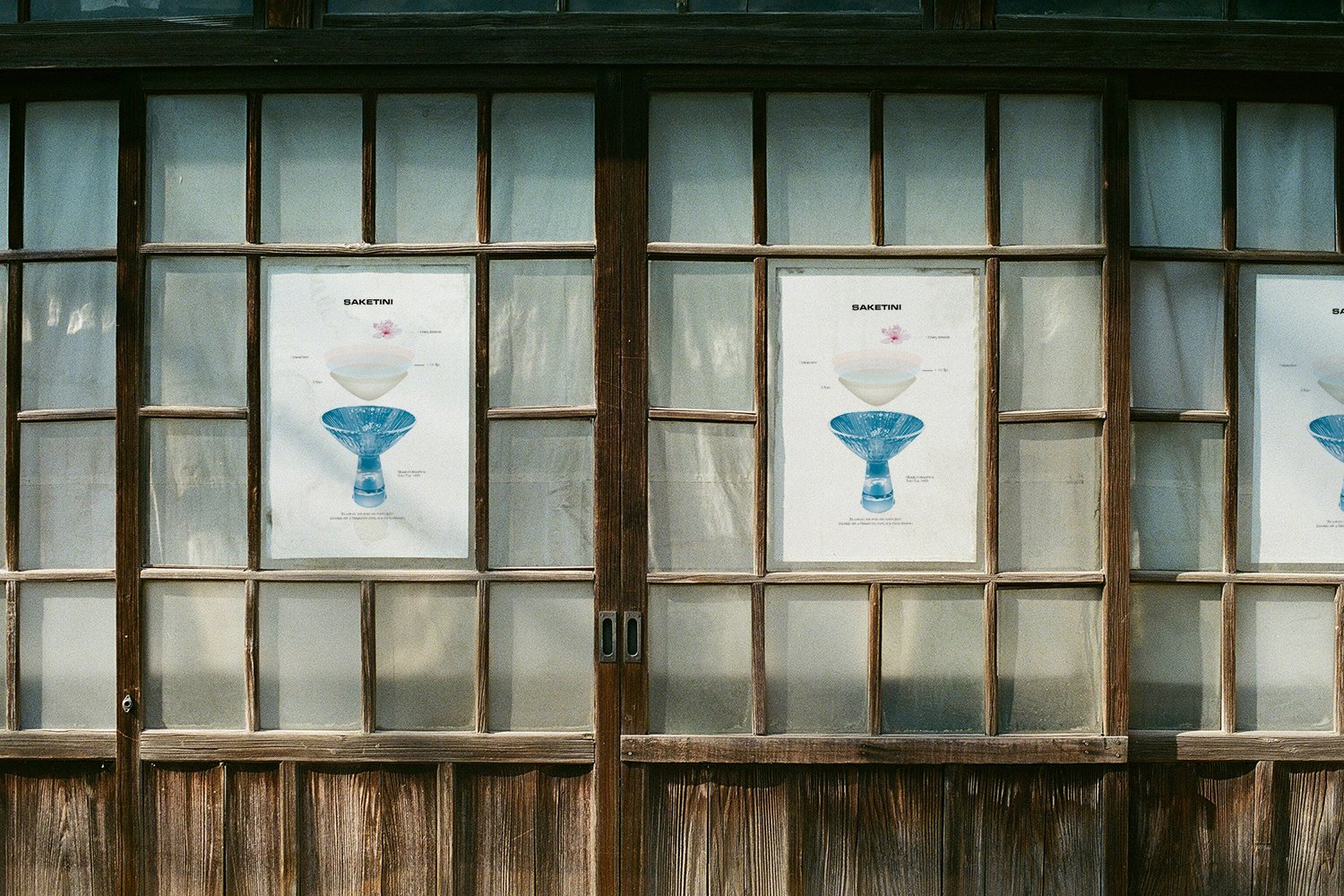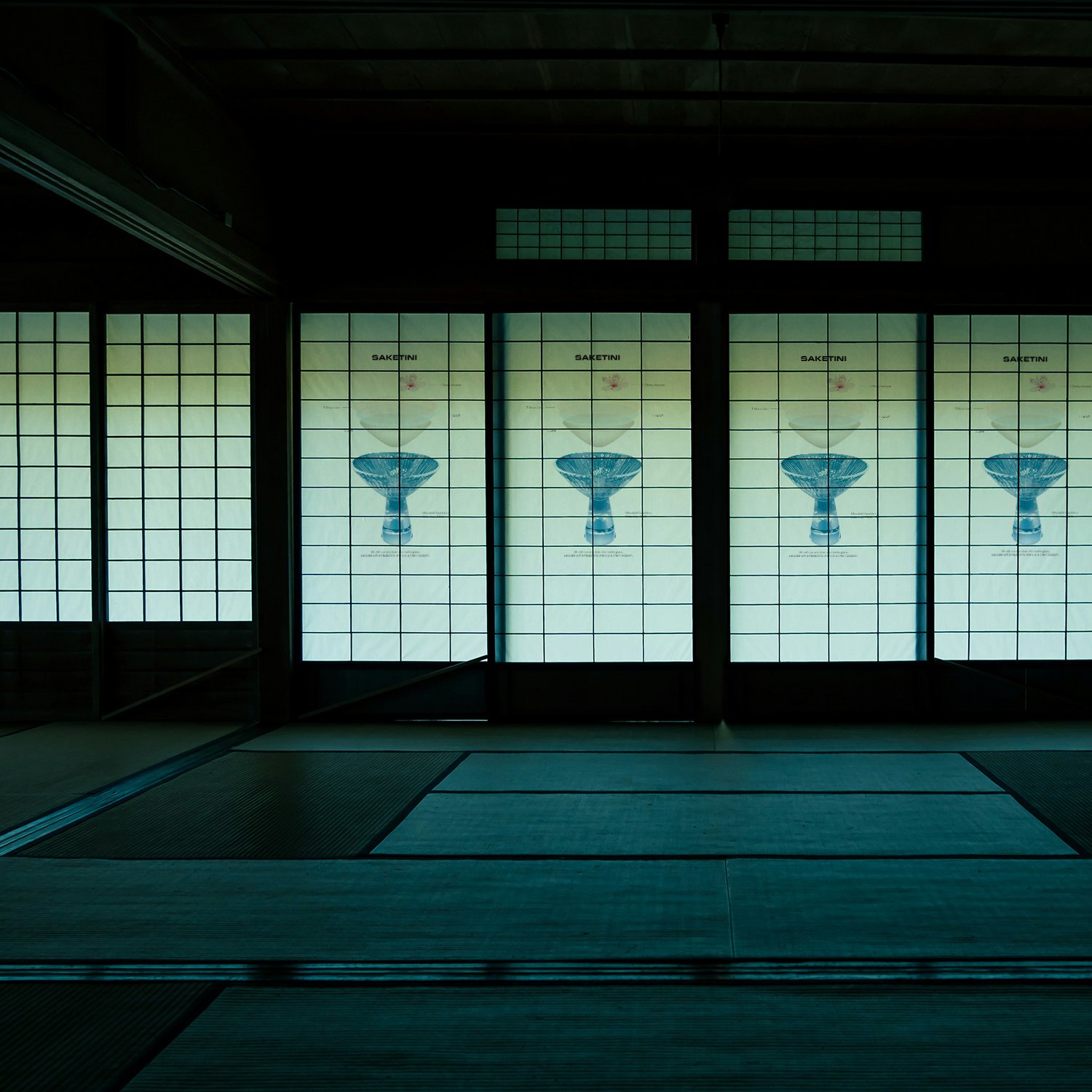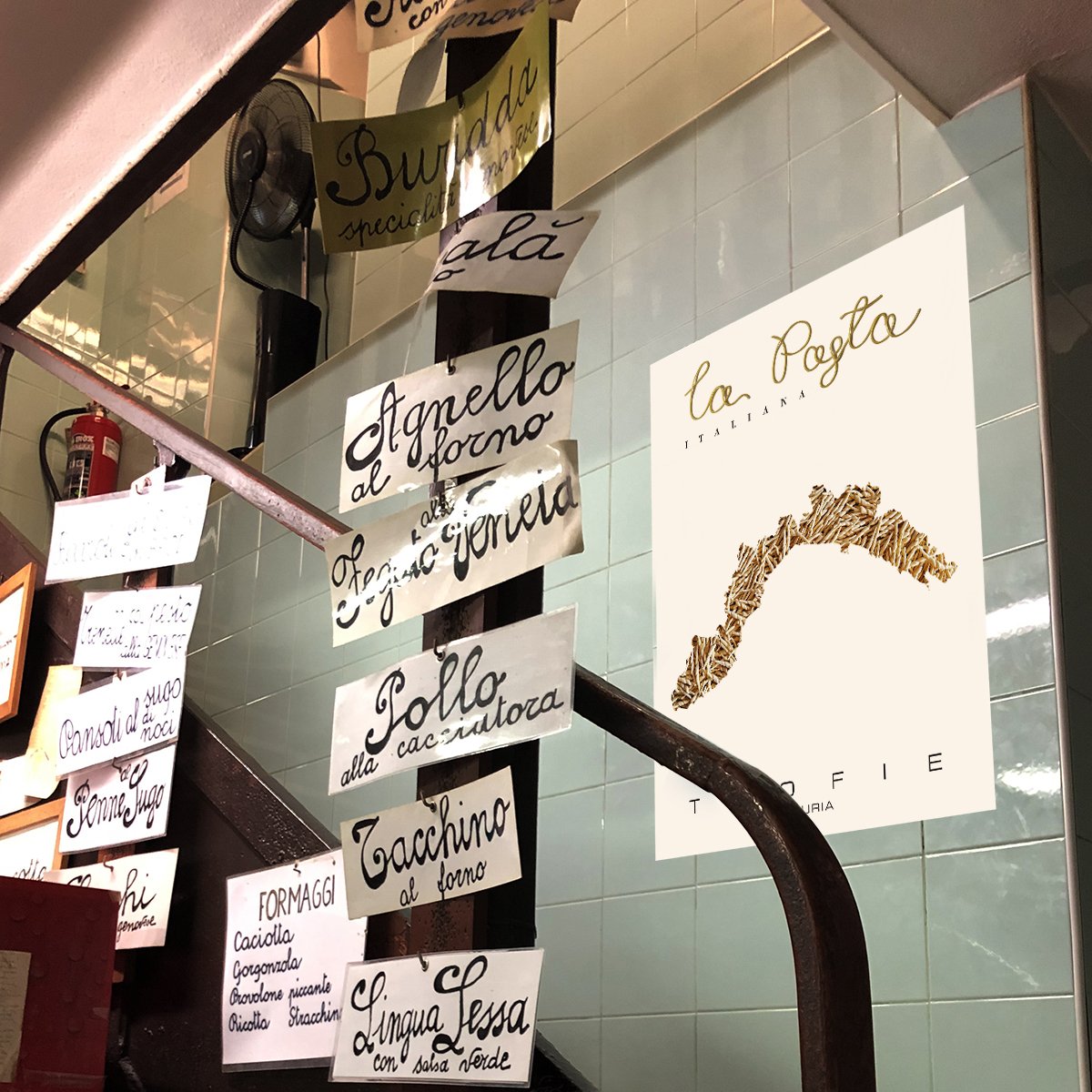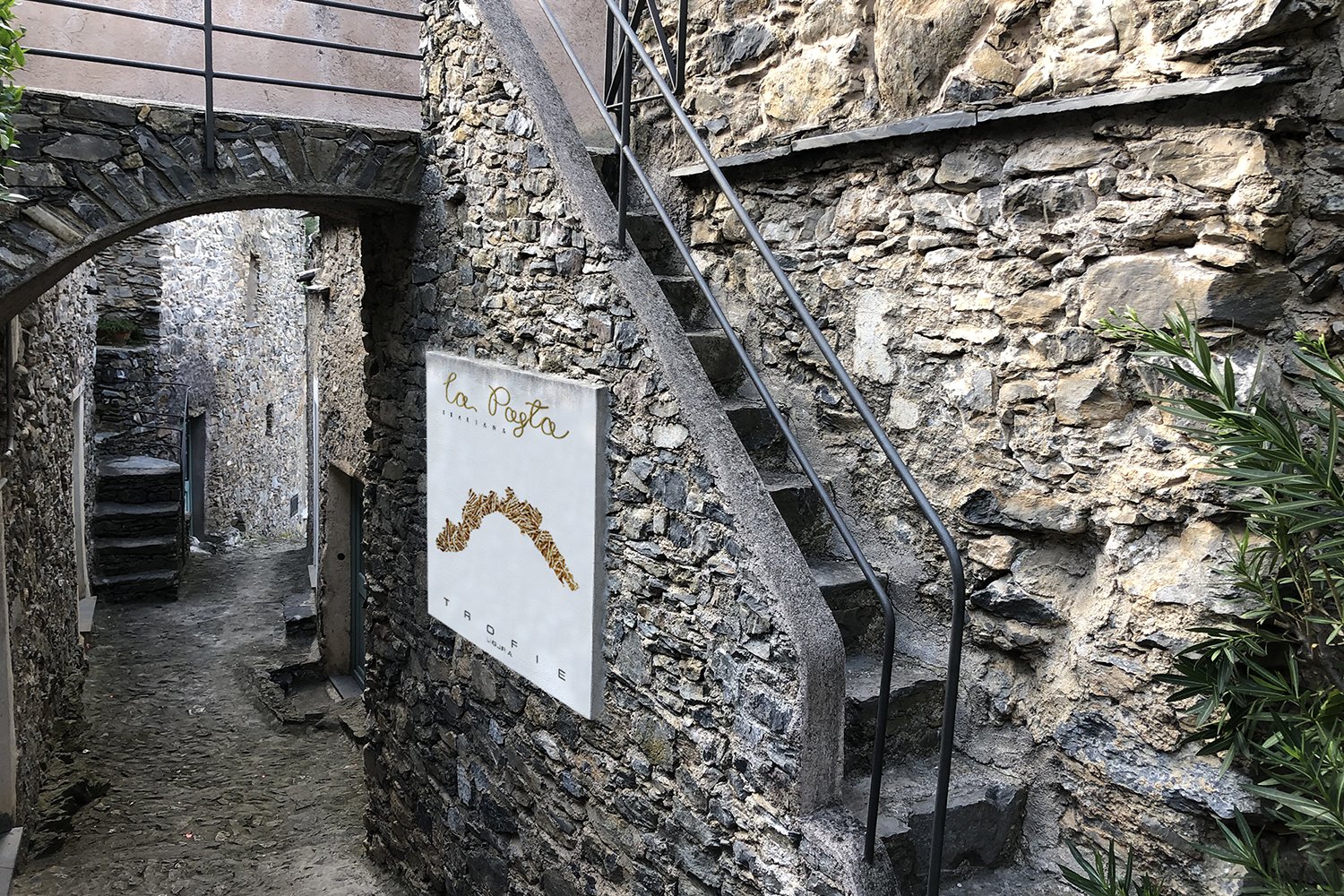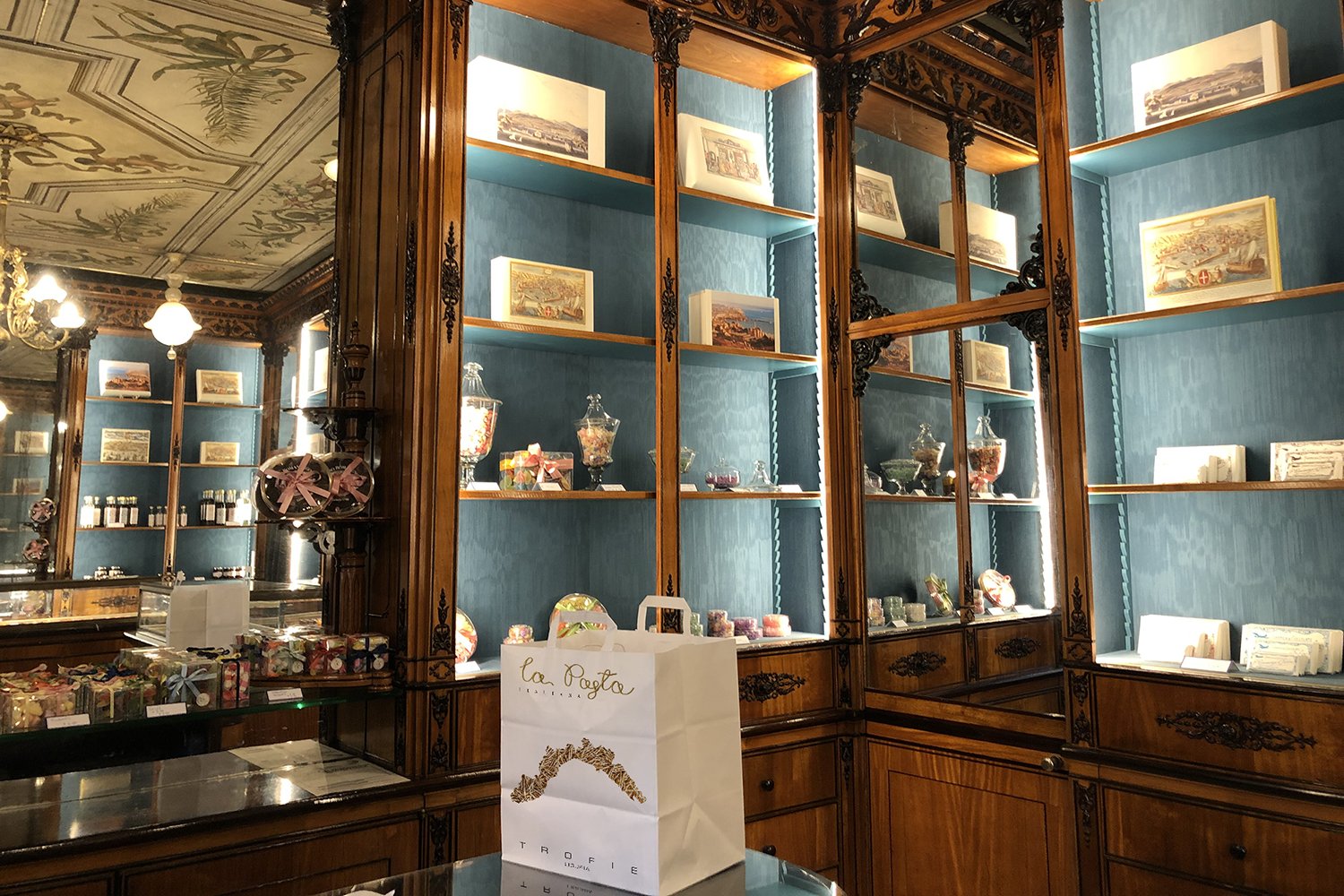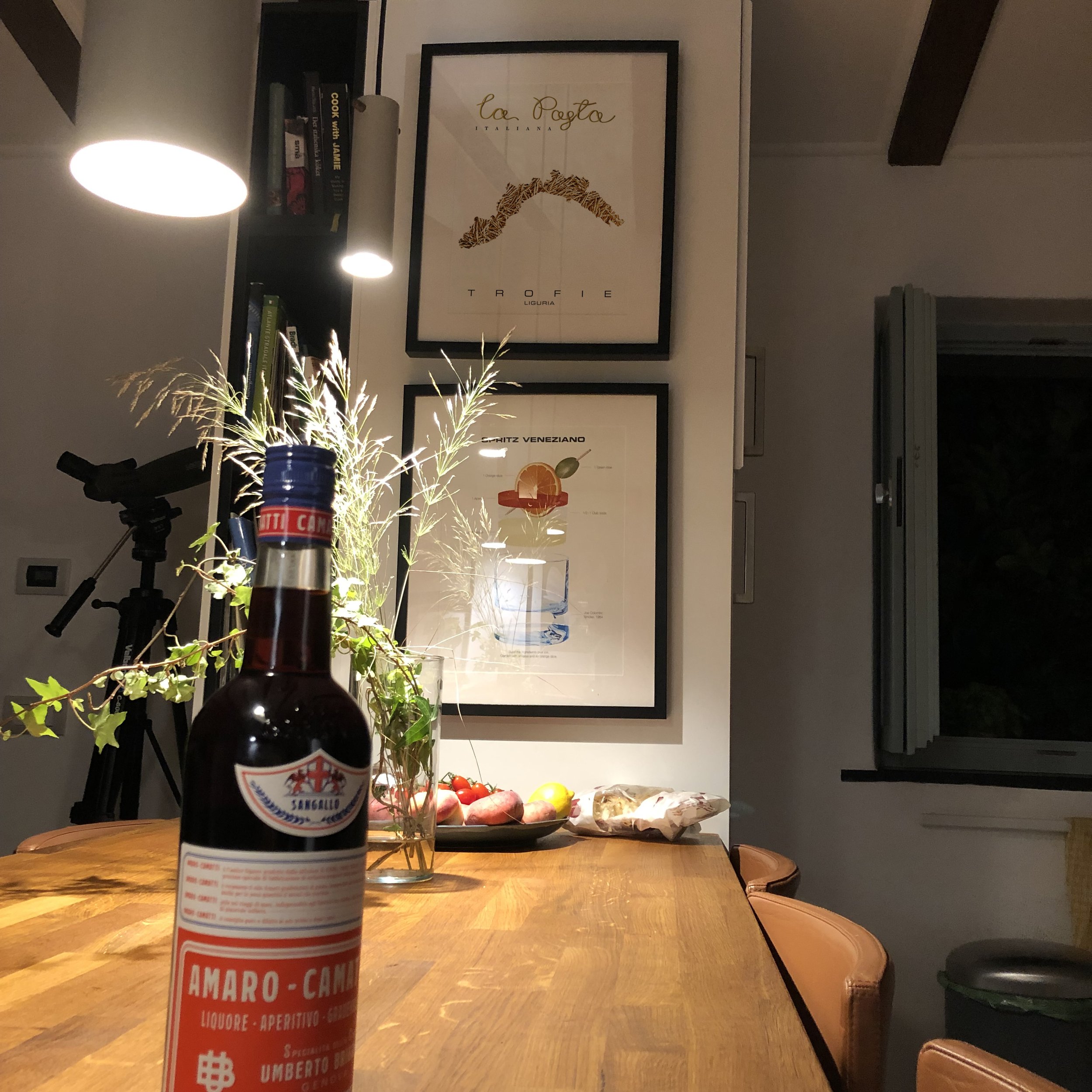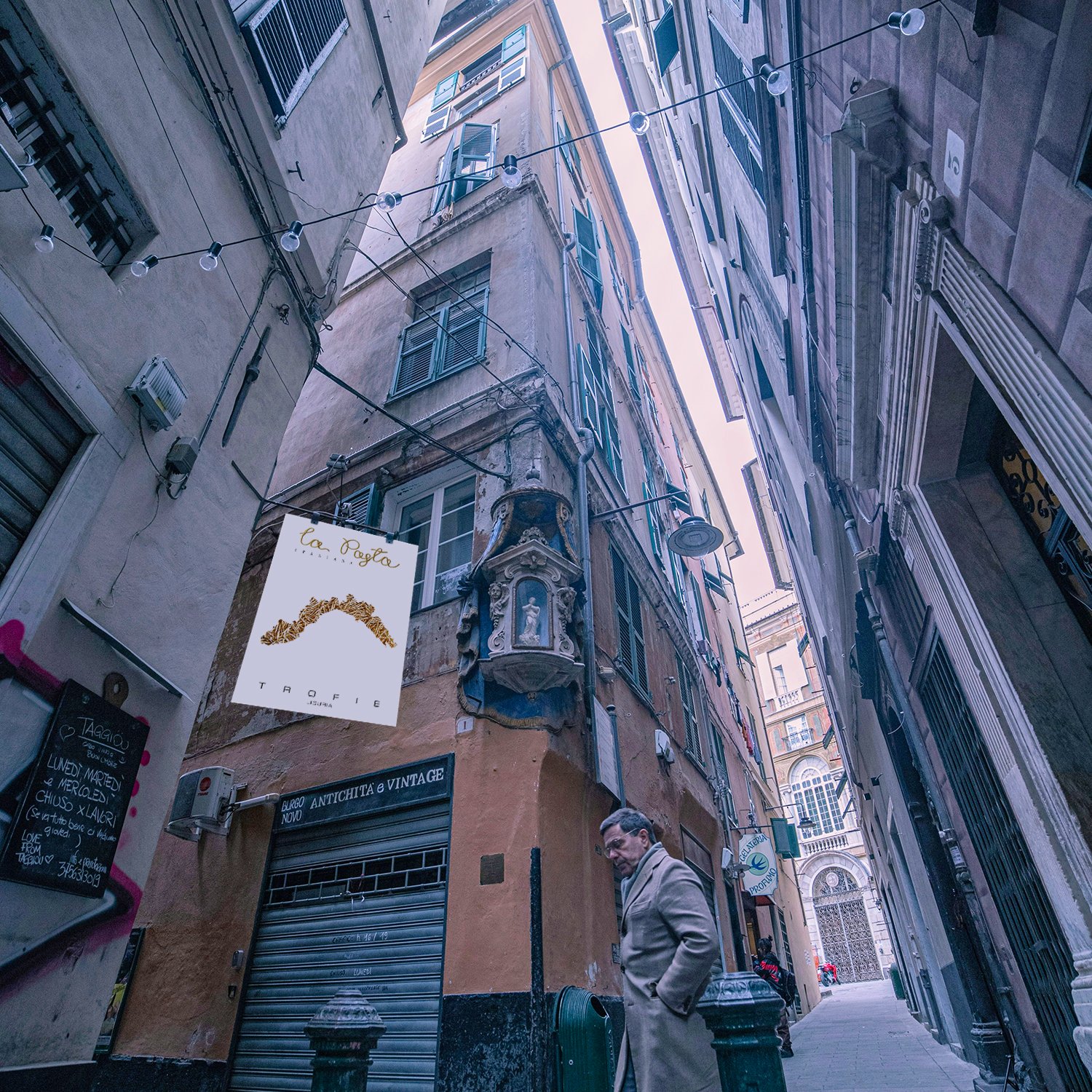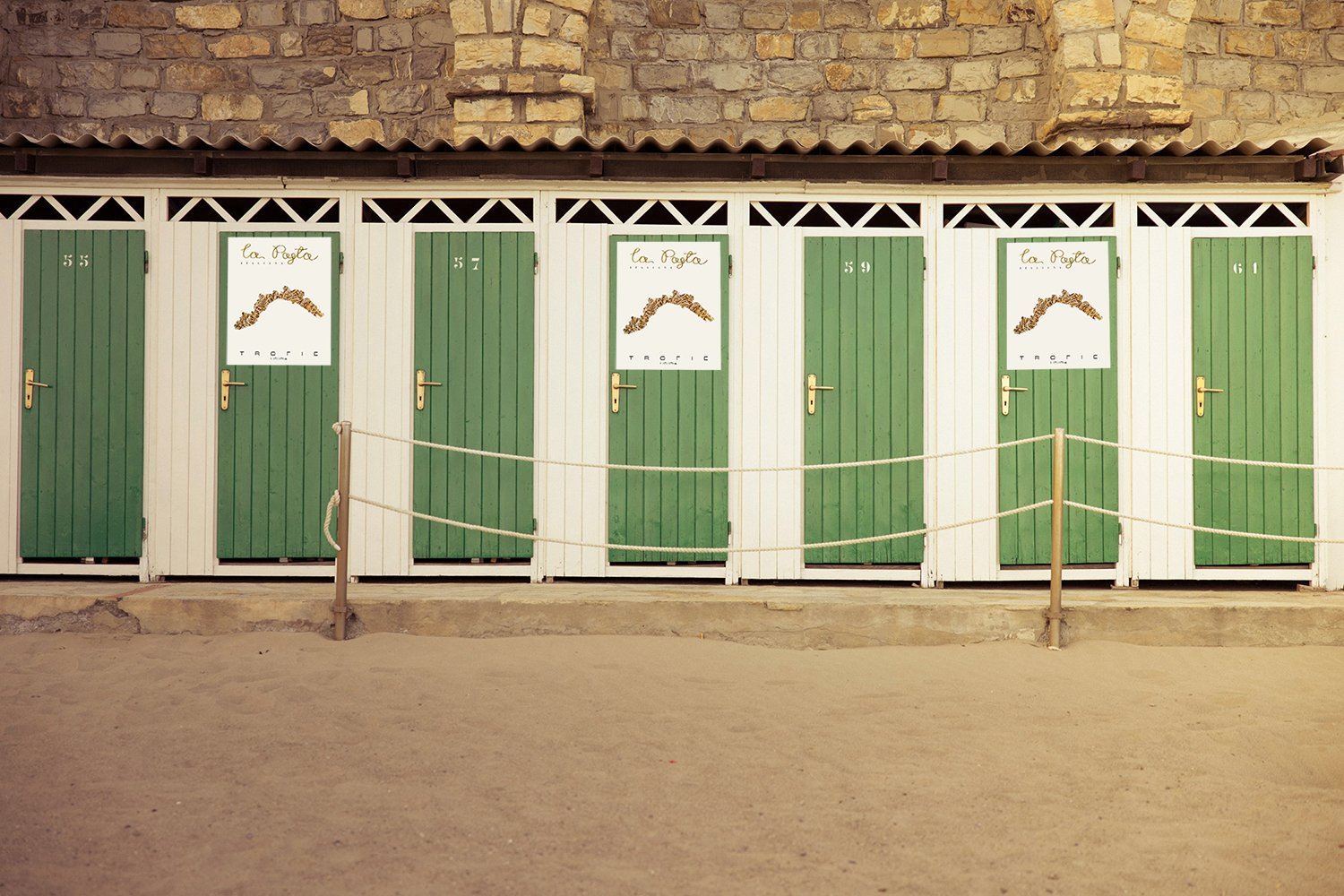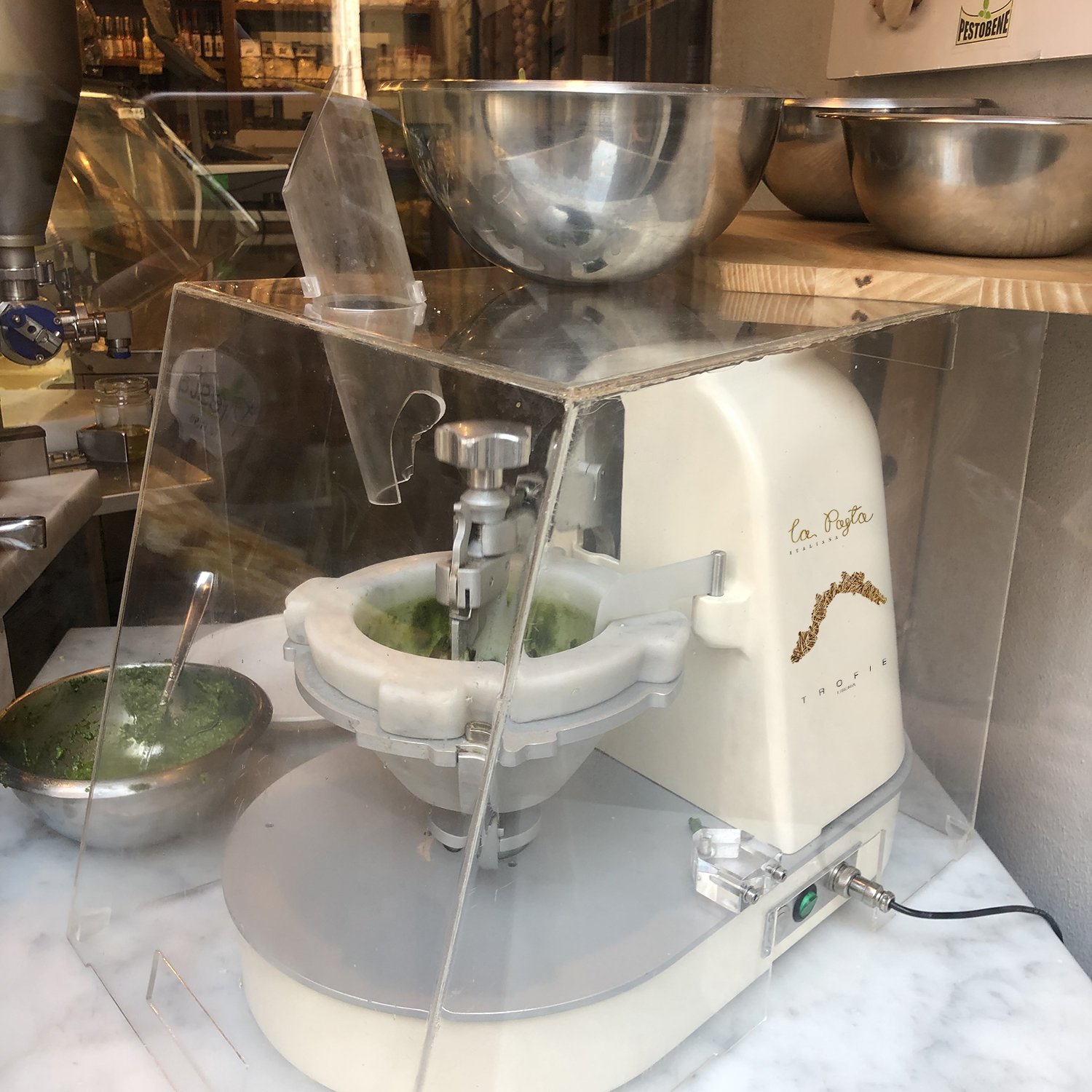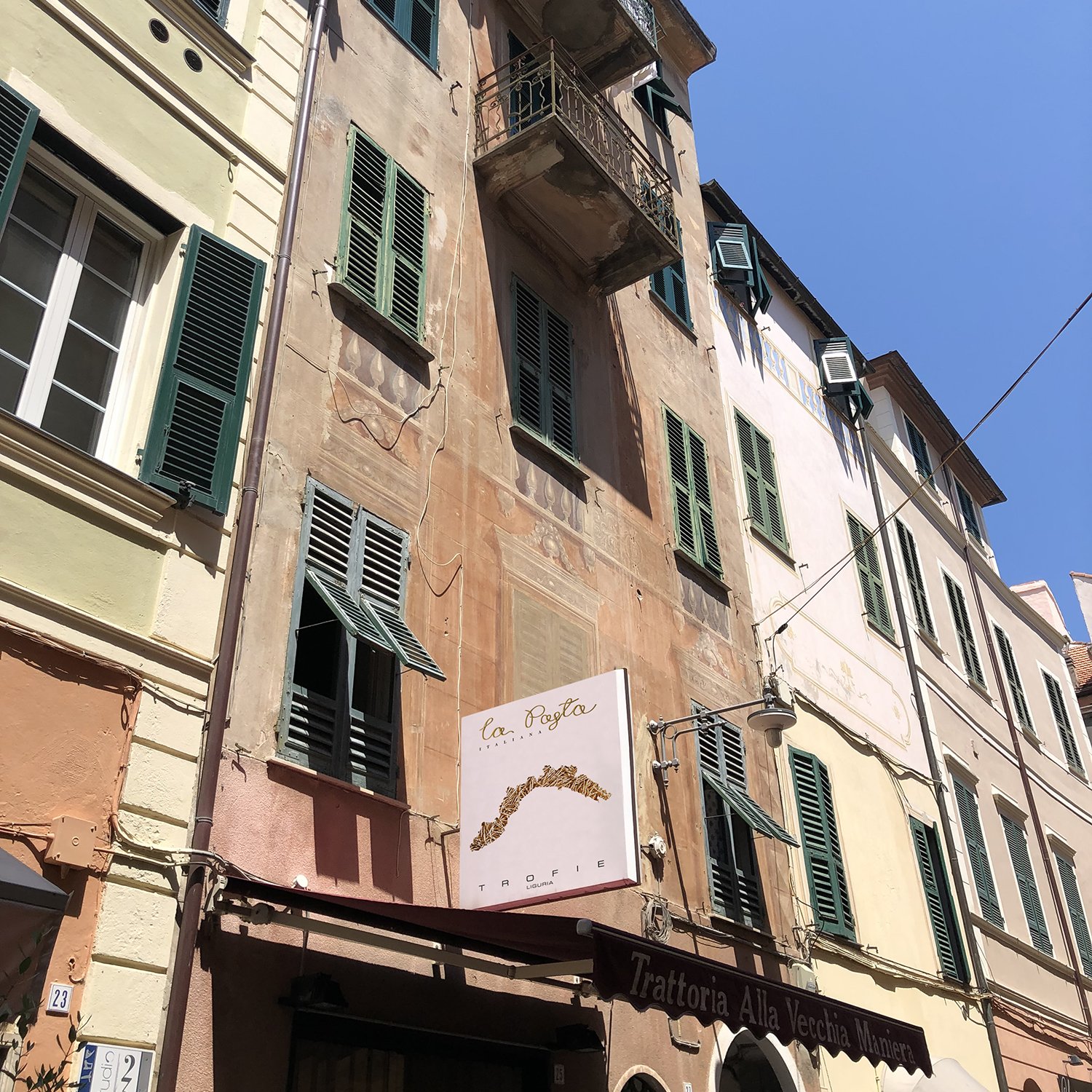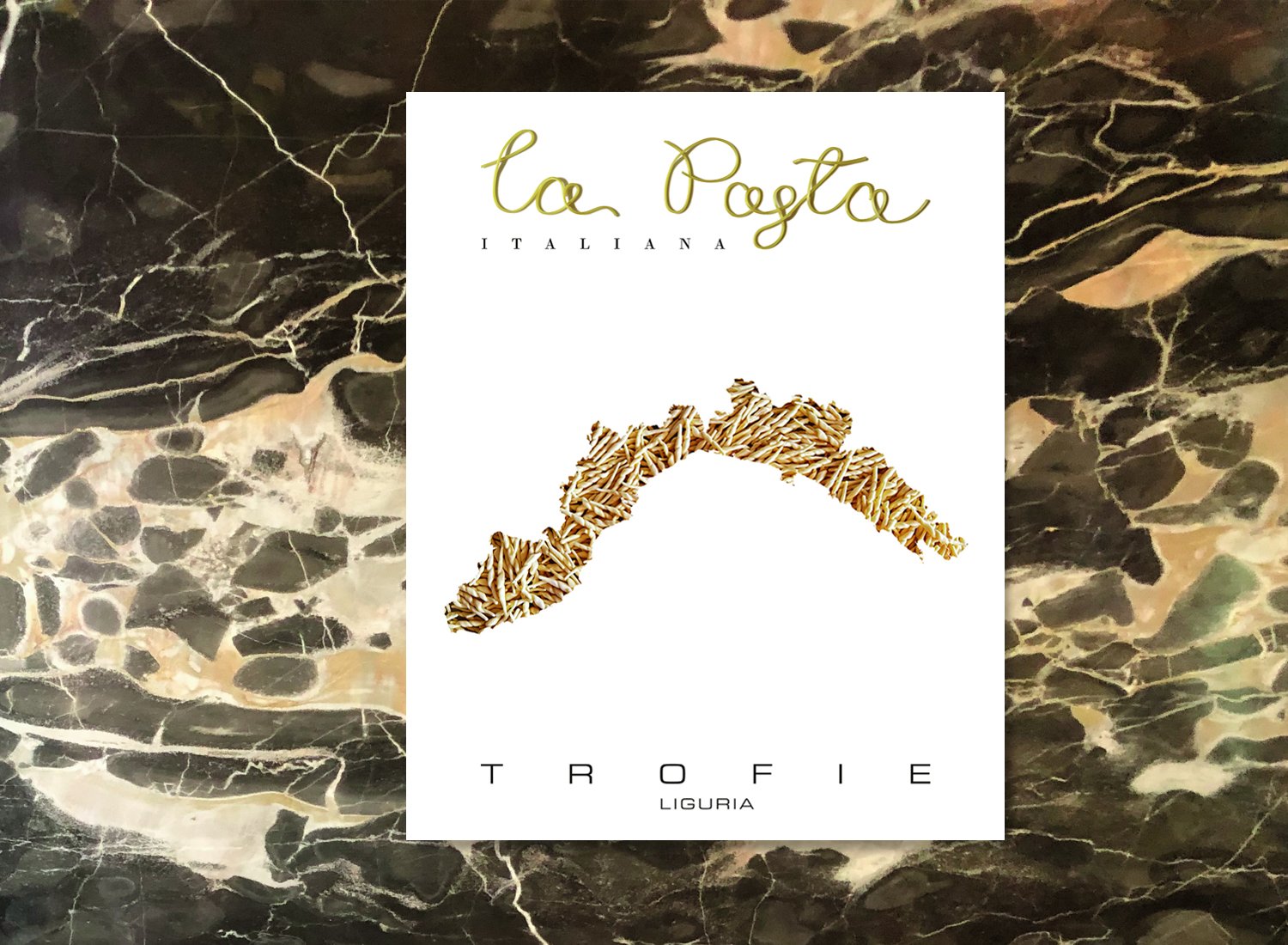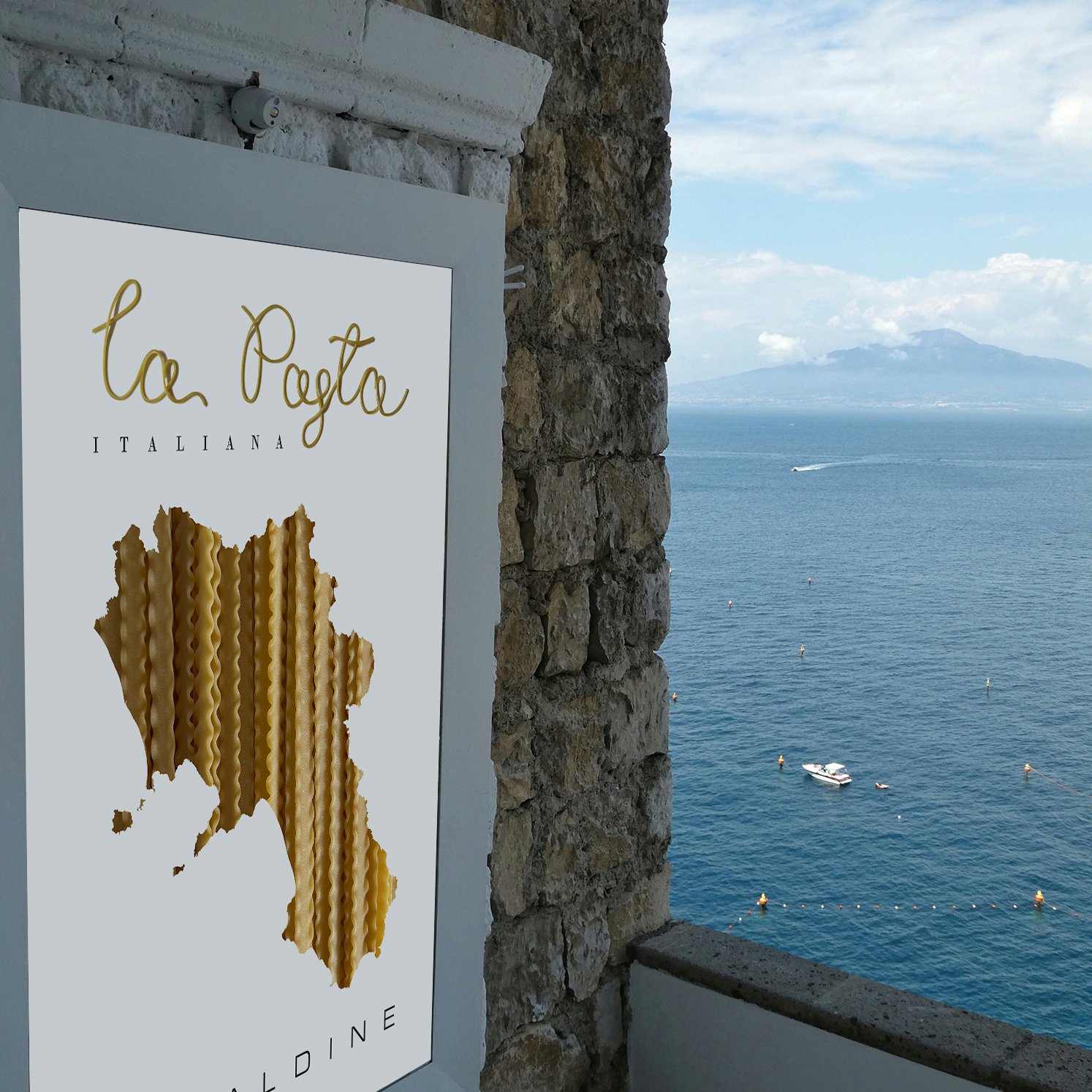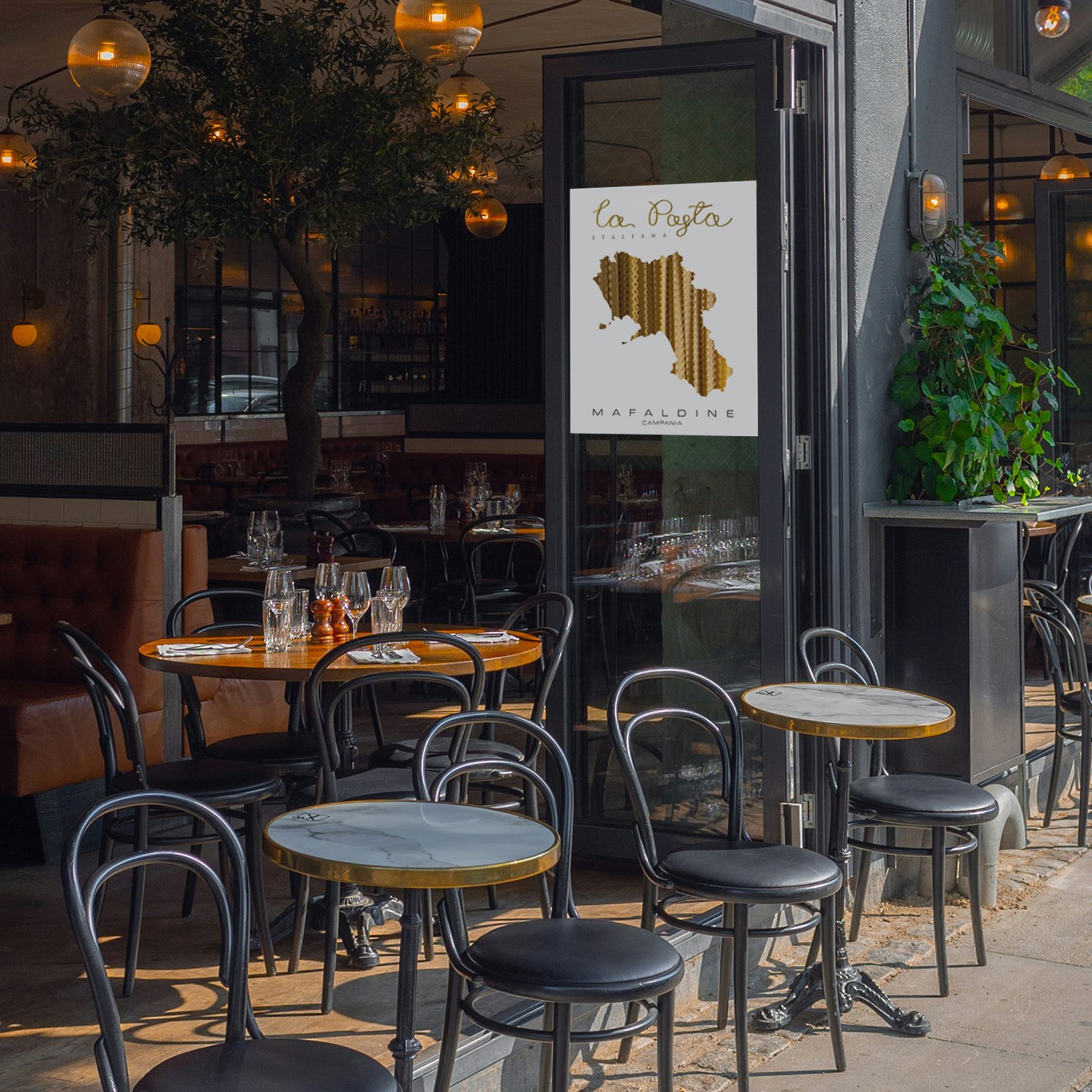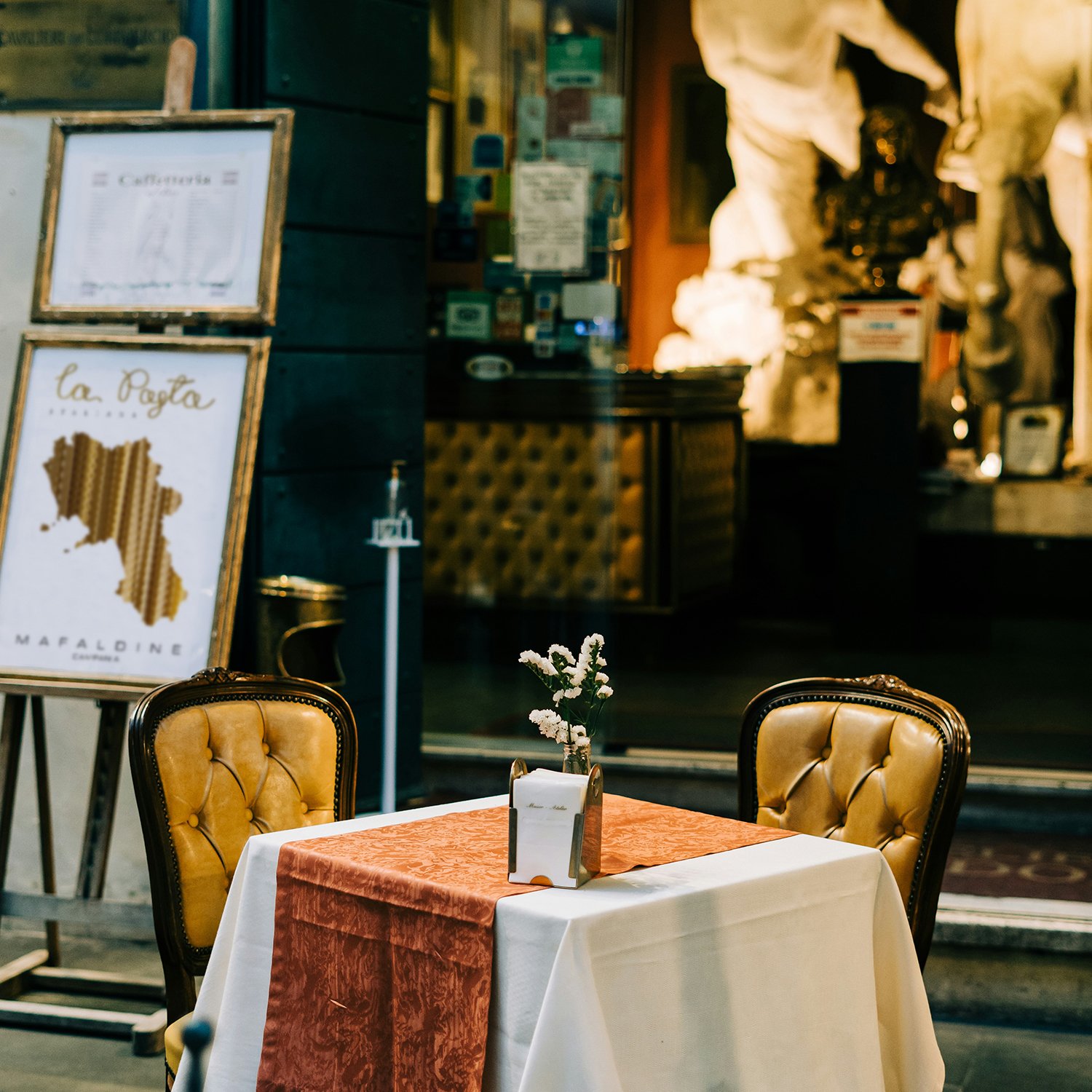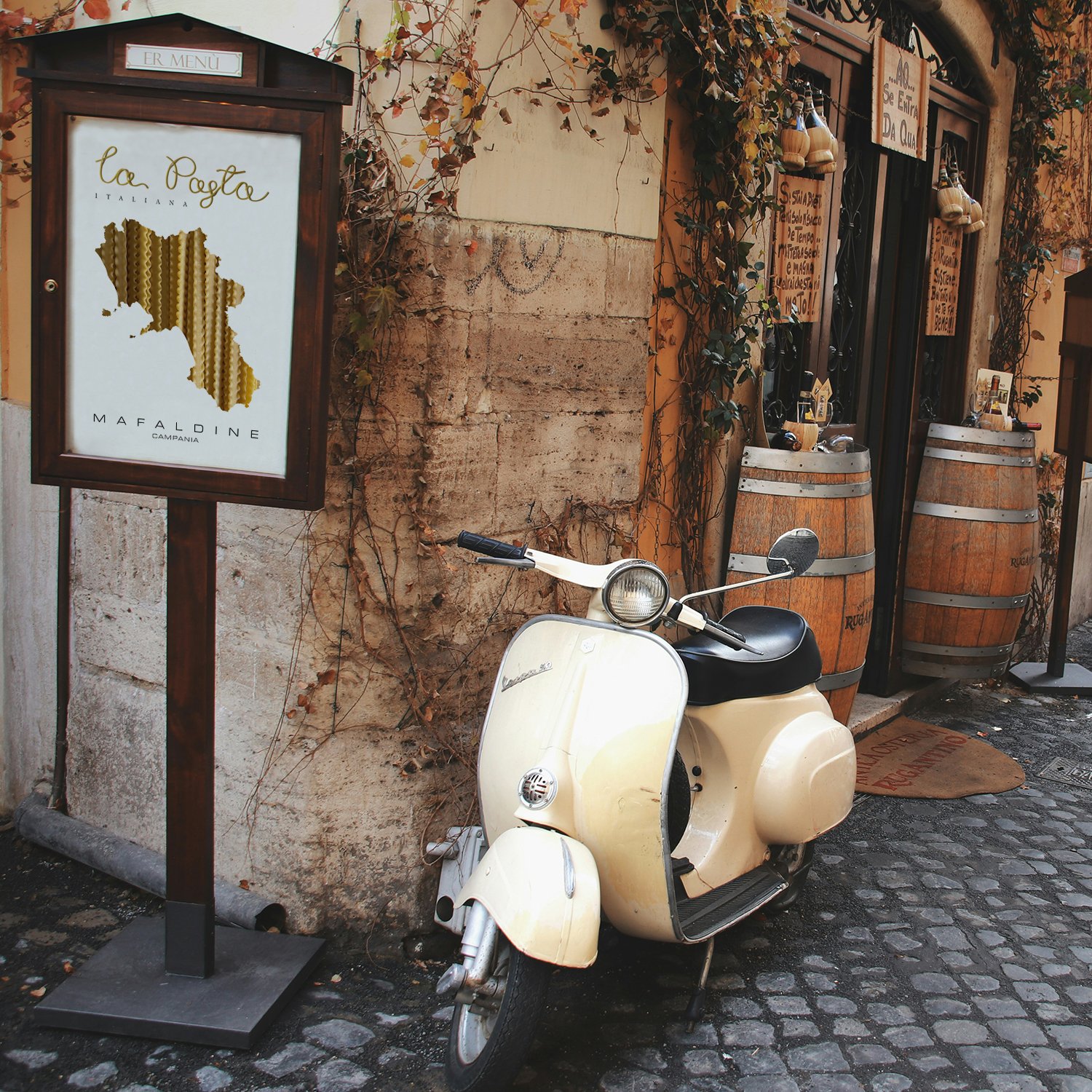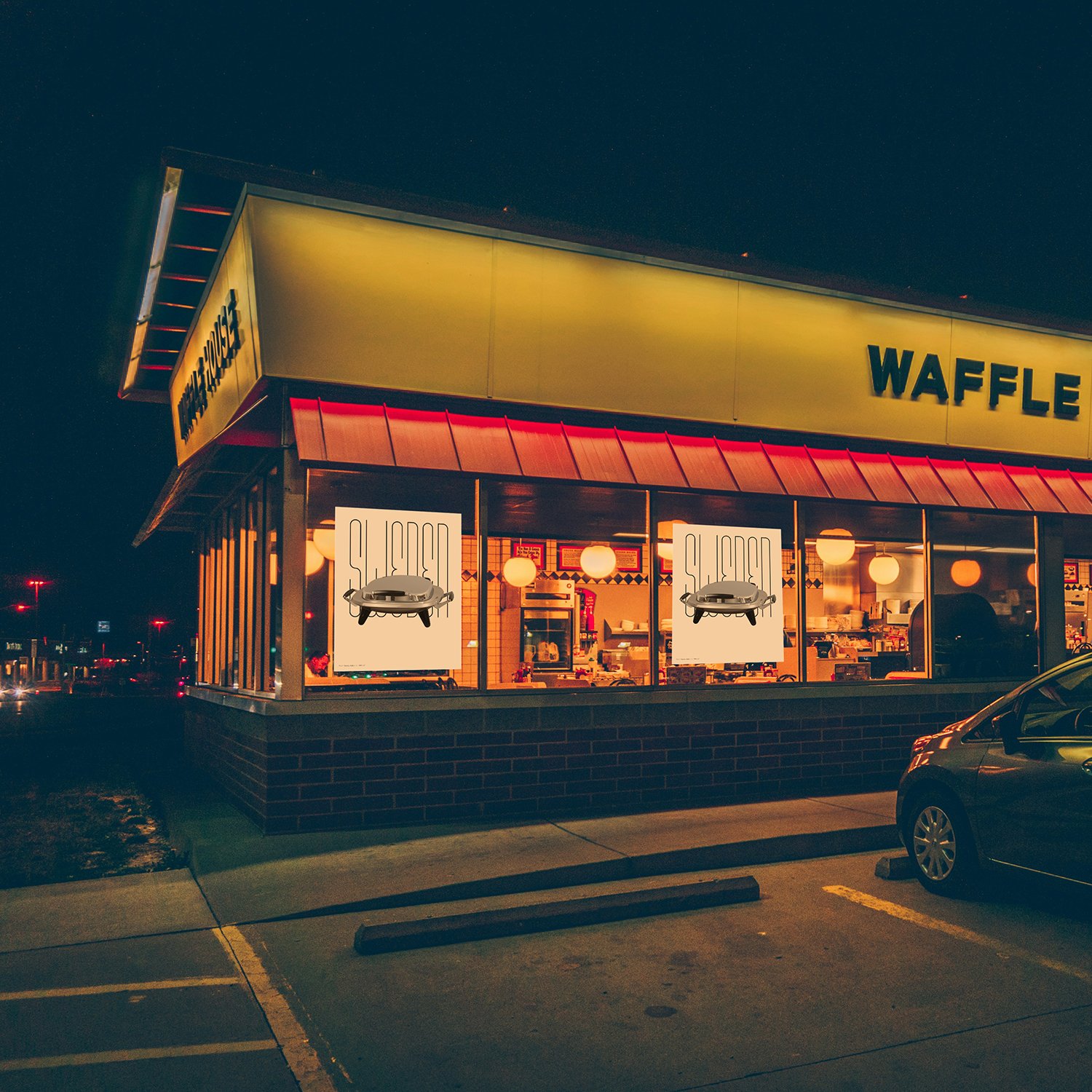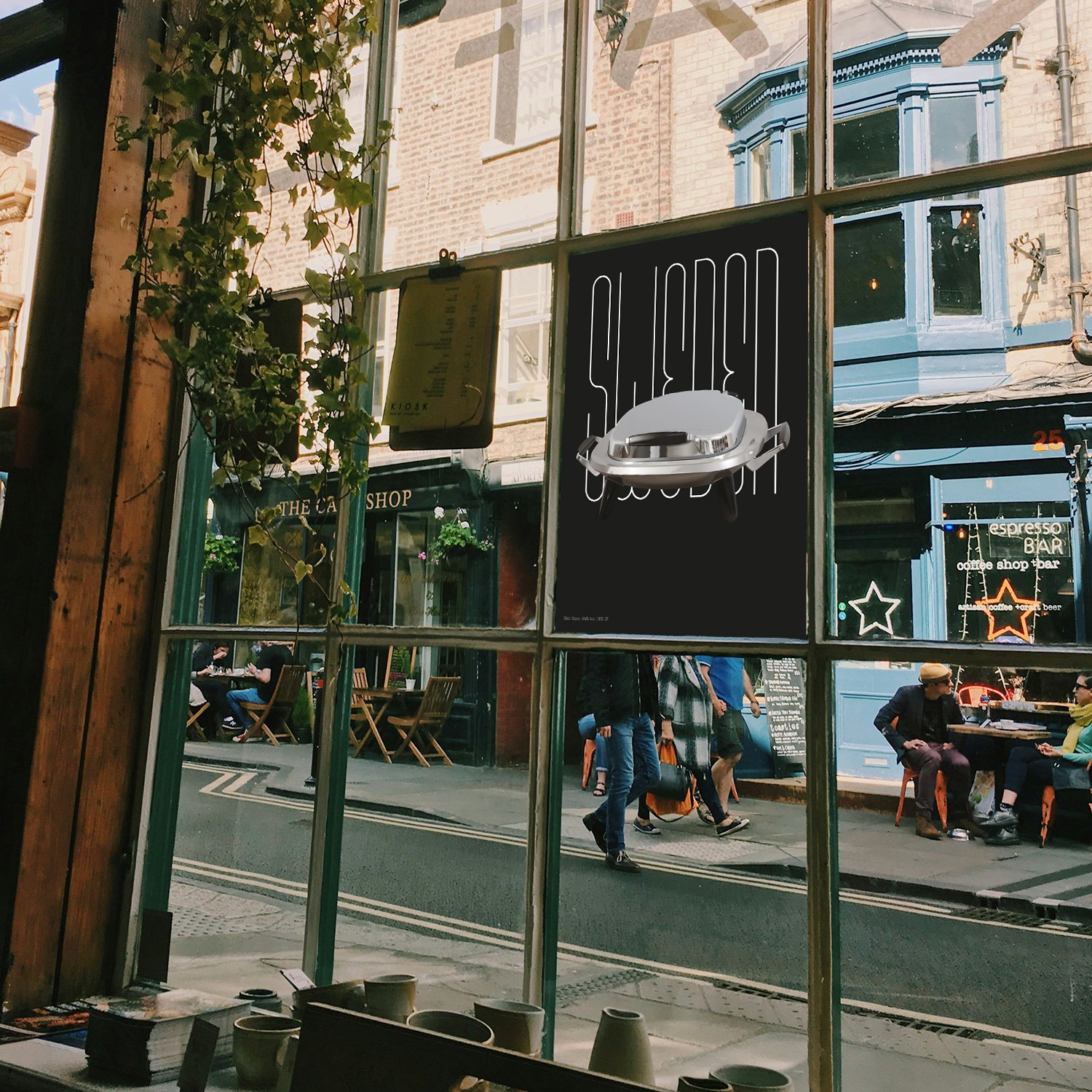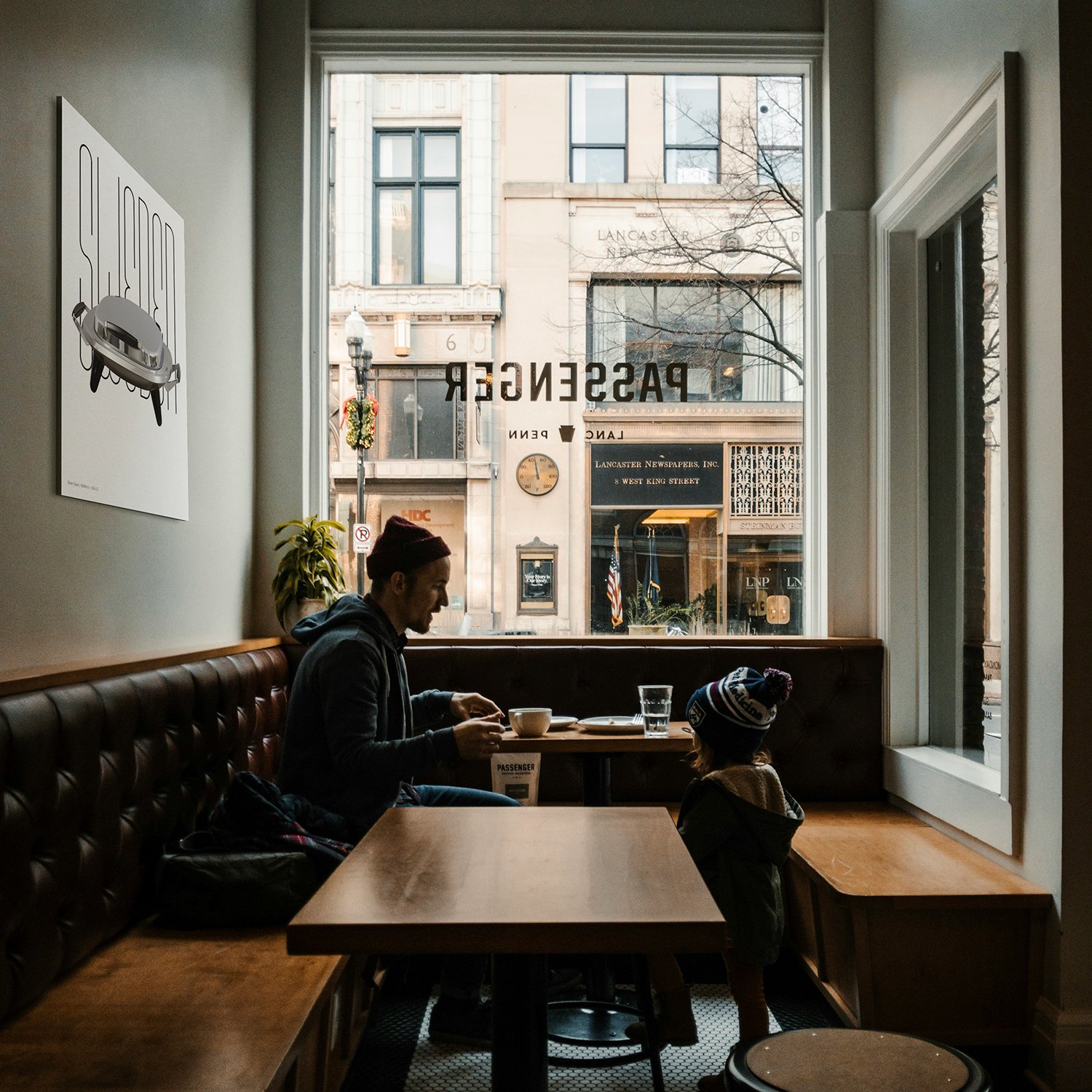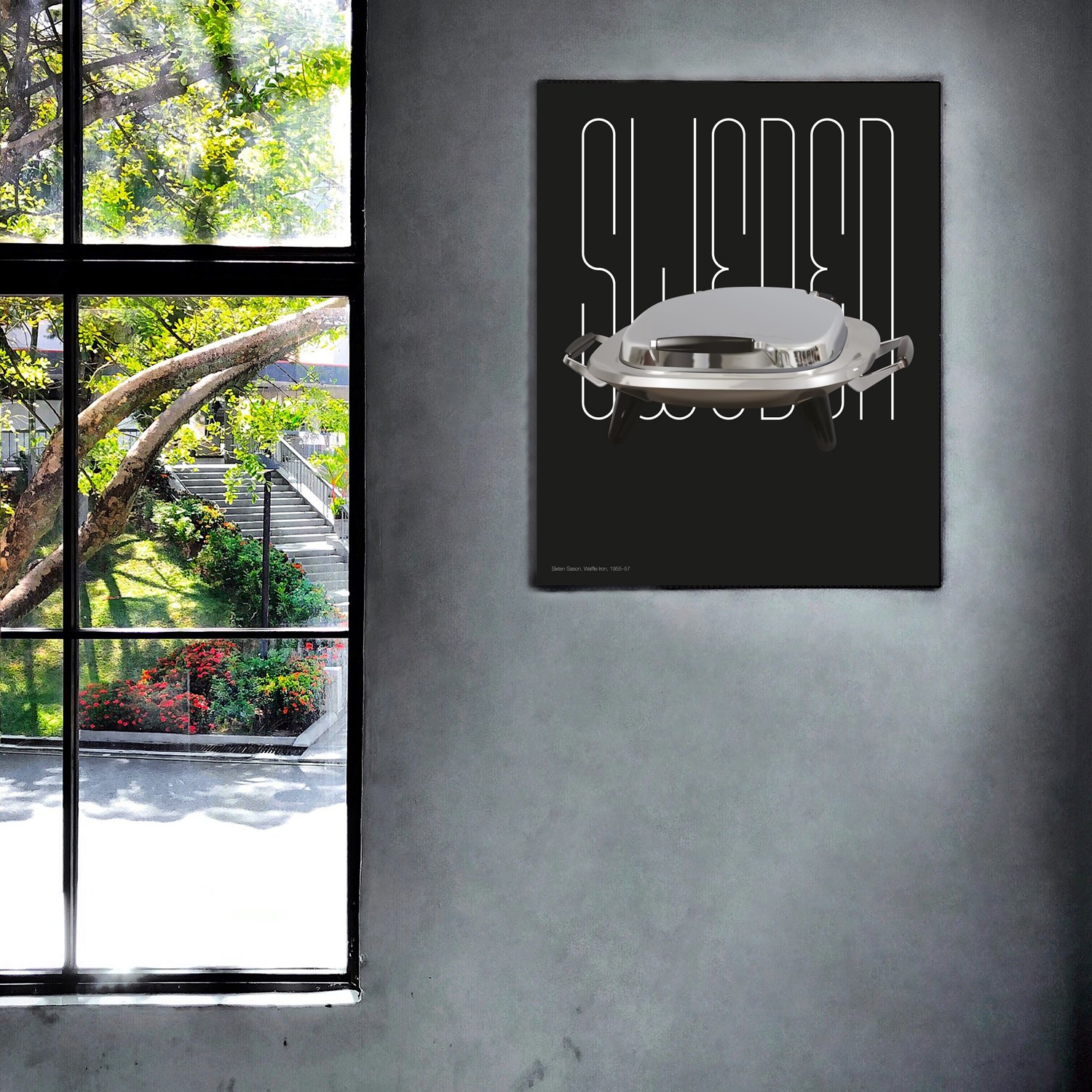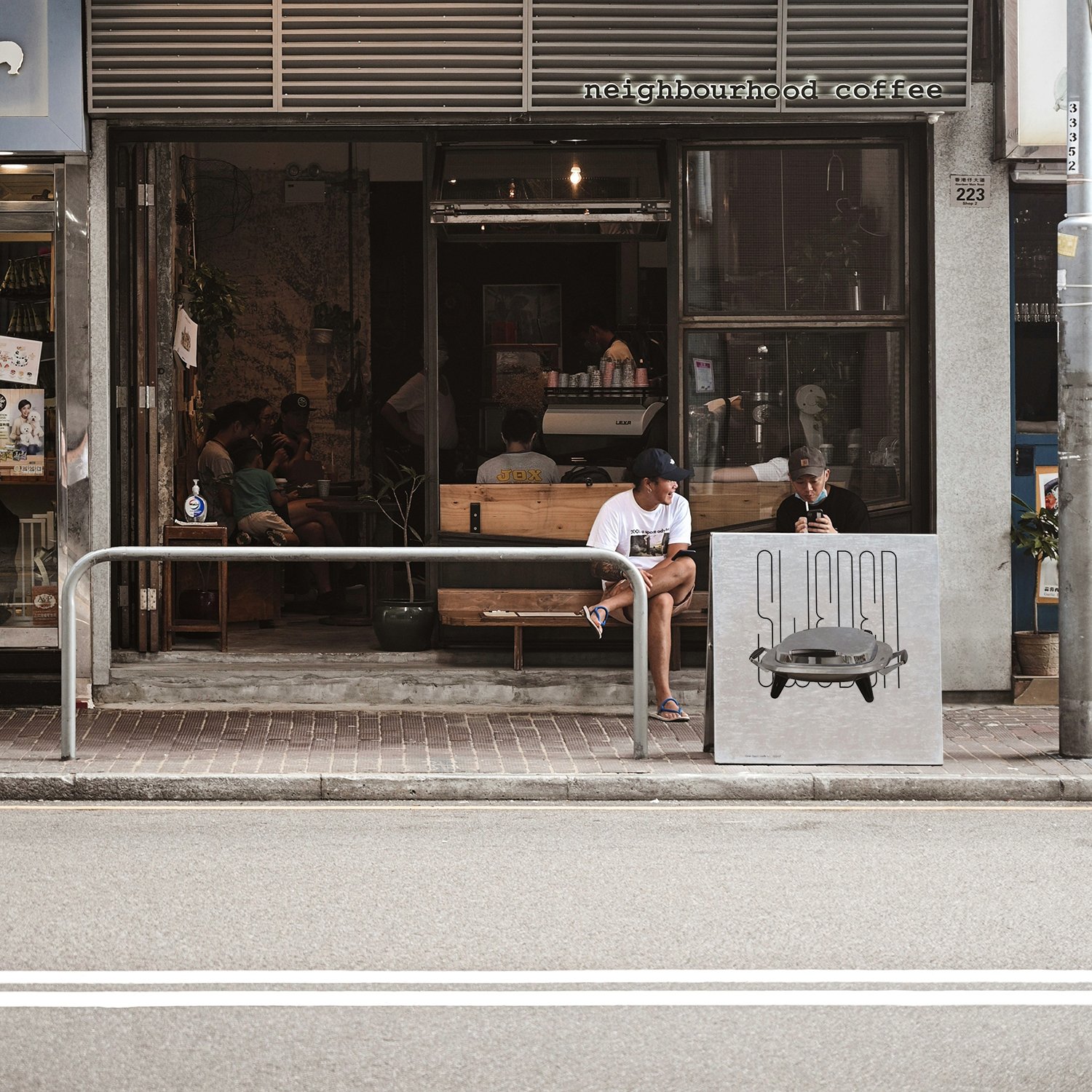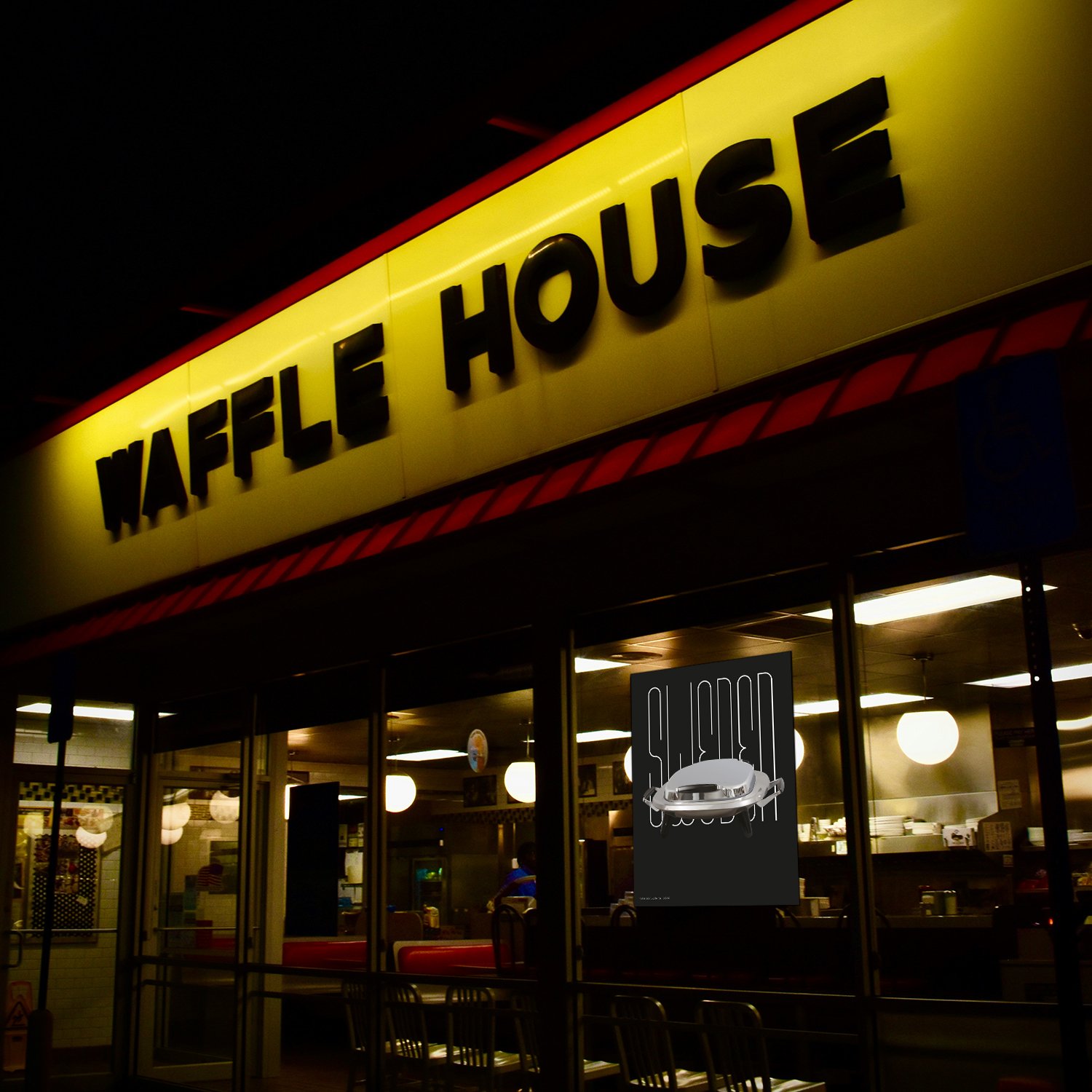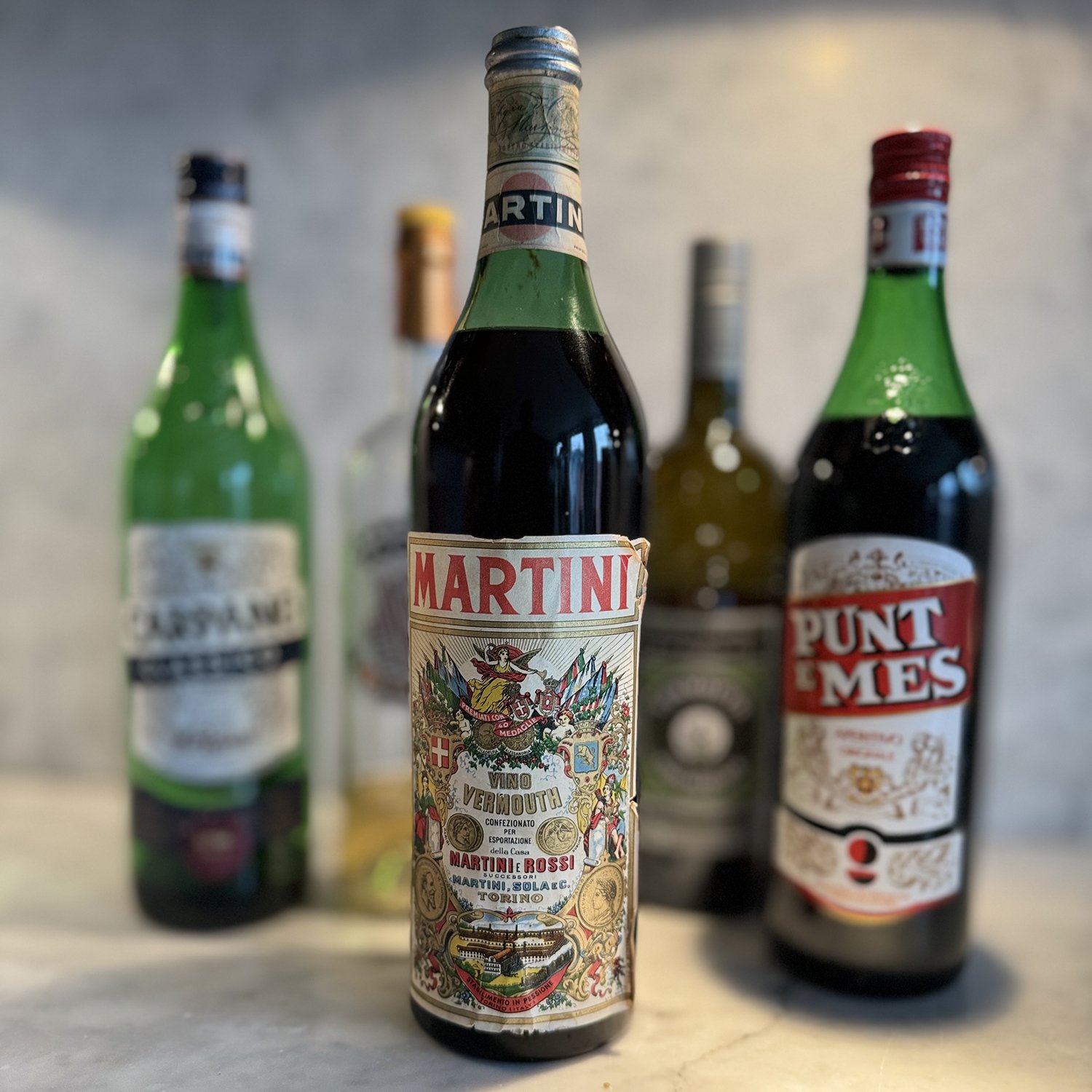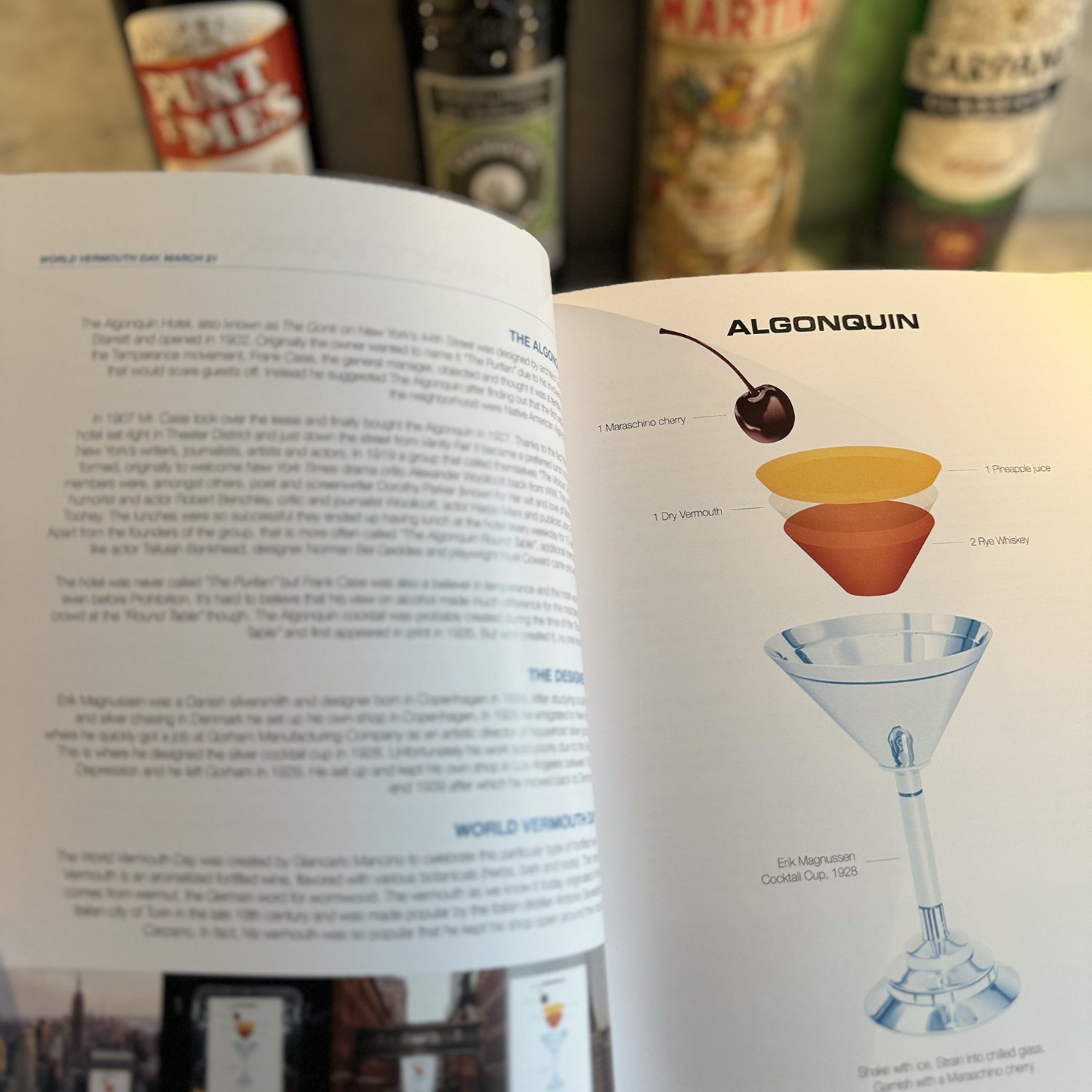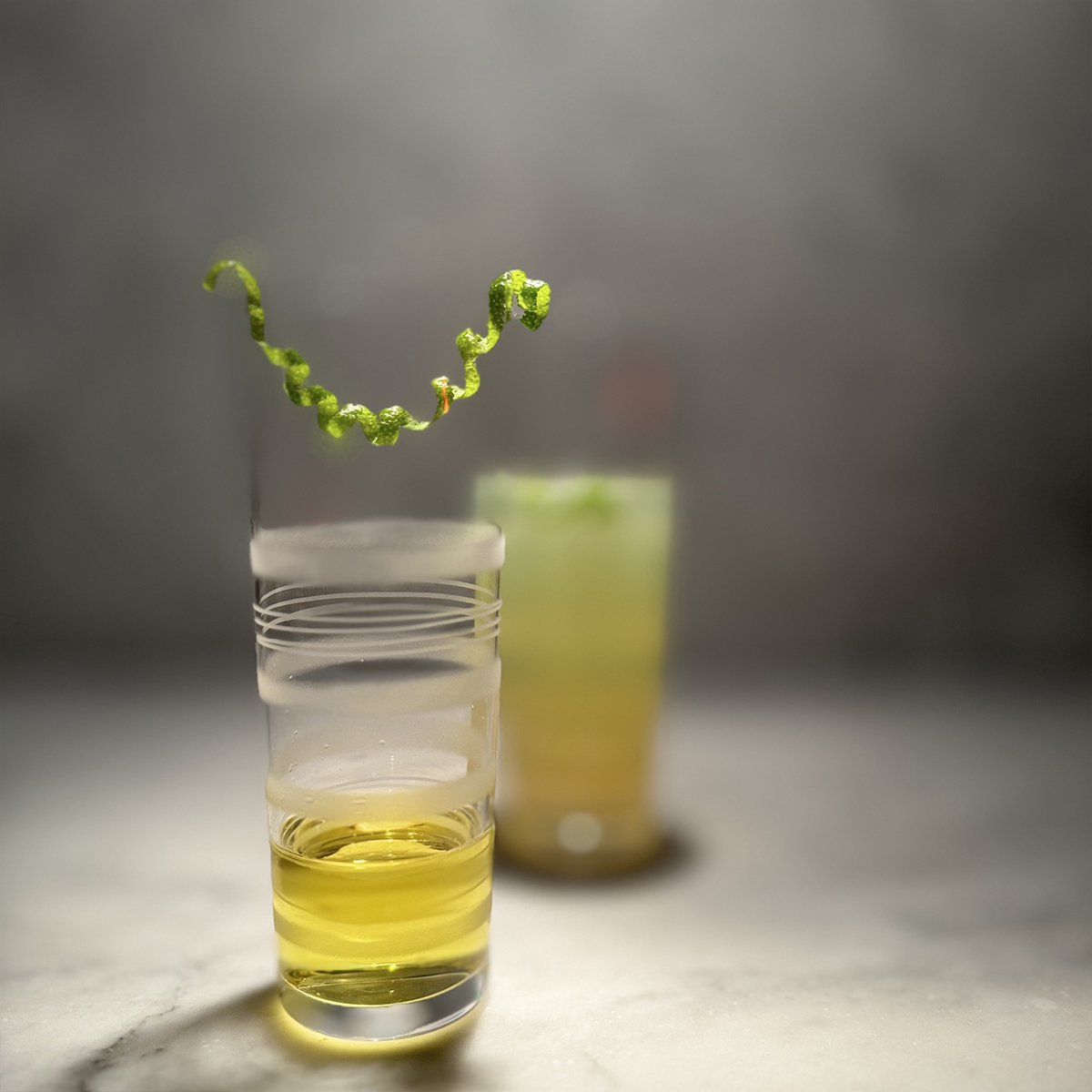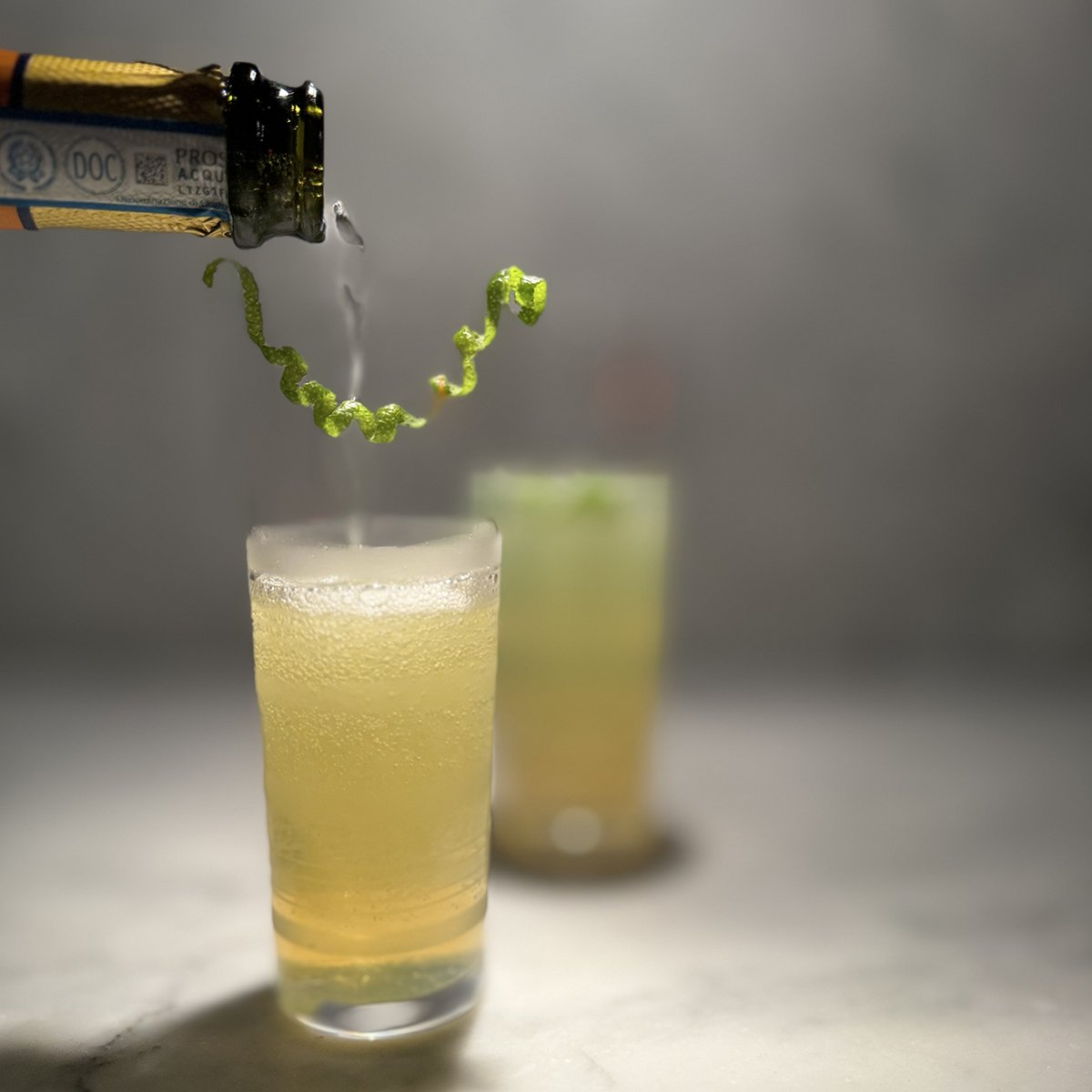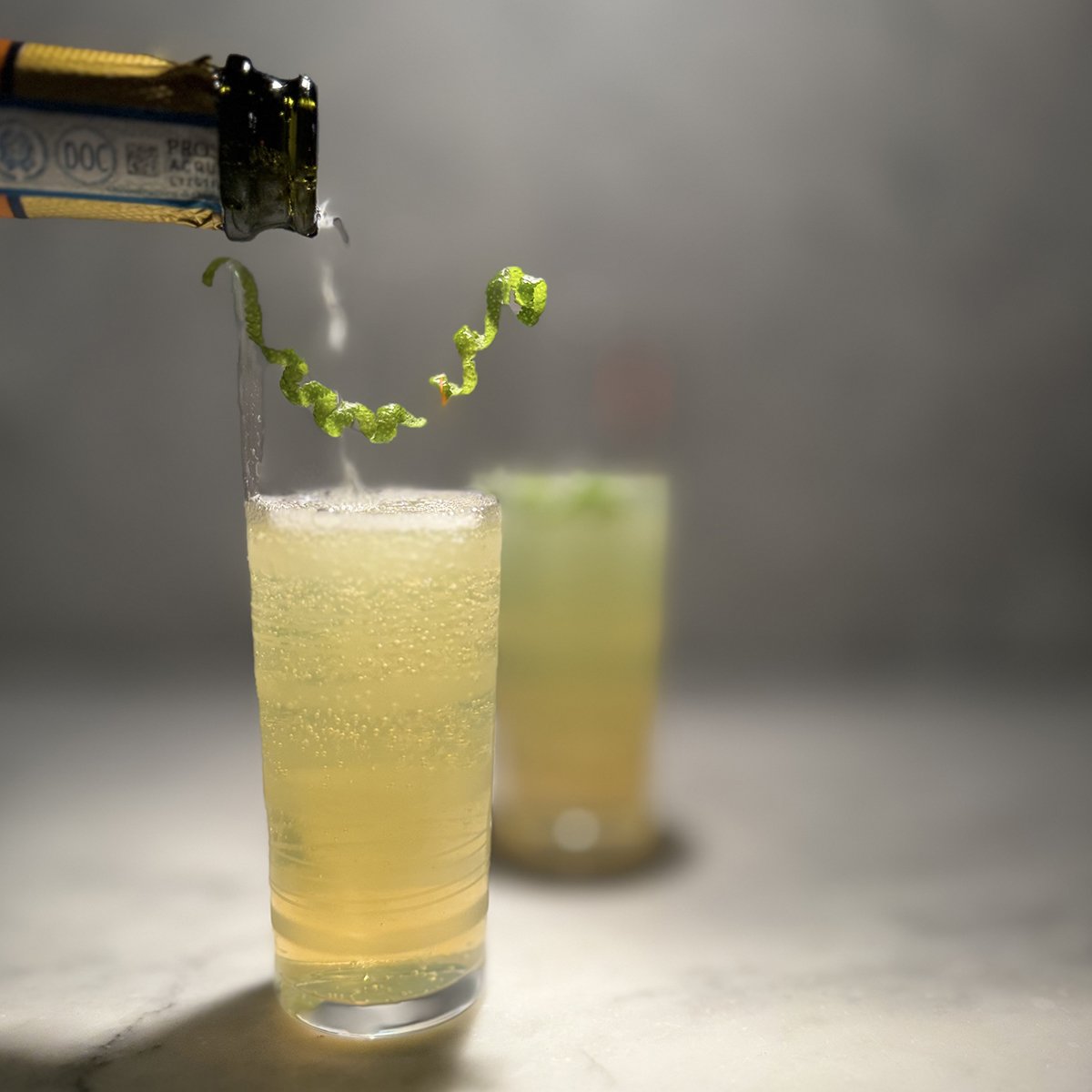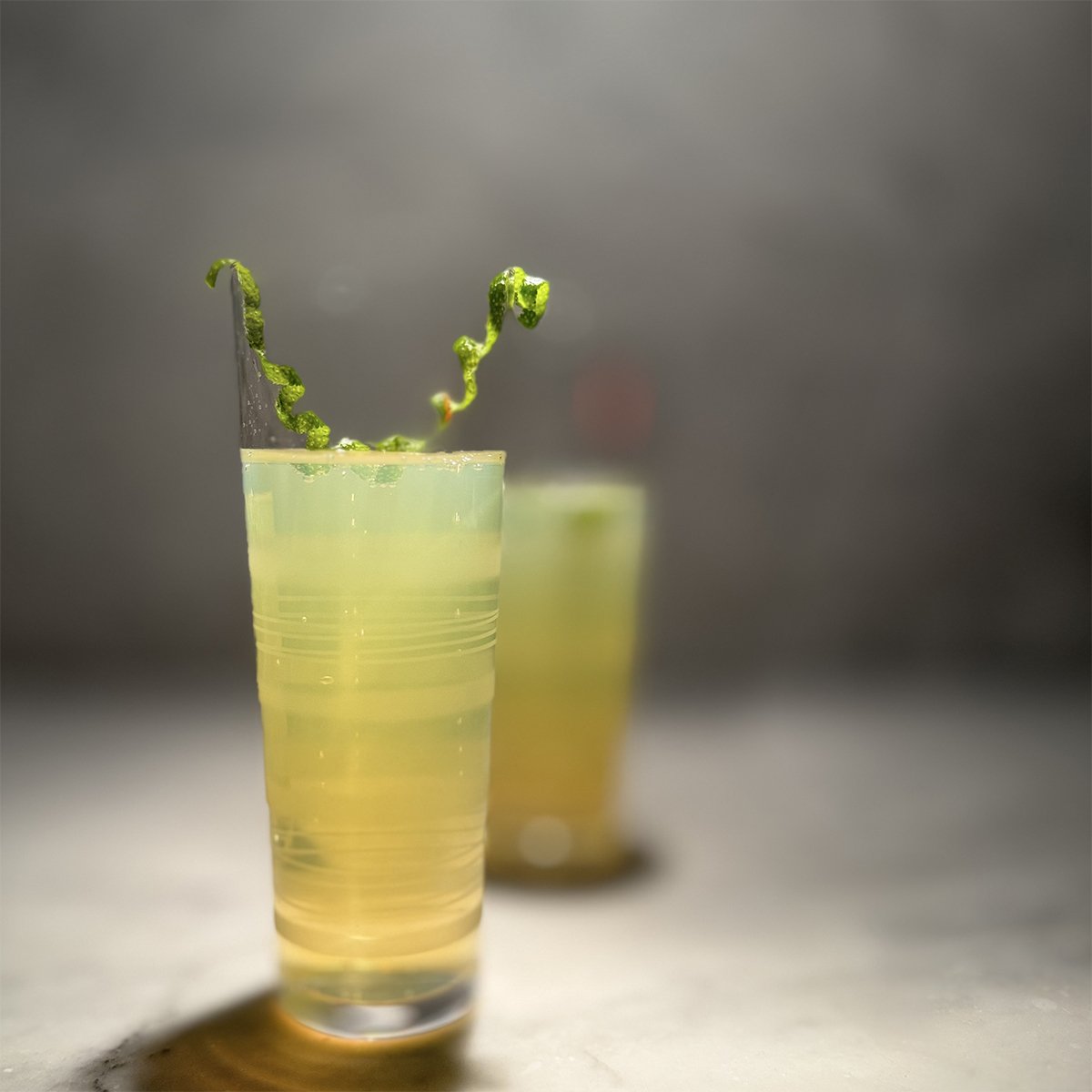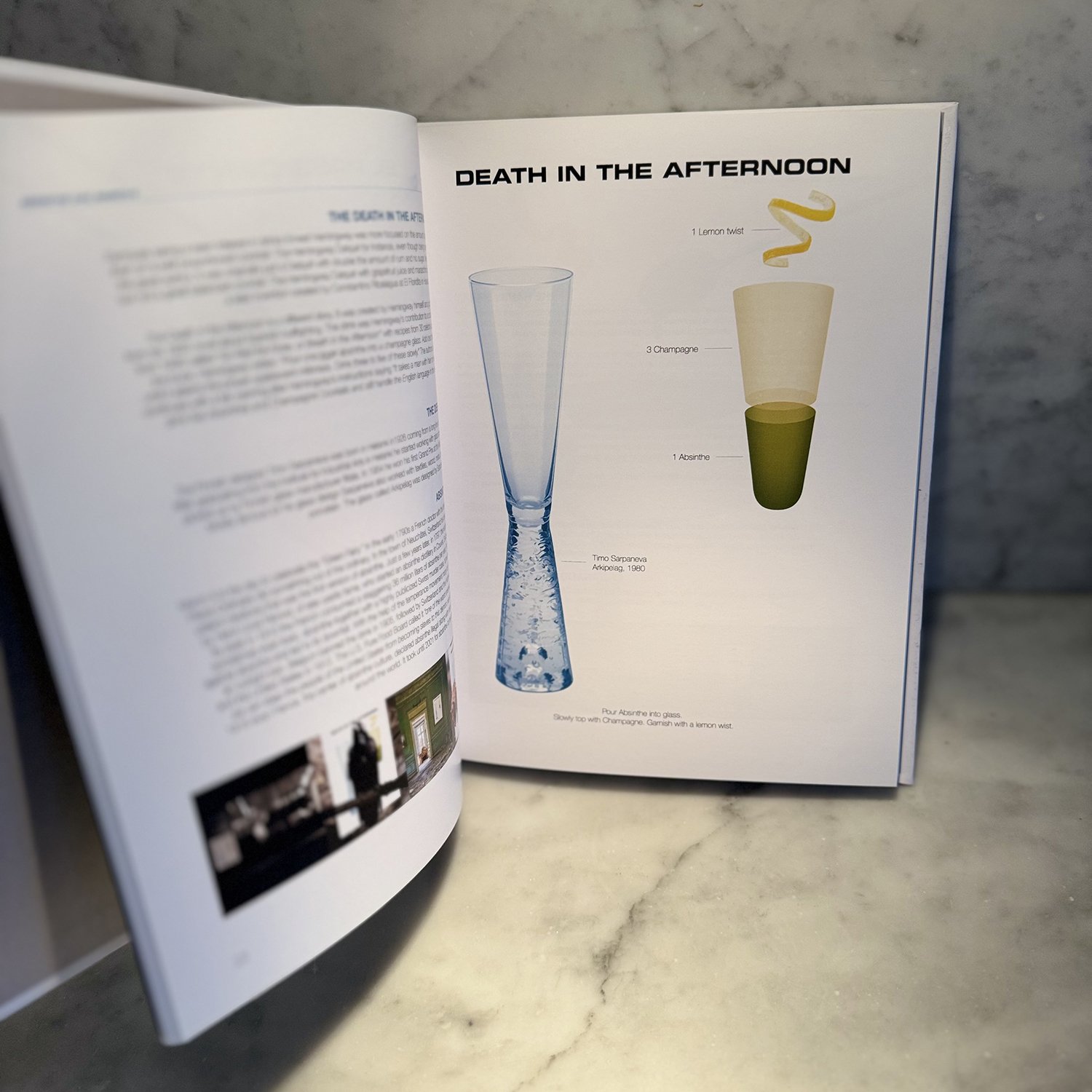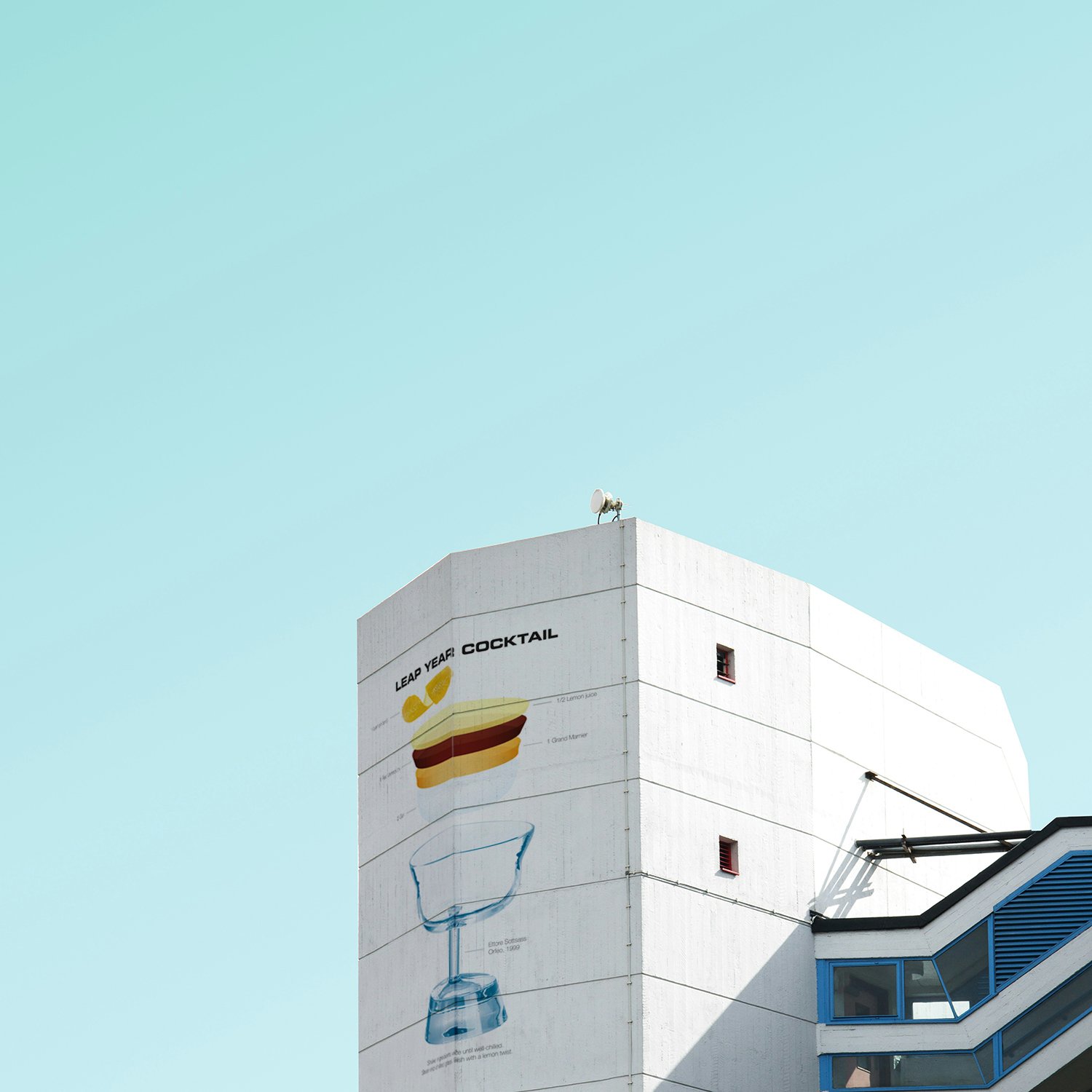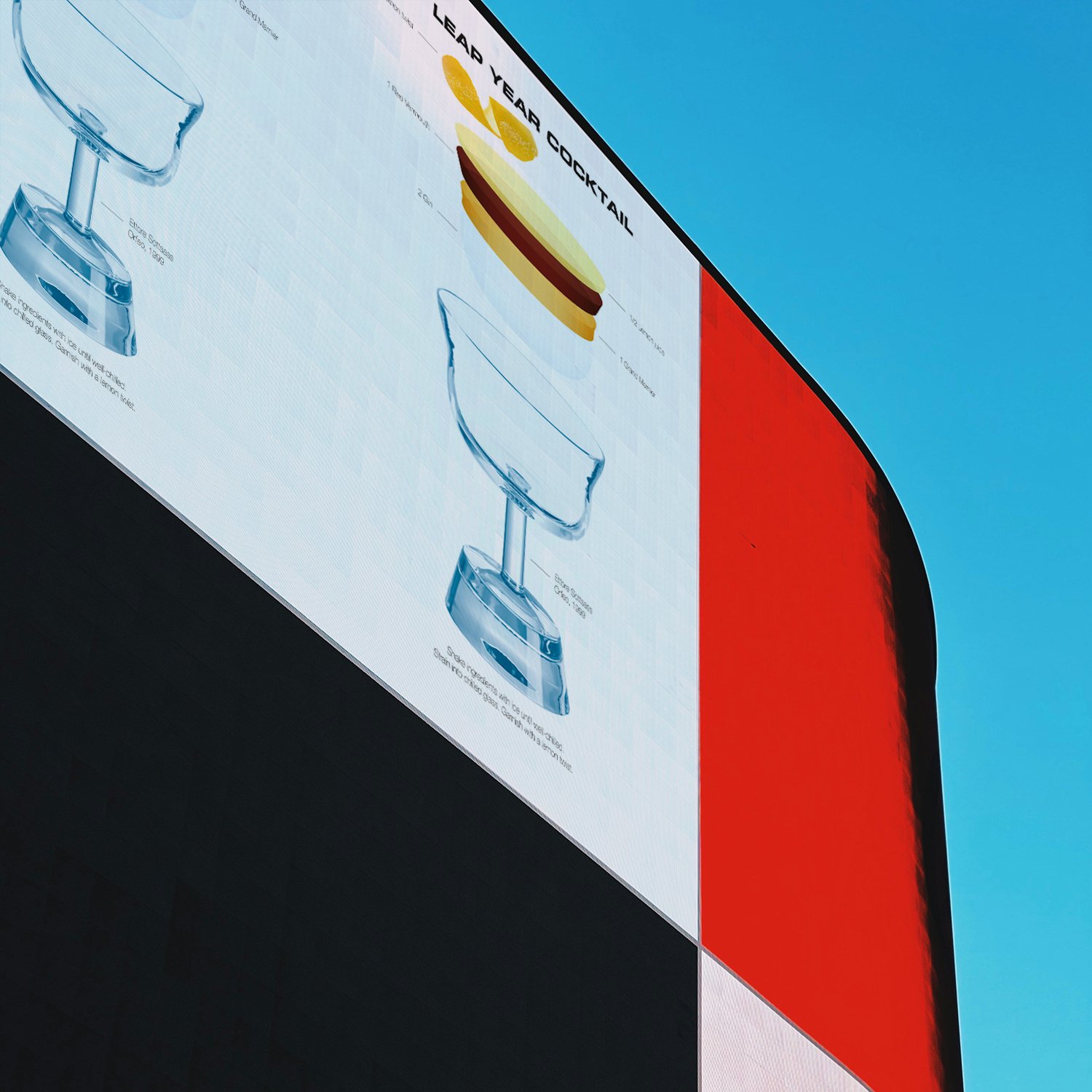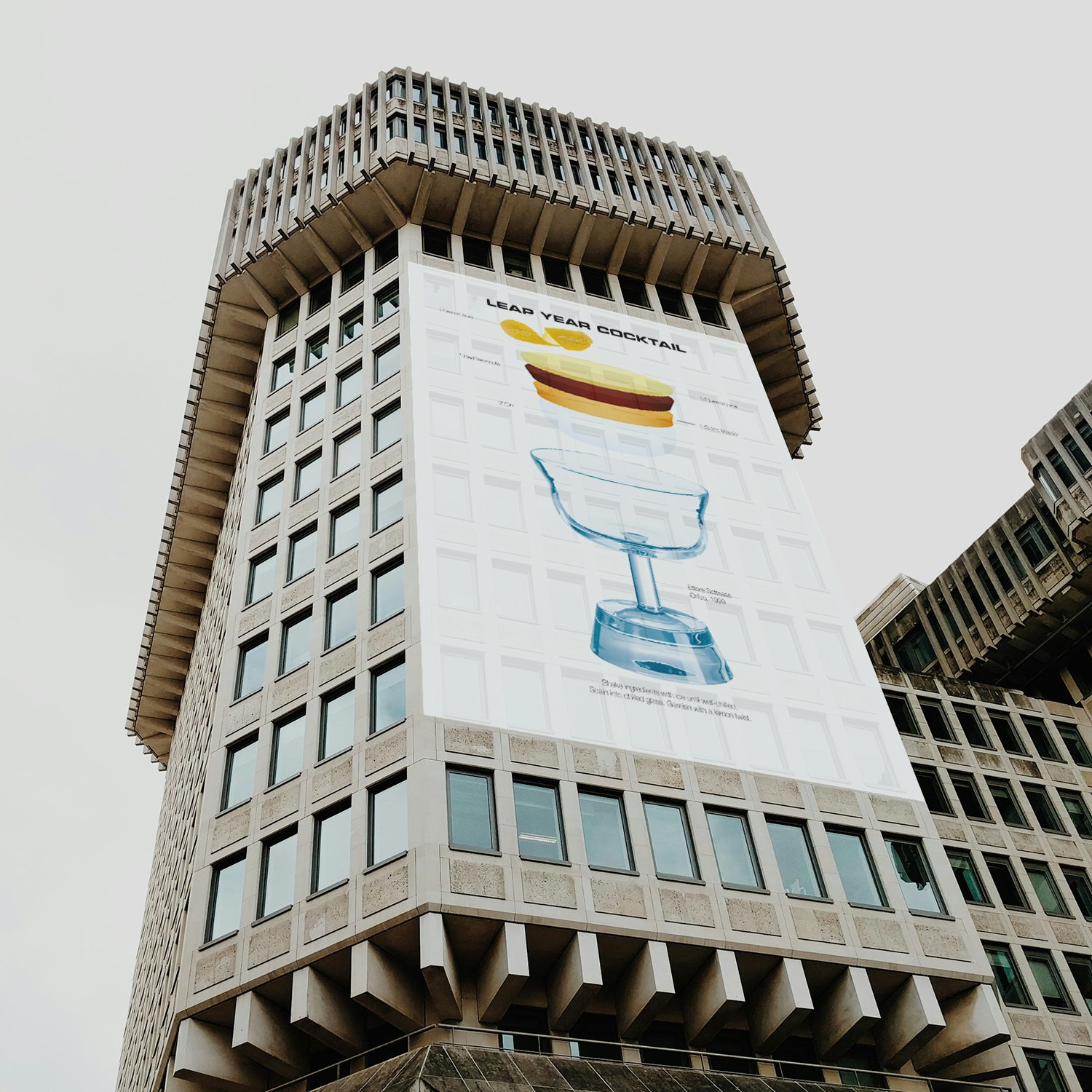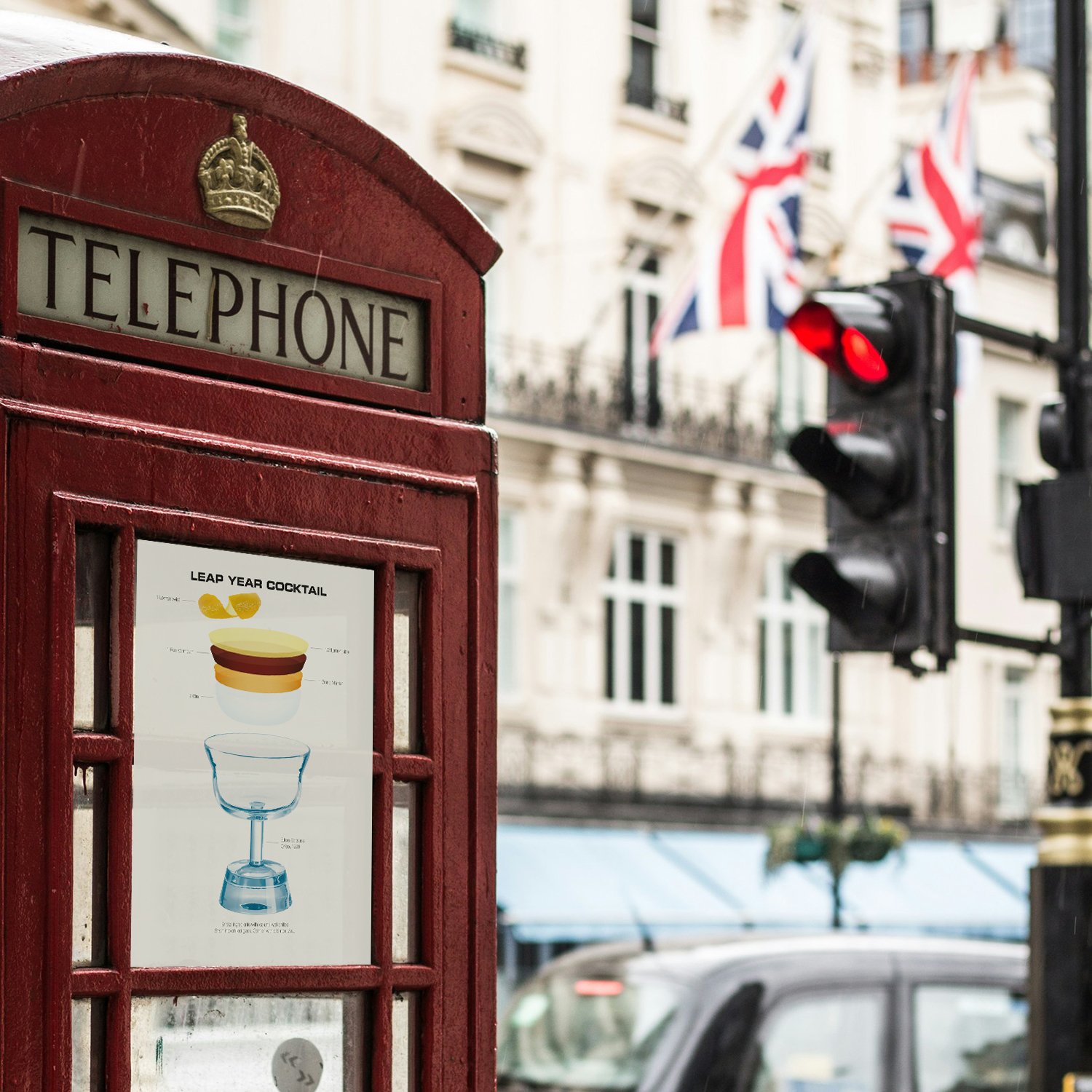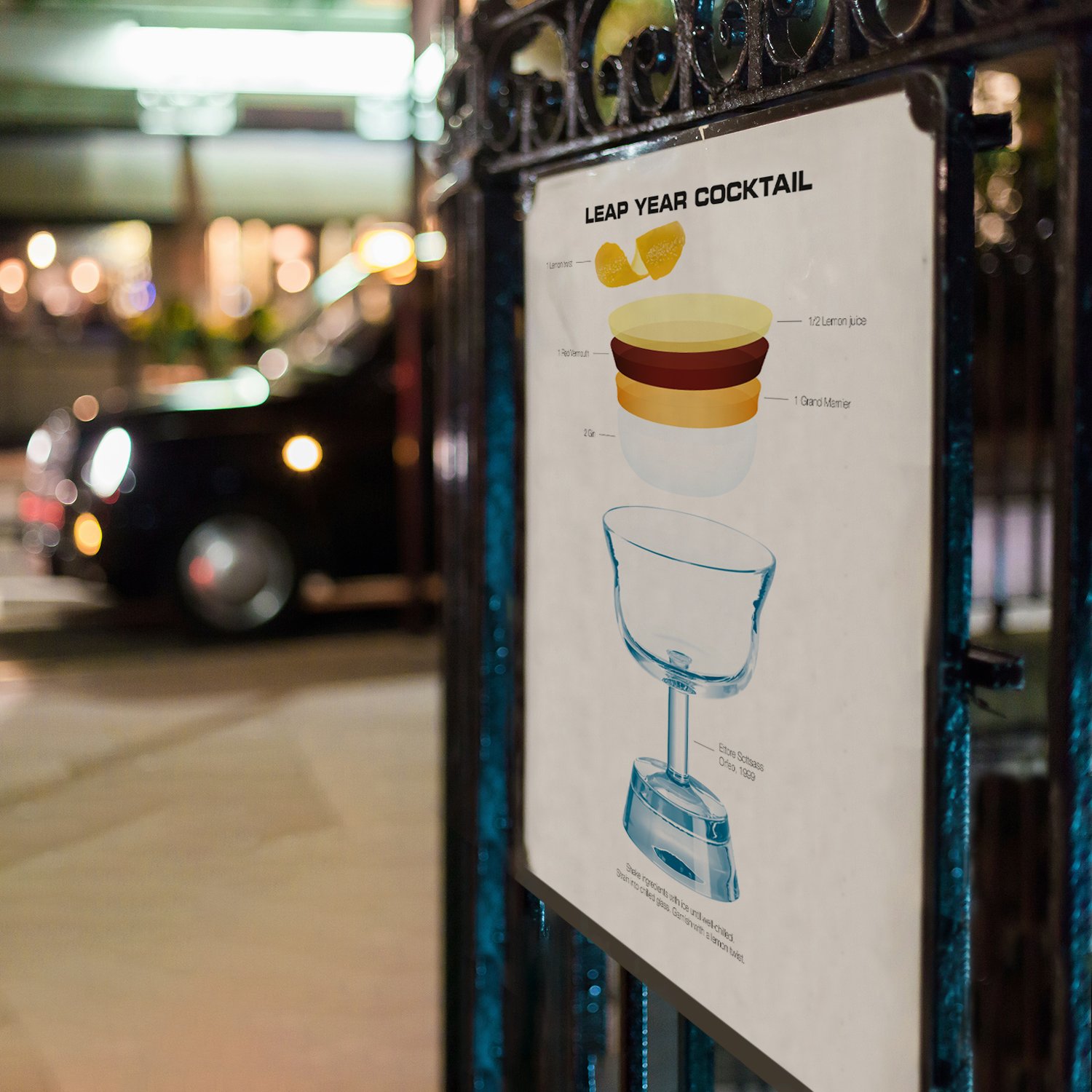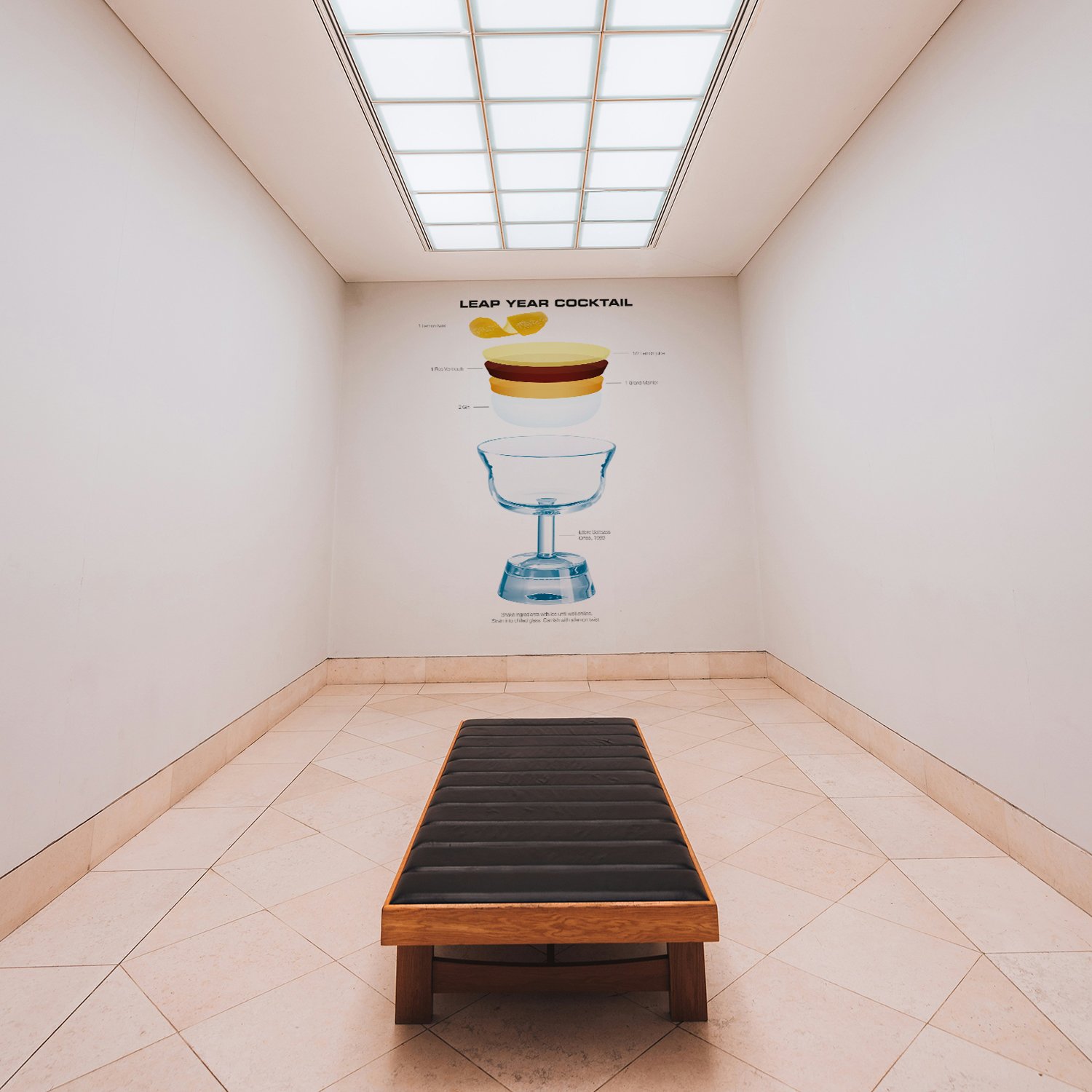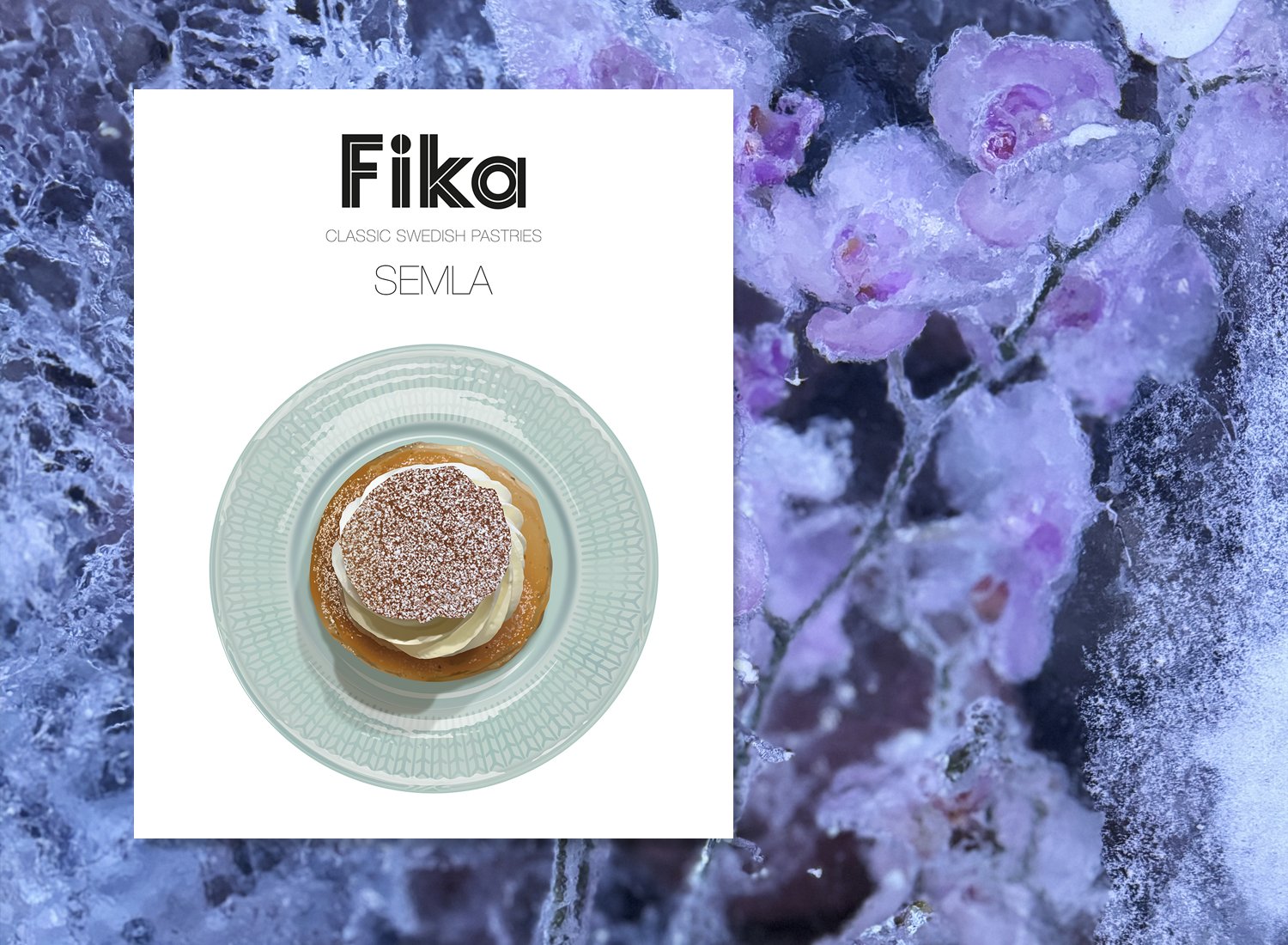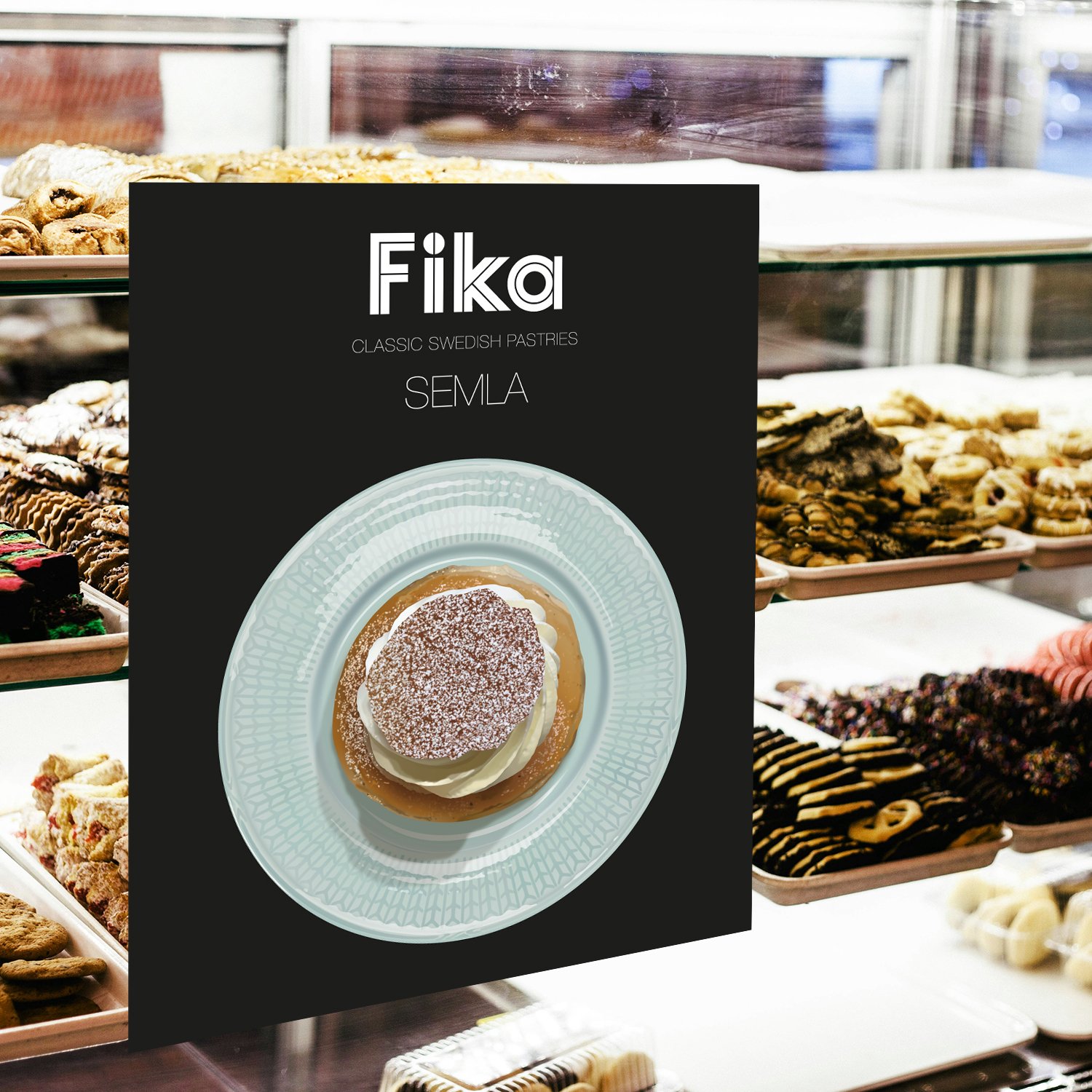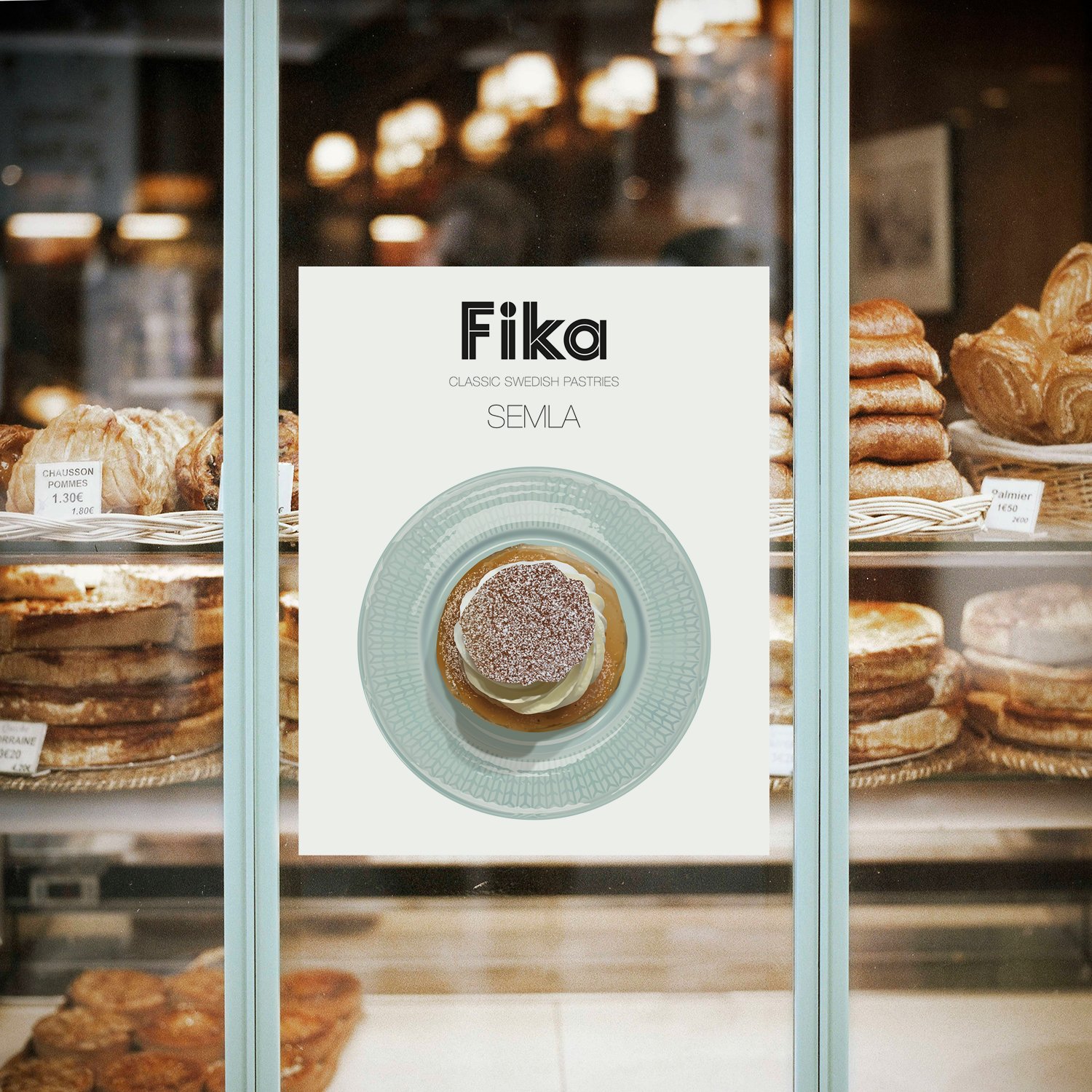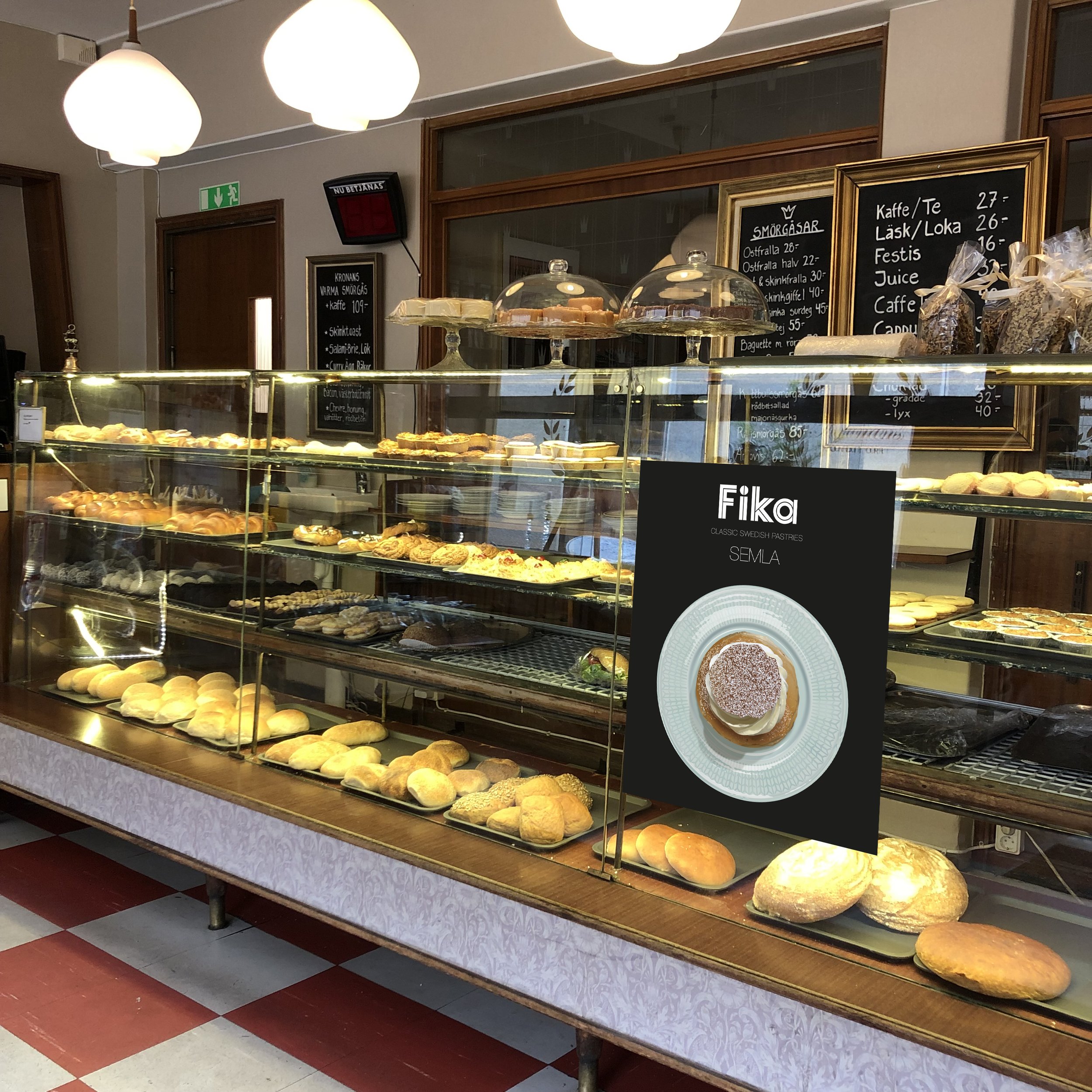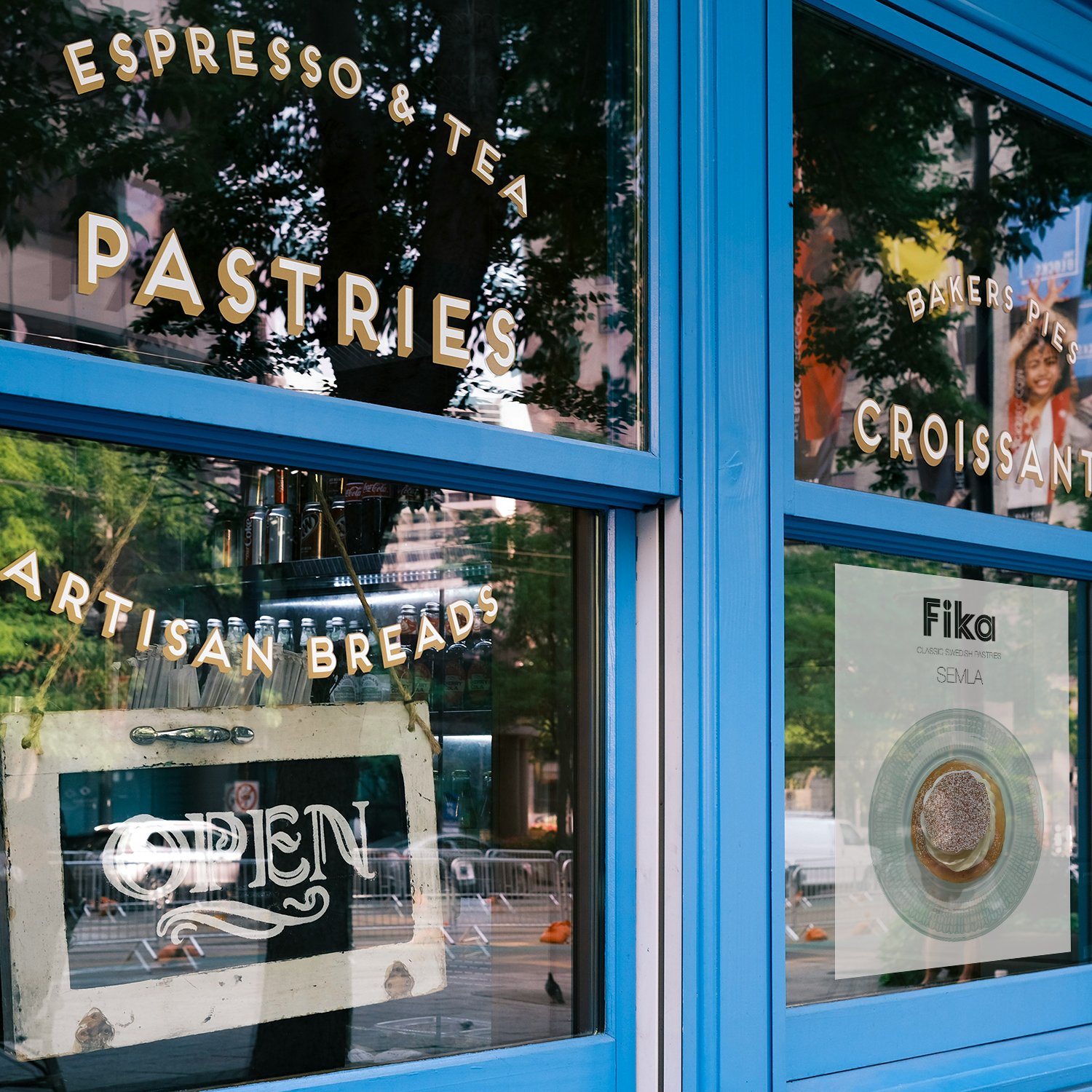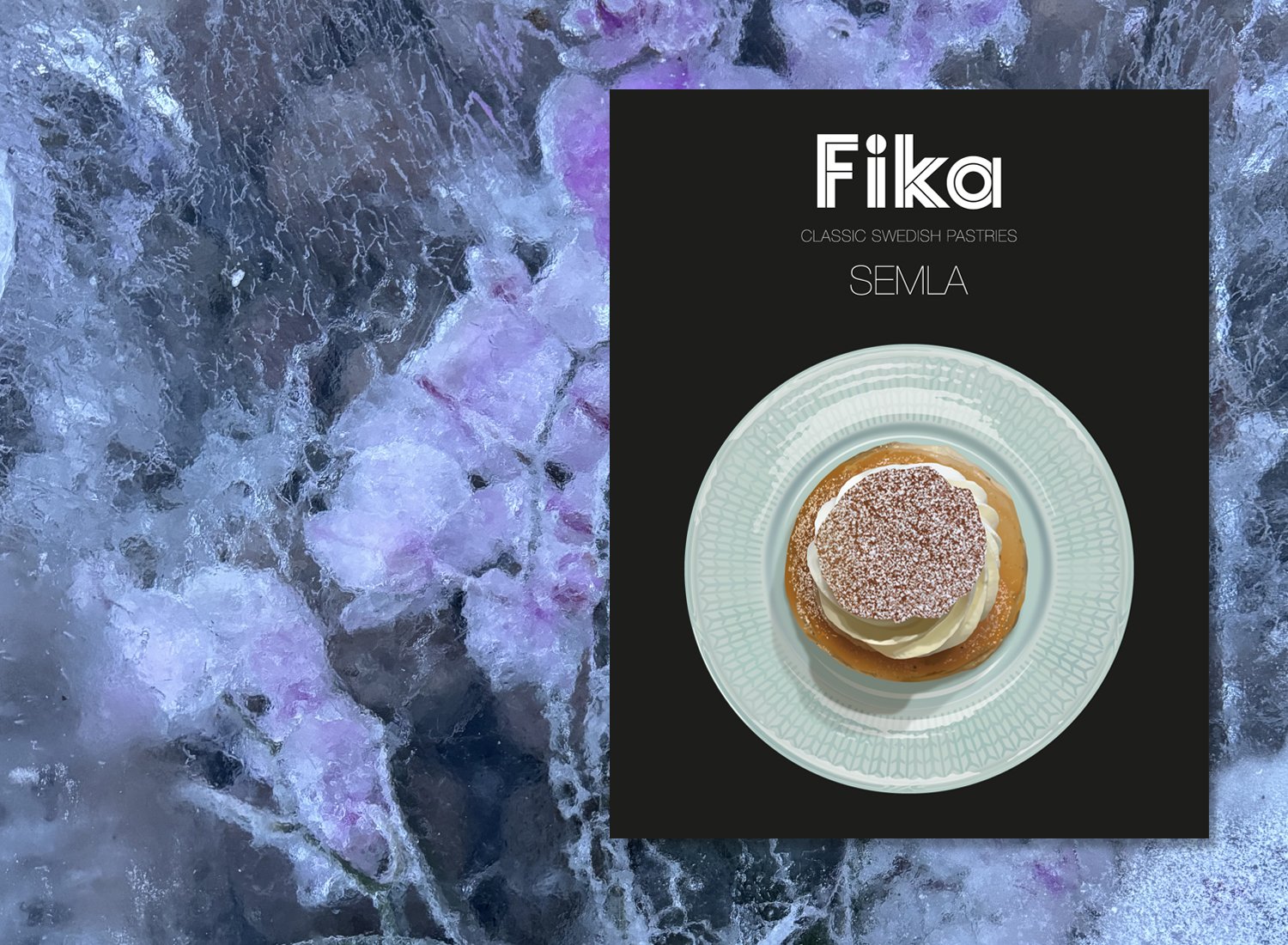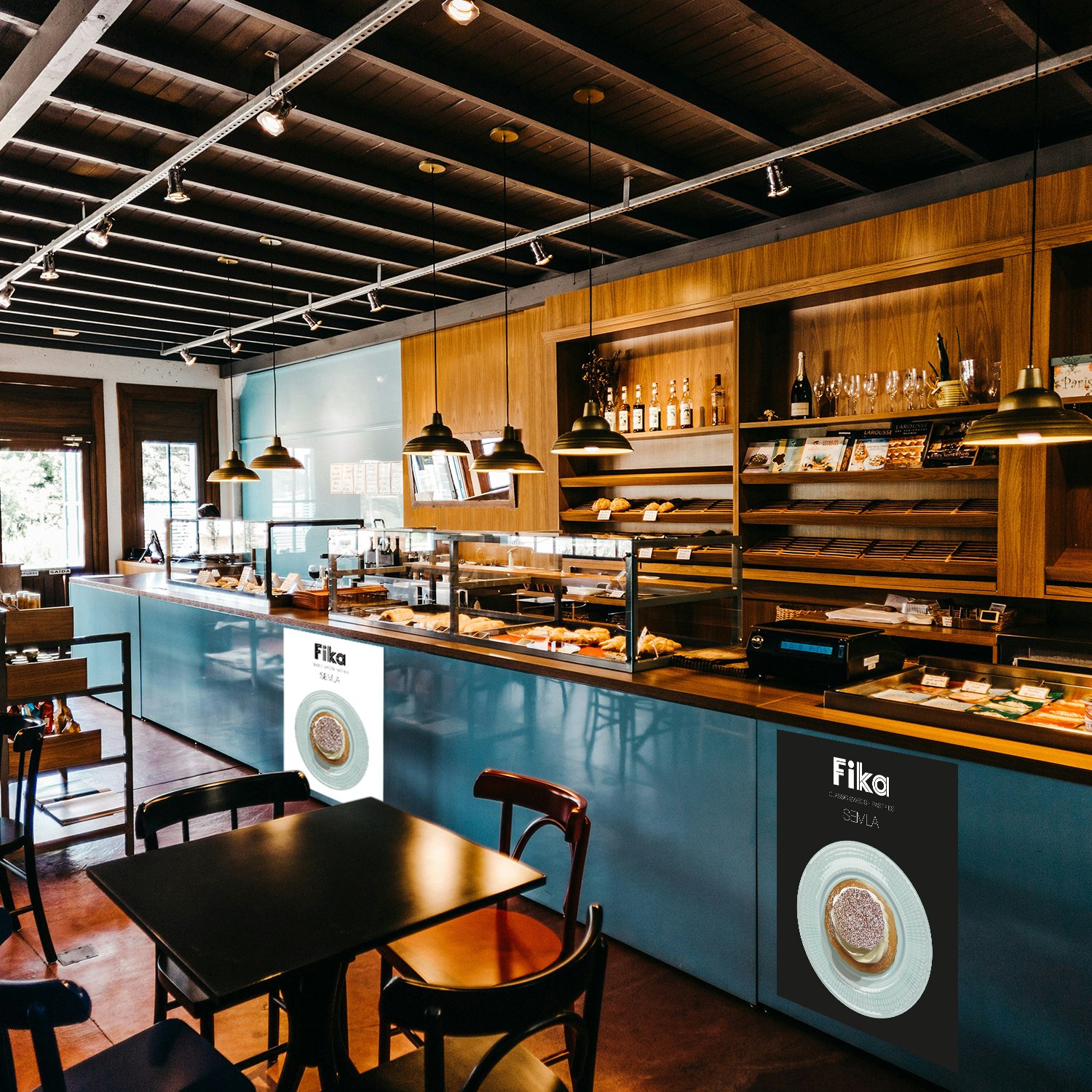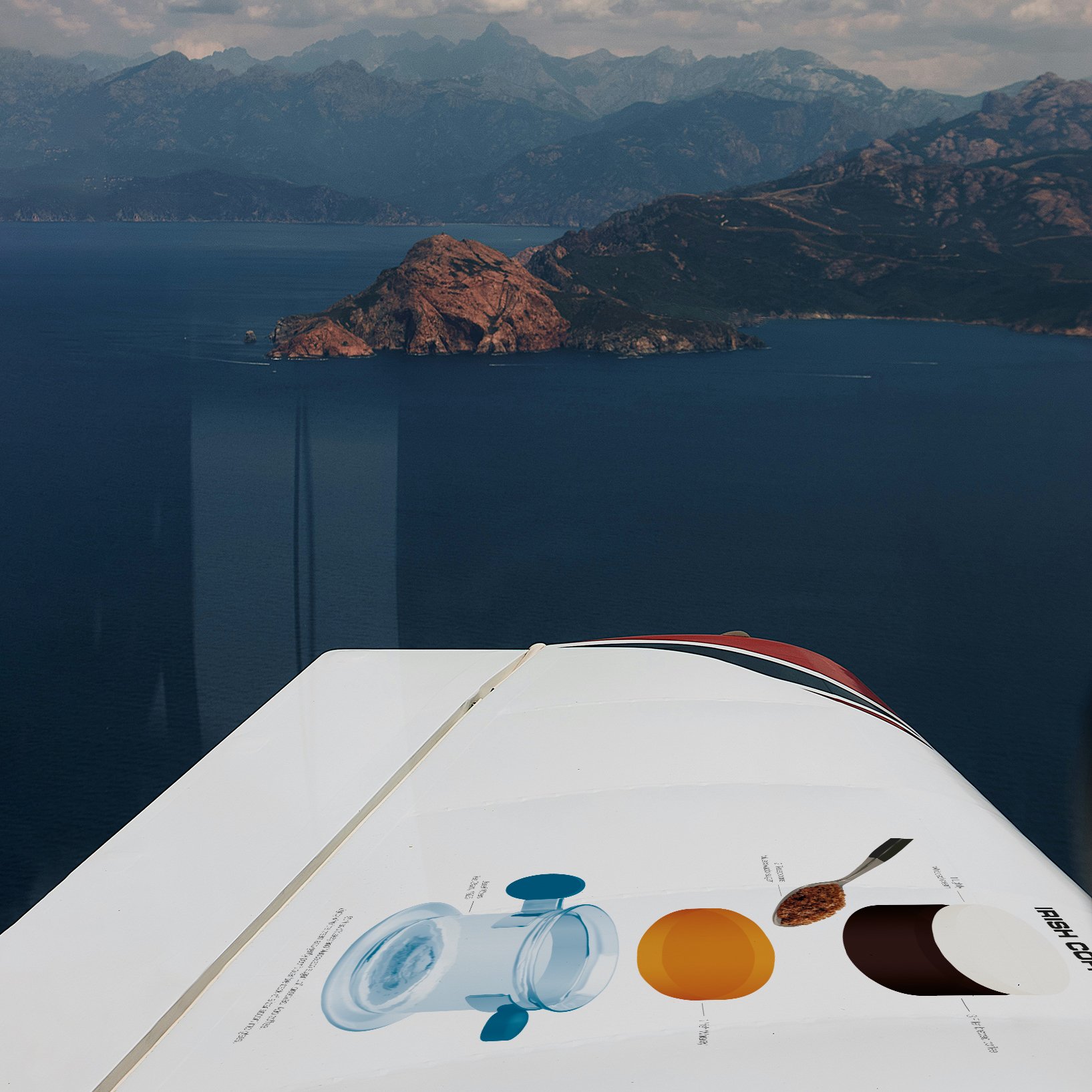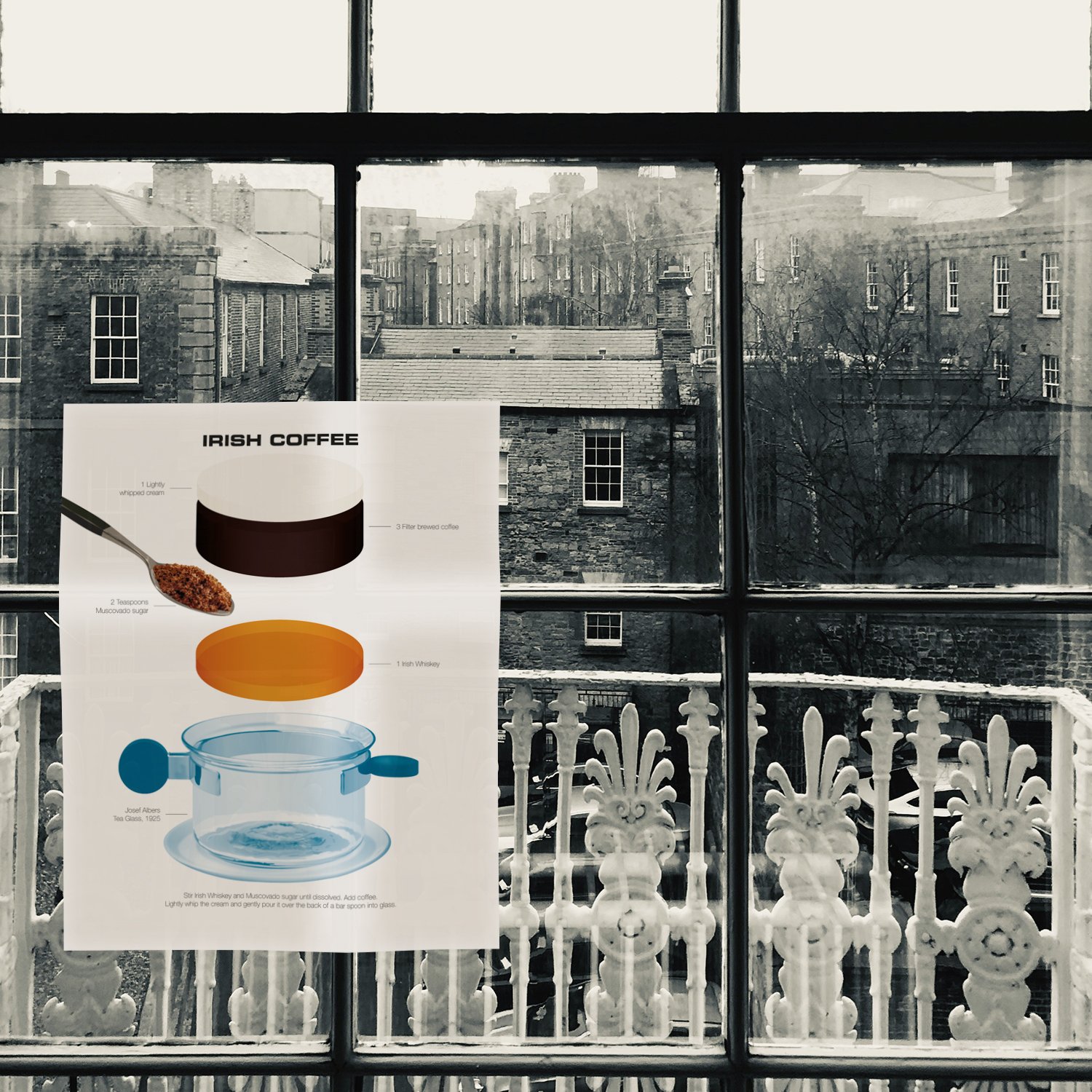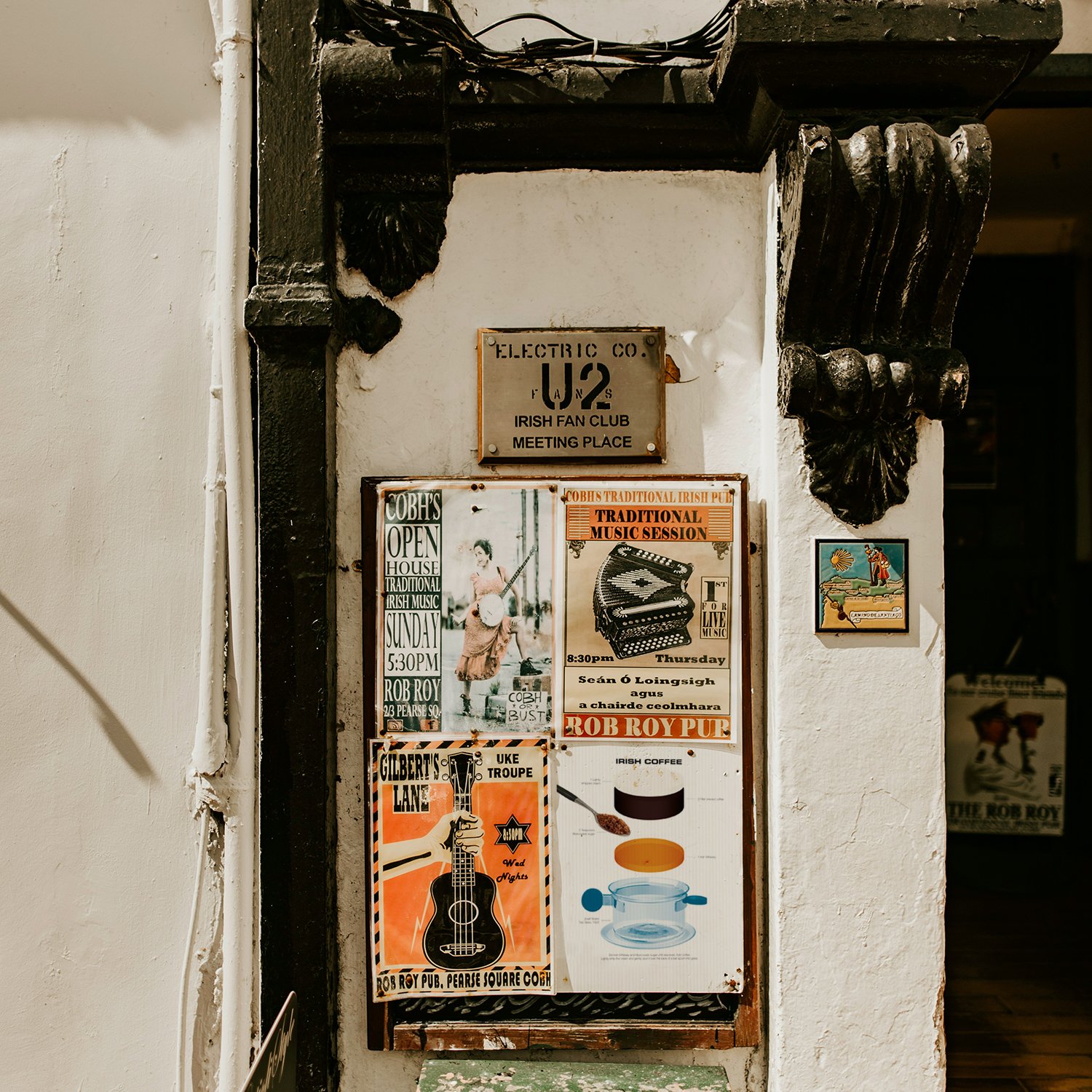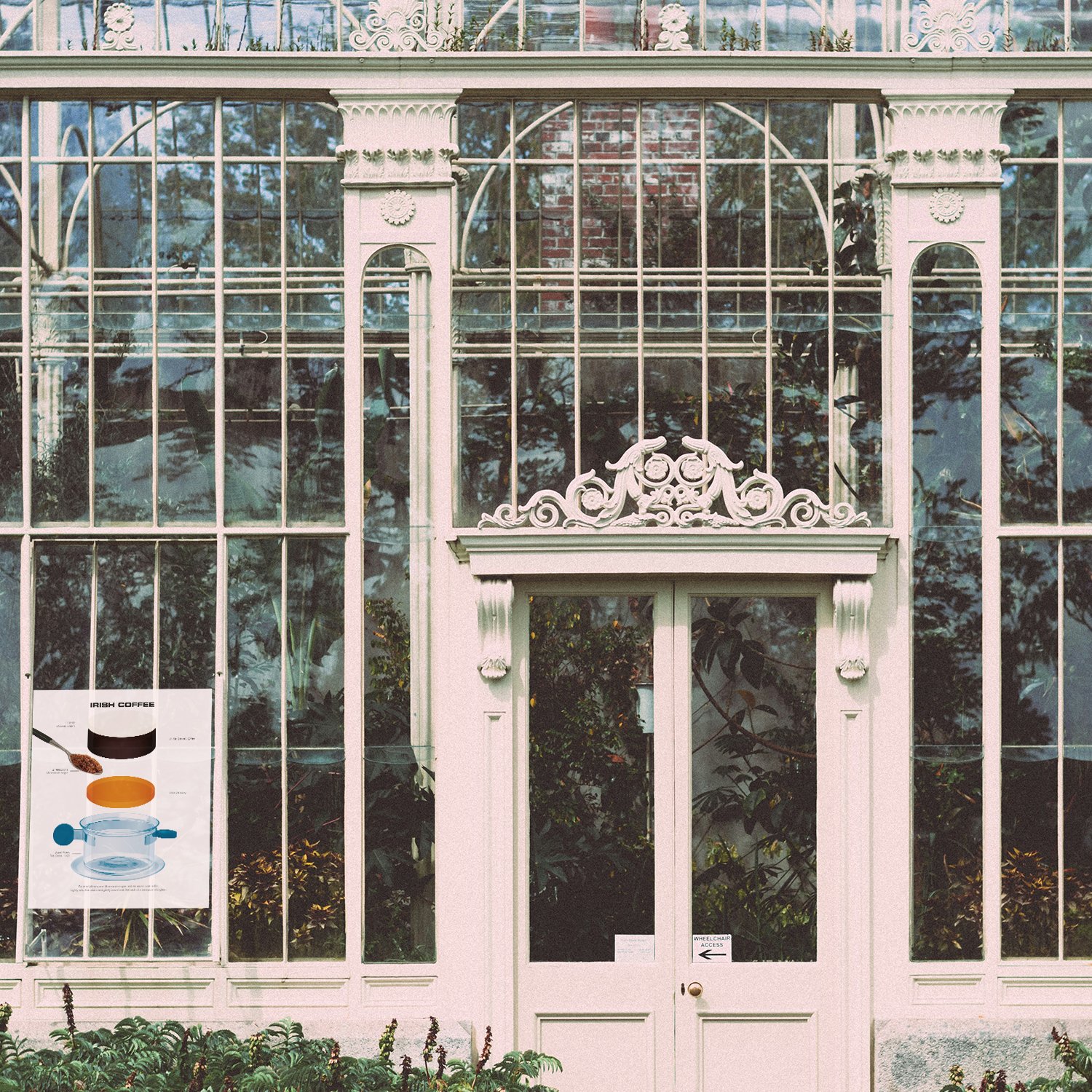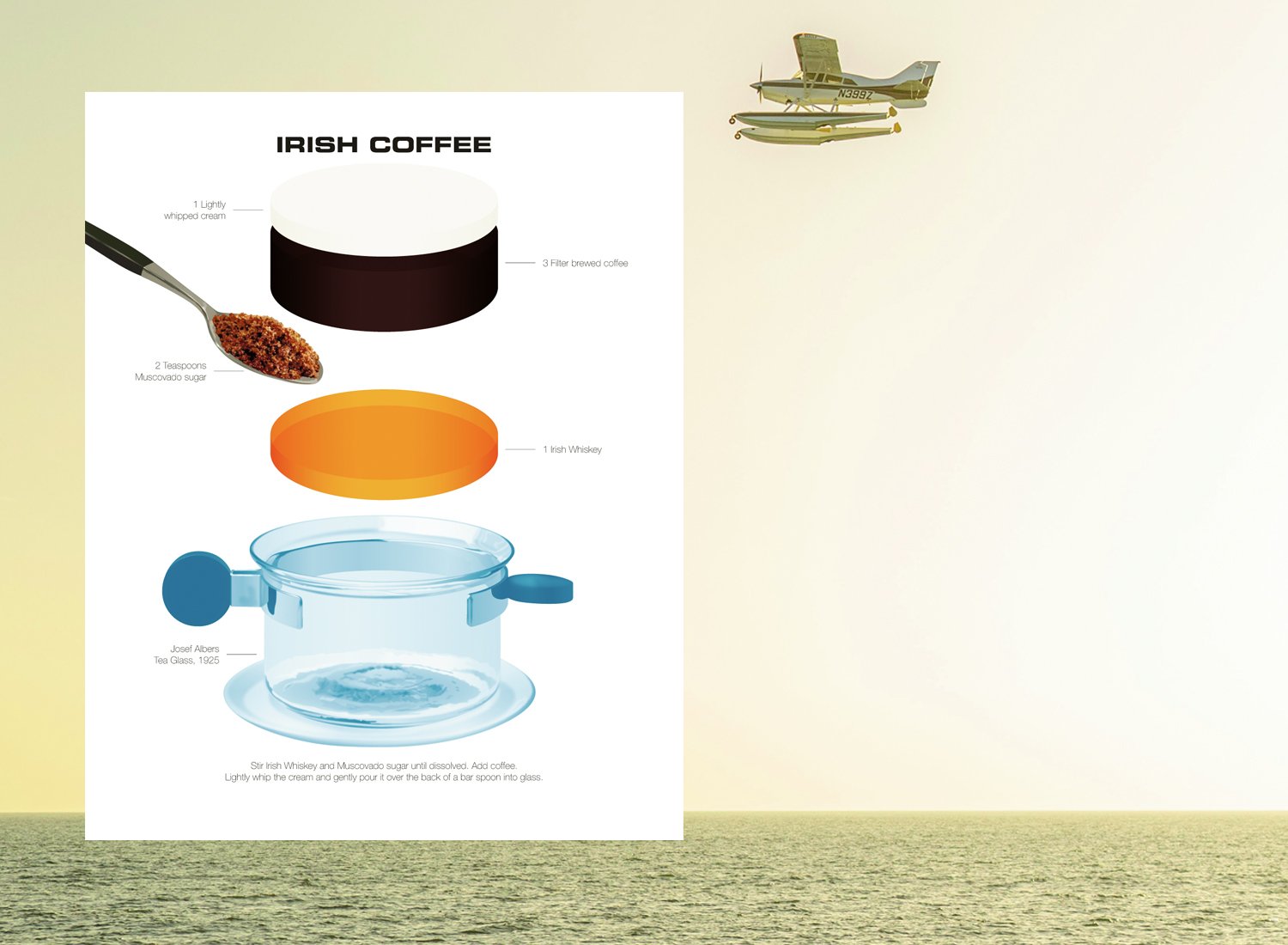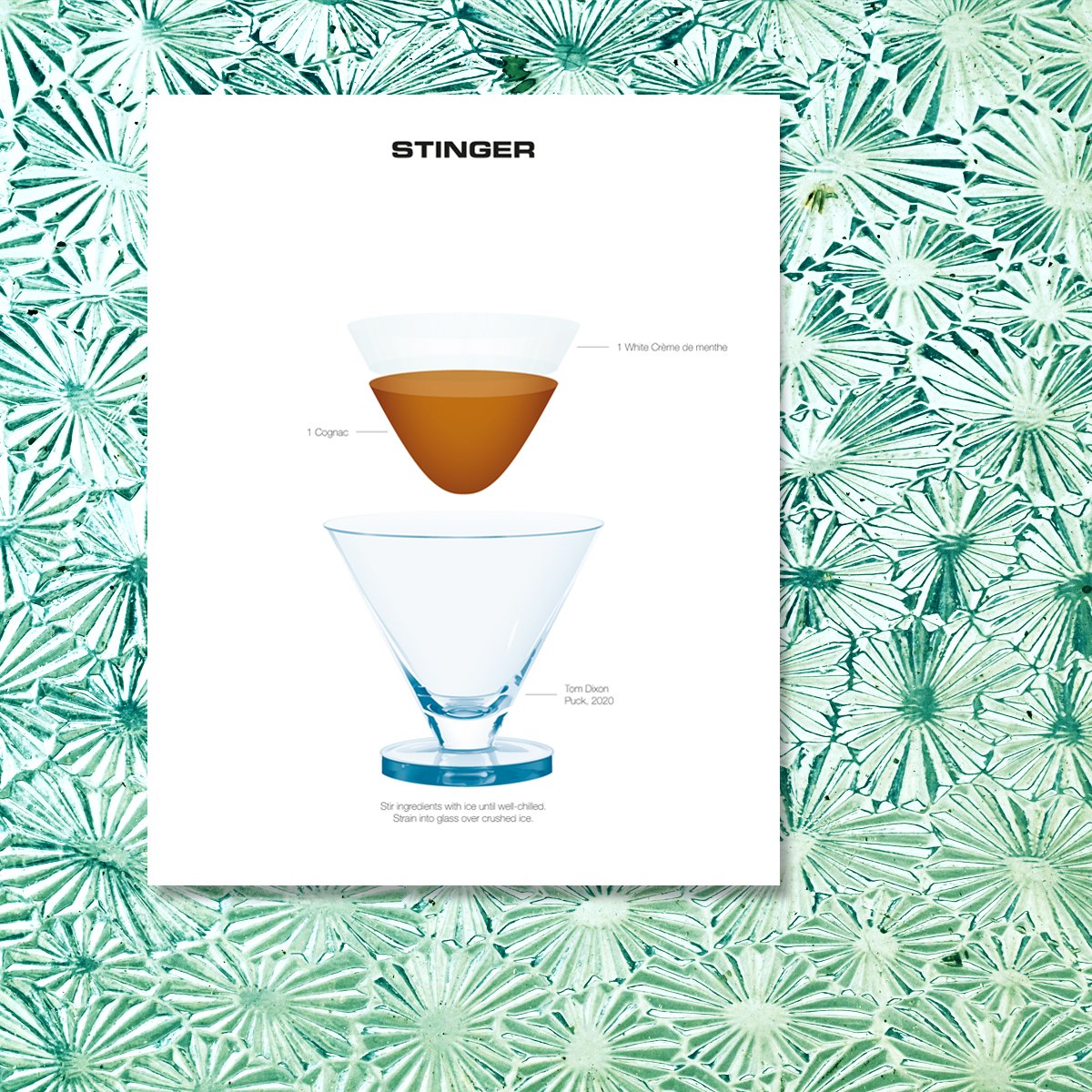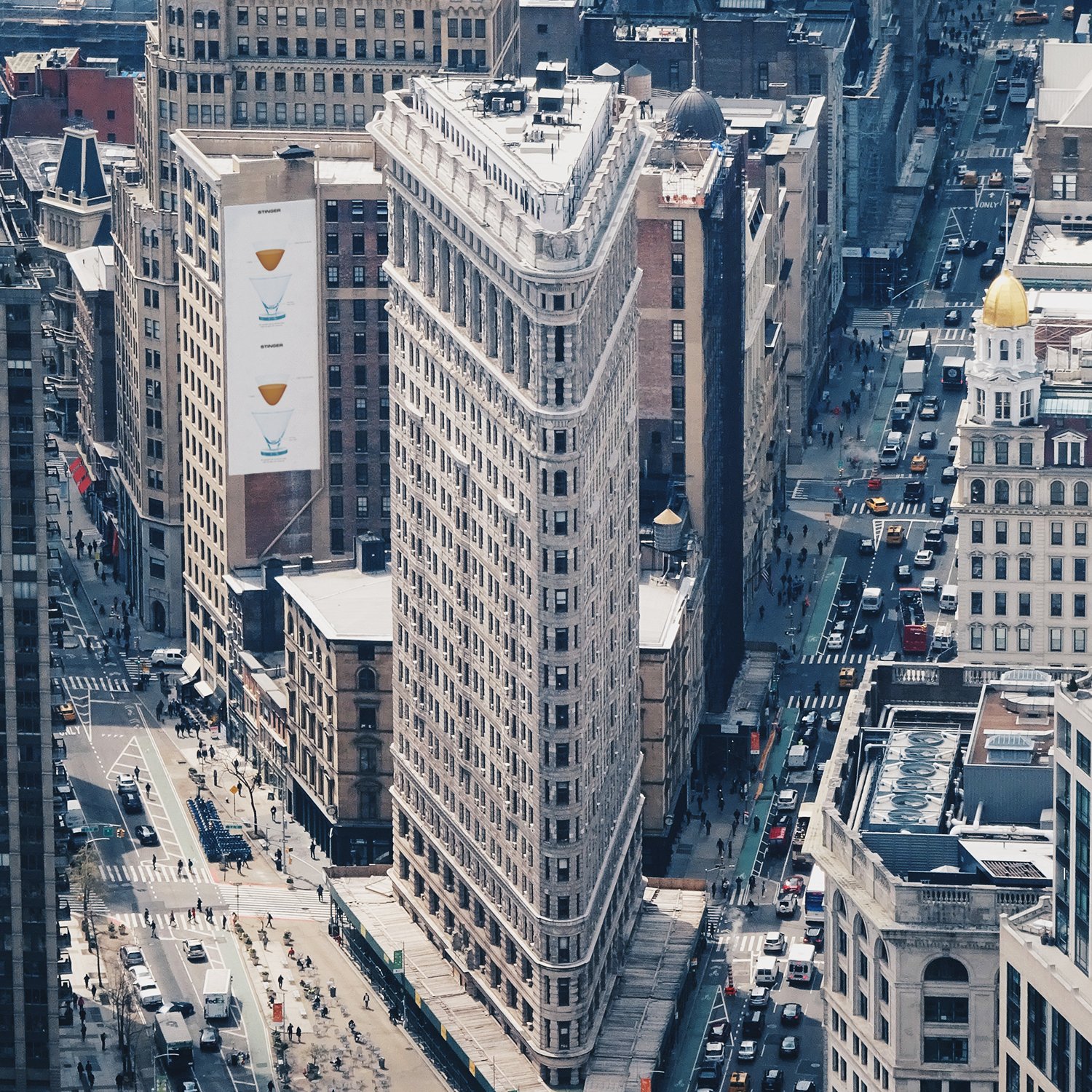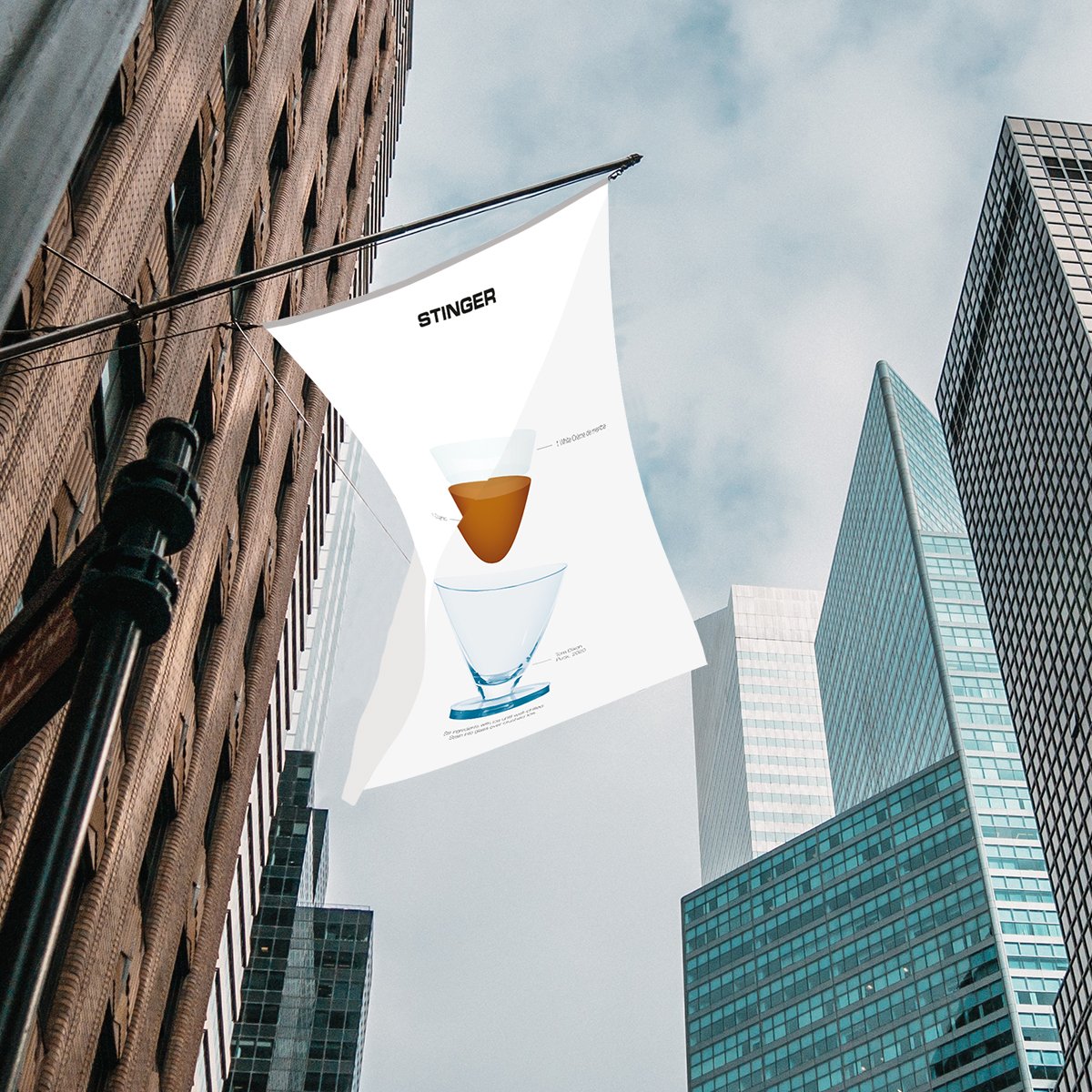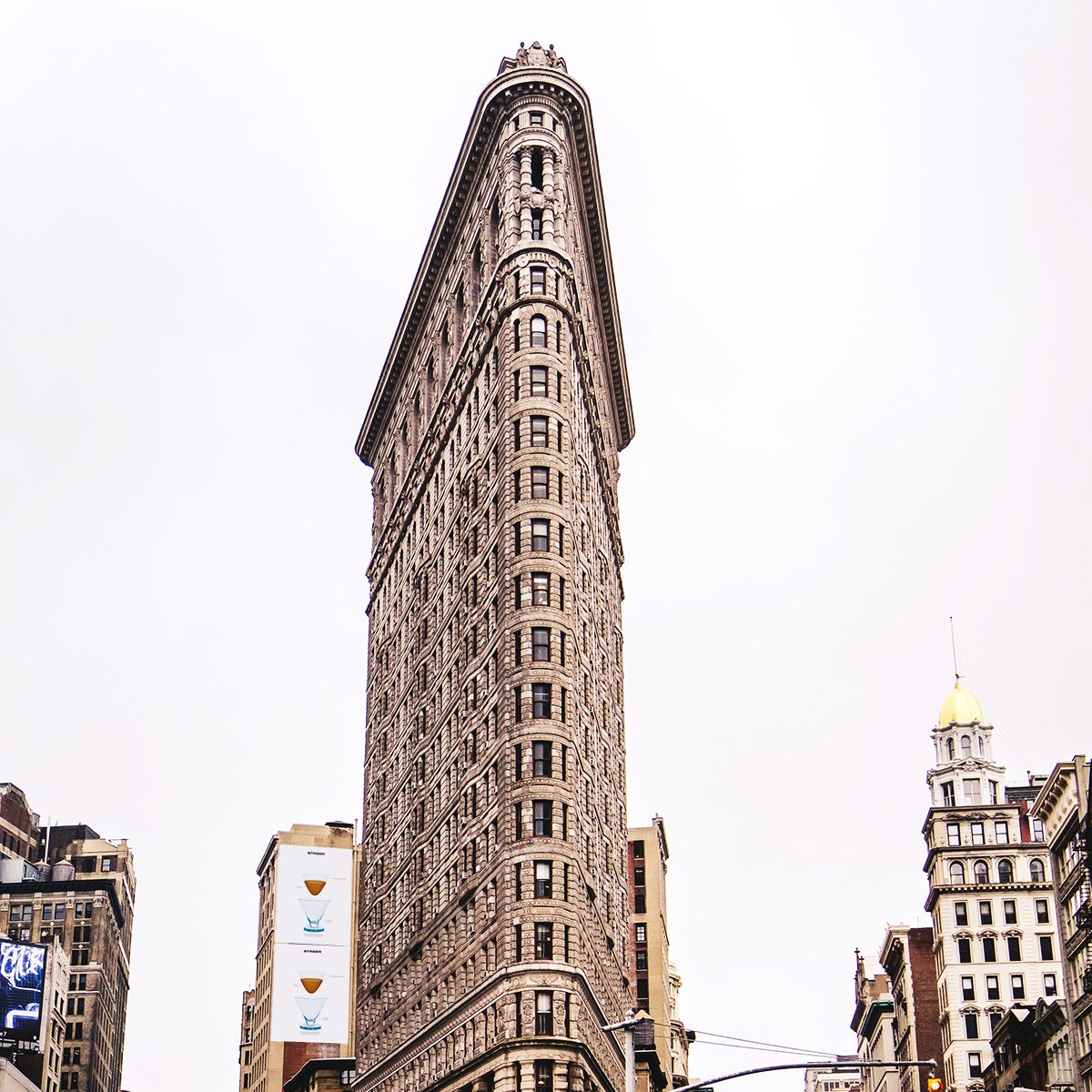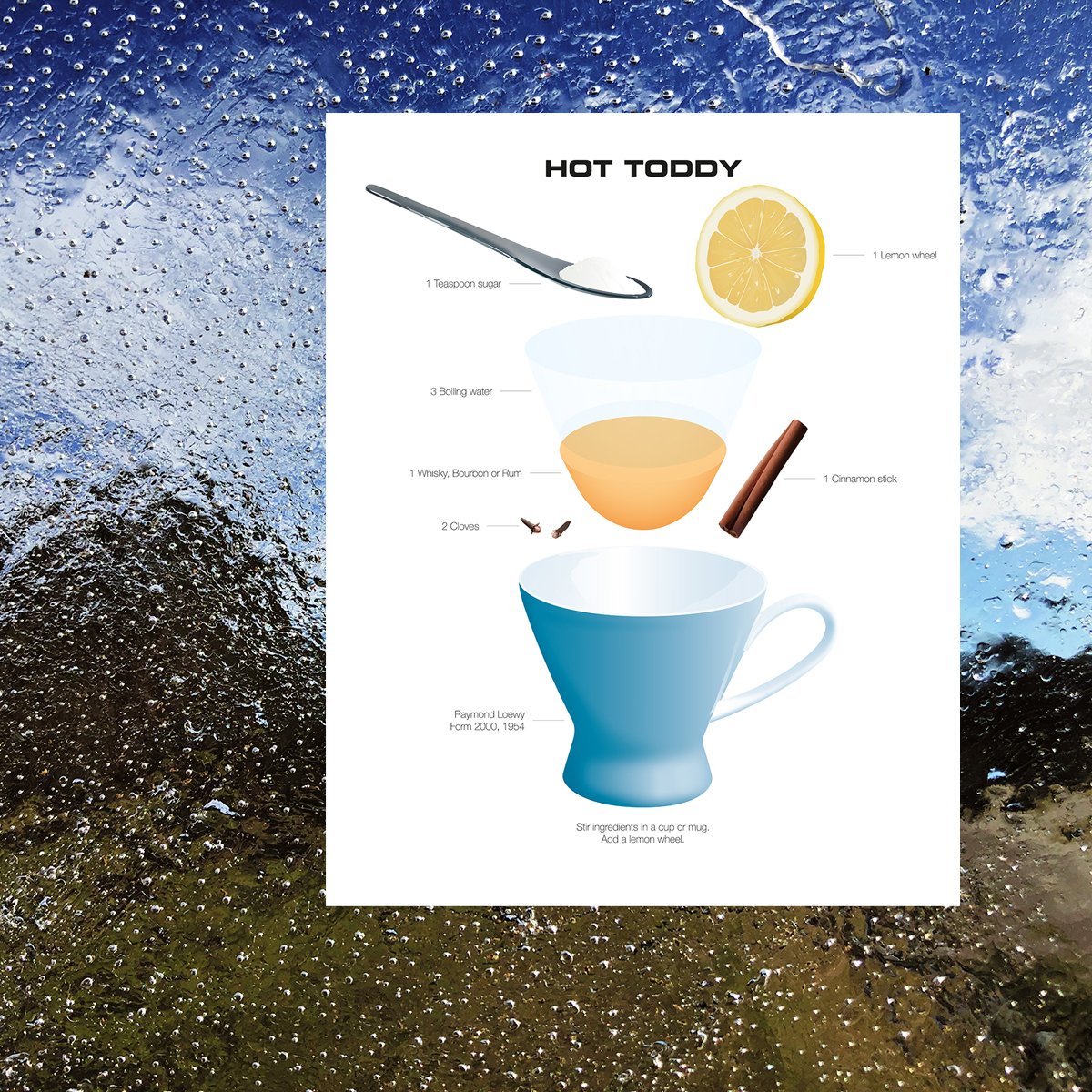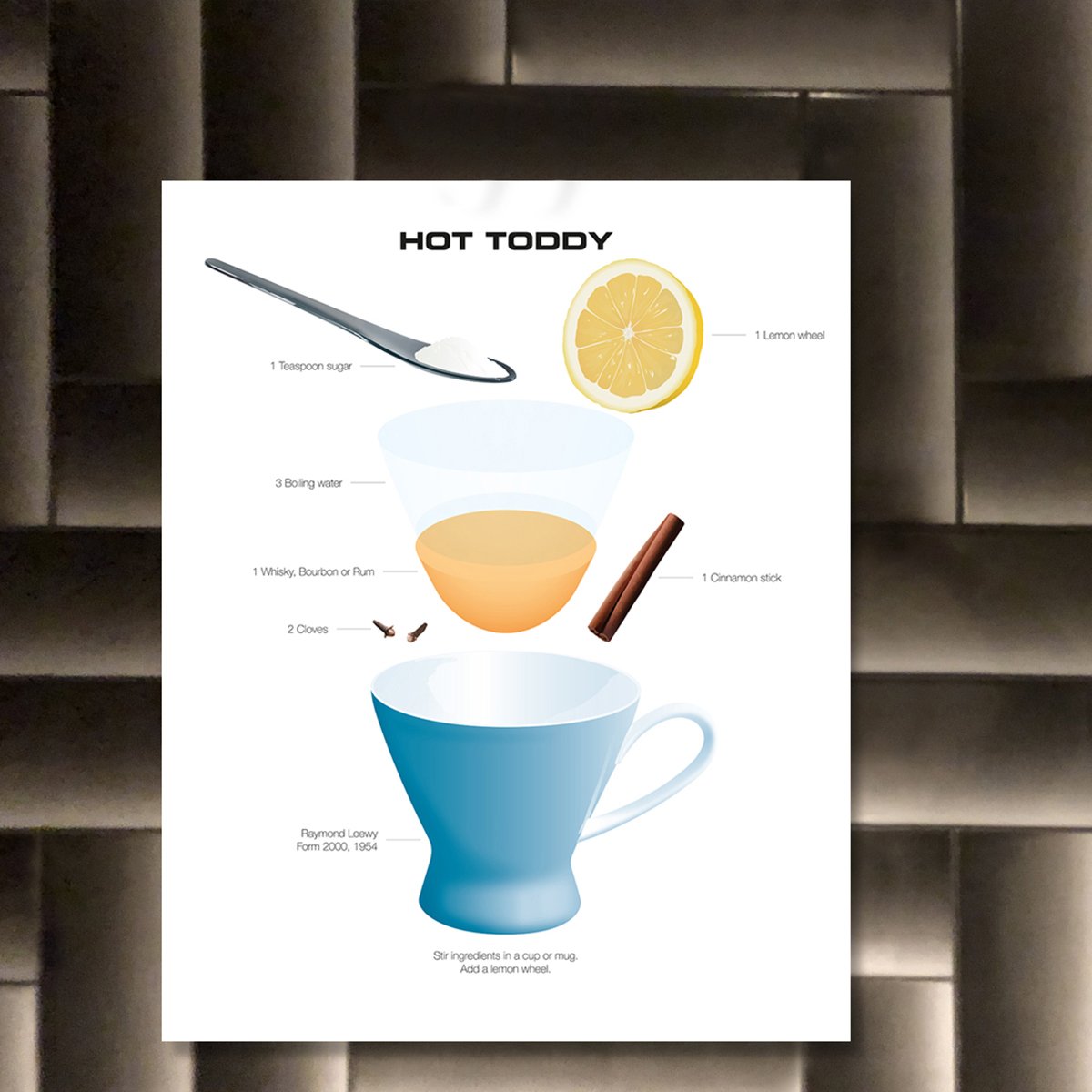The Kentucky Derby was initiated by Meriwether Lewis Clark, the grandson of William Clark of the Lewis and Clark expedition aiming to explore the 1803 Louisiana purchase. Clark developed the Louisville Jockey Club and started to build a racecourse in 1874 on land that he leased from his cousins John and Henry Churchill. Modeled on the English Classic, the Epsom Derby, the annual Kentucky Derby is the oldest consecutively held thoroughbred horse race in the United States. Together with the Kentucky Derby, the Belmont Stakes and the Preakness make the coveted Triple Crown of the United State horse racing. The Kentucky Derby is held on the first Saturday in May. This year the Kentucky Derby celebrates its 150 year anniversary.
THE MINT JULEP
The Mint Julep was first referenced in 1784 as a medicinal concoction to cure an upset stomach. In the late 1700s it eventually transformed into a cocktail for the elites in the southern parts of the United States. This since crunched ice is a big part of the drink and it was usually served in a silver cup. Both of which were only found in the households of the upper class. The Mint Julep was introduced to Washington D.C. in 1850 by Henry Clay, a United State Senator from Kentucky, and it ended up being a favorite cocktail of several presidents. Theodore Roosevelt for instance got his cabinet members to play tennis with him by offering them Mint Juleps afterwords.
In 1938, the Julep was named the official drink of the Kentucky Derby. In a normal year at the Derby they serve up almost 120,000 Mint Juleps over the weekend. This requires an astonishing 10,000 bottles of Old Forester Mint Julep Ready-to-Serve Cocktail, 1,000 pounds of freshly harvested mint and 60,000 pounds of ice.
THE DESIGNER
The Slant glass was designed by Teruhiro Yanagihara in 2006 for Kimura Glass.
La Pasta Italiana: Pici
Made traditionally with just flour, water and salt, Pici is considered part of the “cucina povera” the poor cuisine, due to its lack of egg. The Pici pasta looks like a long, thick spaghetti curled up in bundles like tagliatelle. This Tuscan specialty is sometimes called “Pici Senesi” as it is believed to originate in Siena. Its roots however, dates all the way back to ancient Etruscan times. A pasta similar to Pici has been found depicted on a mural in the Tomb of the Leopards in Tarquinia, an Etruscan burial chamber from 540-470 BCE (that is technically in Lazio, not in Tuscany). From Tarquinia in the Viterbo region the Pici spread throughout Tuscany.
The rustic Pici has always been considered to be a rural, dish eaten by peasants (as opposed to the royal Mafaldine from Campania). In Tuscany it is often served with Cacio e pepe but one of the most traditional dishes is Pici all’aglione a recipe from the area surrounding Siena. The sauce is made with aglione, (a regional type of garlic), tomato, olive oil and peperoncino. Another typical way of eating the pasta is Pici alle briciole made with thin slices of Tuscan bread, peperoncino, garlic, salt, grated Tuscan Pecorino and, of course, olive oil.
Happy Lei Day
The lei is known all over the world as a symbol of the aloha spirit. When making a lei the mana (or spirit) of the creator of the lei is woven into it so when you give someone a lei you give away a part of you. The American poet Don Blanding thought there should be a set day to celebrate the tradition of giving and receiving a lei. Presenting his idea to Grace Tower Warren, a columnist at the Honolulu Star Bulletin in 1927 she suggested it should be a day in May, coining the phrase “May Day is Lei Day”. Said and done, the first Lei Day was celebrated on May 1, 1928. The following year Governor Wallace R. Farrington declared that Lei Day should be observed “by all true friends of Hawai’i as a day of celebration – not a State holiday”.
The Blue Hawaii
On January 3, 1957 a representative of the Bols distillery walked into the bar at the Hilton Hawaiian Village Waikiki Beach Resort) in Honolulu asking the bartender Harry Yee to create a cocktail featuring Bols Blue Curaçao. Mr. Yee tried several variations before settling on a combination of vodka, rum, blue curaçao, pineapple juice and sweet-and-sour mix. The cocktail became an instant hit and remains popular around the world to this day.
Yee was born in Honolulu where his Chinese parents owned a general store. After WWII, during which Yee was a fighter pilot for the Chinese Air Force fighting on the side of Chiang Kai-shek, he got a job at Trader Vic’s, learning everything about tropical drinks. This led him to the job at the Hilton Hawaiian Village serving up tropical drinks to American tourists vacationing in Hawai’i during the 1950s. Most tourists expected to find “Hawaiian drinks” on the menu but since Hawaiians traditionally never used much alcohol Yee had to invent them himself. Apart from the Blue Hawaii Mr. Yee came to invent 15 more cocktails, including the Tropical Itch.
Celebrating Louisiana Statehood
The Kingdom of France had been controlling the Louisiana territory from 1682 until it was given up to Spain in 1762. In 1800 Napoleon wanted to re-establish a French colonial empire and got it back in exchange for Tuscany. With a war with England lurking he decided to sell it off to the United States in 1803 as part of the Louisiana Purchase. At the time of the purchase the Louisiana territory was enormous. It reached into Canada in the north, engulfing most of Montana, North Dakota, Wyoming and Minnesota, all of South Dakota, Iowa, Nebraska, Kansas, Missouri, Oklahoma and Arkansas as well as parts of Colorado, New Mexico and Texas along with Louisiana itself. The border to the north, southwest and the area east of the Mississippi were however disputed with Spain until 1812. After that, Louisiana was admitted to the Union as the 18th state on April 30, 1812, with basically the same borders as the present state.
THE VIEUX CARRÉ
Just like the Hurricane, the Sazerac and the Grasshopper, the Vieux Carré was created in the “Big Easy”, New Orleans. The name of the drink is French for old square or old quarter, being the original name of the New Orleans’ French Quarter. When ordering the drink the Creole way of saying it is Voo car-ray.
The cocktail was invented in the mid to late 1930s by Walter Bergeron, head bartender at the Carousel Bar in the Hotel Monteleone. The Hotel Monteleone opened in 1886 when a Sicilian nobleman, Antonio Monteleone, bought the hotel in the early 1880s. Still after five generations, the hotel still remains in the family. The Carousel Bar as you find it today was installed in 1949 and is decorated with paintings of circus animals and is lit up just like a real carousel, rotating at the smooth pace of 15 minutes per revolution.
Day Drinking In Disguise
The Tokyo Kaikan (meaning Tokyo Meeting Hall) was built in 1921, facing the Imperial Palace. It soon became a favorite spot for the city’s corporate elite with its restaurants, ball rooms and meeting rooms. The bar had five bartenders on its staff during the 1920s.
From the surrender of the Empire of Japan in September of 1945 until the Treaty of San Francisco in April of 1952, Japan was occupied and administered by the Allied Forces. During this period the Tokyo Kaikan functioned both as the US military officer’s club and as the Tokyo American Club for expatriate businessmen. With the influx of American soldiers the Kaikan soon went from five to forty bartenders on the payroll serving up to 1000 customers per day.
During the post-war occupation, people of Japan were living under hard conditions and rations while some of the American troops spent their free time in the bars of Tokyo. Overseeing the occupation was Supreme Commander for the Allied Powers, US General Douglas MacArthur. Entering the bar at the American Club in Tokyo in April 1949, General MacArthur was horrified to find American soldiers having fancy cocktails long before lunch when the Japanese outside were suffering.
After reprimanding his troops the American party stopped. That is until a crafty bartender, possibly Japan’s most famous bartender, Kiyoshi Imai, who worked the bar at Tokyo Kaikan, had a stroke of genius. He took a regular Gin Fizz, dialed down the seltzer, added an ounce of milk and called it the Kaikan Fizz. This made the drink look like a healthy glass of milk and no general could be opposed to something as wholesome as milk. So the soldiers could go back at it.
When the American troops left Japan in 1952, and the need to hide your day drinking was gone, the Kaikan Fizz had already become a modern classic that has been enjoyed ever since.
The glass called Bamboo was designed in 2002 by Japanese designer Yukari Hirono.
Finally, a tip. When making the Kaikan Fizz, make sure to shake it for a long time to make sure the milk and lemon juice doesn’t curdle. After a vigorous shake, stir while straining it into the glass.
This Is How To Make It!
A brand new series with a hands on approach to cocktail making by stop motion animation. These short animations will be featured on a very irregular basis on @mobilita.studio on Instagram. First up is the classic Dubonnet Cocktail. Of Course, if you prefer it is also made as a cocktail print.
Dubonnet was created in 1846 after a competition was held by the French government with a prize for anyone who could make a palatable quinine-rich drink. The French colonists in North Africa were suffering greatly from malaria and the only known cure was the incredibly bitter bark from the South American cinchona tree. The aim was to create a drink with enough of the quinine to help the French combat malaria but still be enjoyable enough to be used voluntarily.
Joseph Dubonnet created his Dubonnet by mixing Roussillon wines from five different grapes, blending them with herbs and spices like cocoa beans, colombo (a mild type of curry powder), orange peel, Colombian green coffee, cinnamon, camomille and elderflower. He then left it to mature in oak vats for three to four years.
The Dubonnet cocktail first appeared in print in 1914 in a book simply called Drinks by Jacques Straub but no one knows who first created it.
The Saketini Just Turned 60
THE OPENING OF NEW YORK’S WORLD’S FAIR 1964
New York World’s fair ran two six-month periods, April 22 – October 18, 1964, and April 21 – October 17, 1965. It was held in Flushing Meadows-Corona Park in the borough of Queens, New York and featured over 140 pavilions and 110 restaurants, representing 80 countries. The fair was attended by more than 51 million people, but with an expected 70 million, it was far from an economic success. Meant to showcase the future many pavilions were built in a Mid-century modern style influenced by jet aircraft and the Space Age. The most popular pavilion was General Motors Futurama II, letting the visitors experience life in the “near future” with realistic 3D models. IBM featured a theater designed by Eero Saarinen showing a film by Charles and Ray Eames about computer logic. The most unexpected pavilion might have been the Vatican’s that incredibly brought Michelangelo’s priceless sculpture Pietà from St. Peter’s Basilica in Rome. Of course, there was also the Japanese pavilion where you could sample the novelty cocktail Saketini.
THE SAKETINI
The origins of the Saketini cocktail are not entirely clear. It is said to have been invented by Matsuda-san, a chef from Queens who introduced the drink at the Japanese pavilion at the New York World’s Fair in 1964.
After the World’s Fair the recipe for the Saketini was lost and the cocktail led an all but forgotten life until the Martini craze of the 1990s. Even though the Saketini was invented long before this the cocktail historian David Wondrich still puts the Saketini (maybe a bit unfairly) in “that sickly and dismal tribe” of chocolate martinis, mango martinis, and appletinis. Another possible origin story is that the Saketini was invented at the first Benihana restaurant on West 56th Street in New York City. Benihana was founded by 25-year old Hiroaki Aoki the same year as the World’s Fair, in 1964, and the cocktail is said to first having been made the year they opened.
THE DESIGNER
The Japanese glassware designer Masakichi Awashima as born in 1914. After graduating from the Japan Art School in Tokyo he worked for Kozo Kagami who had learned western glass blowing techniques in Germany. The sake cup was designed by Awashima in 1958.
La Cucina Casalinga
TROFIE
The region of Liguria is basically the continuation of the French Riviera. Known for the picturesque villages called Cinque Terre, (Monterosso, Vernazza, Corniglia, Manarola and Riomaggiore), but also Portofino, San Remo and, of course, Genova. Genova rose to power as a maritime republic in the Middle Ages, dominating trade in the Mediterranean Sea thanks to its prowess in shipbuilding and banking. During the city’s prime in the 16th century Genova rivaled Venice, attracting many artists including Rubens, Caravaggio and Van Dyck. Still to this day the city is filled with more beautiful palaces than they know what to do with, and visiting the city you often stumble upon incredible 16th century frescoes in shops, restaurants and bars. Liguria is also known for its pasta.
The pasta of choice in Liguria is the Trofie, a type of pasta originating in the Ligurian cities of Recco, Sori and Camogli m, on the so called Golfo Paradiso. This short pasta is made by hand rolling small pieces of dough, creating tapered ends. Then twisting the pasta into its final shape. It is thought that it was originally made from leftover dough from other types of pasta, rolled by fishermen’s wives while waiting for their husbands to come back from sea. The name probably comes from the Ligurian verb strufuggiâ meaning ‘to rub’ or ‘to twist’ which is essentially the technique used for making the pasta.
The Trofie didn’t make it to the port city of Genova until the mid 20th century but has since then been the go to pasta when making a Pesto alla Genovese in Genova always eaten with potatoes and green beans that are cooked together with the trofie. By the way, the best place to have a real Trofie col pesto alla Genovese is at the fabulous Trattoria da Maria in a back alley in Genova. Not fancy at all but this is a great place to have original Ligurian Cucina Castling.
Welcome To the World of Pasta
Here is the first in a brand new series of original artwork. This time we’re taking on the fabulous world of Italian pasta, one (or possibly more) from every Italian region, because all regions has their very own special pasta, fitting perfectly with their particular sauces. For instance Trofie from Liguria on the Italian riviera, that fits like a glove with the Pesto Genovese. For the first in the series however, we’re traveling down to Napoli and the region of Campania to try their pasta fit for royalty, the Mafaldine.
Mafaldine was originally called Fettuccelle Riccie and was created in Naples, next to one of the most dangerous volcanoes in the world, Mount Vesuvius. When Princess Mafalda of Savoy, the daughter of Italy’s King Vittorio Emmanuele III and Queen Elena of Montenegro, was born in 1902 the royal baby was honored by changing the name of the pasta to Mafaldine. Princess Mafalda happened to have wavy curly hair just like the the pasta, so the pasta fitted her perfectly.
On a side note, to honor the occasion of the royal wedding between Vittorio Emanuele and Queen Elena, specifically to honor Queen Elena of Montenegro, amaro maker Stanislao Cobianchi changed the name of his Elisir Lungavita to Amaro Montenegro. Still today you will find Amaro Montenegro in most Italian bars.
The Mafaldine is made of 1 centimeter wide pasta ribbons, las ong as spaghetti, with wavy sides that are slightly thicker than the middle part. This to make the sides sturdier, a feature that supposedly enhances the flavor of the pasta and its sause. Because of its royal connection Mafaldine is often used for special occasions, served with ragù or ricotta.
The life of Princess Mafalda however was very tragic. She married a German prince, Philipp of Hesse who worked as a Nazi intermediary between Germany and Italy during WWII. Adolf Hitler and Joseph Goebbels mistrusted the Princess and believed that she was collaborating with the allied forces. Mafalda was arrested and was sent to Buchenwald concentration camp, where she died.
Easter With An Italian Easter Egg
Celebrating Easter with some amazing Italian design, Gaetano Pesce’s classic chair Up from 1969. Happy Easter to you all!
The Day of Waffles
In Sweden, the day of Annunciation is called Marie Bebådelsedag, (Mary’s Annunciation), or Vårfrudagen (the Day of our Lady). Vårfrudagen pronounced quickly became Våffeldagen, meaning Waffle Day, and all of a sudden this Christian celebration became a very secular waffle feast instead. At least that is the commonly accepted theory.
Waffles came to Sweden from Germany during the 17th century and have been enjoyed by Swedes ever since. Considering how expensive a waffle iron was in the olden days it remained a treat for the upper class for a very long time.
The first time waffles became associated with Annunciation was in 1867, in the region surrounding Gothenburg. It seems to have been a bit of a joke connecting the two, even from the beginning and the rather more plausible reason for the waffle feast was that it was a holiday and during holidays everyone tends to treat themselves to something nice.
Sixten Sason is one of Sweden’s most recognized industrial designers, mostly known for his streamlined designs for the Saab 92 and Saab 99. He also made several products for the kitchen ware company Husqvarna, amongst others the Waffle Iron, designed in 1957.
How To Mix It
Preparations.
I am happy to have been chosen to hold a cocktail class teaching how to make some remarkable cocktails from A Year of Cocktails along with some basics. What to shake, stir and build and how does the different techniques change the cocktail. For the class I picked four different cocktails and a bonus one starting with the Moonwalk, Joe Gilmore’s cocktail to celebrate the moon landing. The next three were Ada “Coley” Coleman’s Hanky Panky from the 1920s, The Sazerac by Antoine Peychaud from 1838, and finally Trader Vic’s Mai Tai from 1944. As a bonus I added the Whiskey Sour so that the participants would be able to practice a dry shake. It’s always great to be able to share some cocktail tips along with the cocktail history, which was essentially the purpose of A Year of Cocktails in the first place.
World Vermouth Day
Today is another day worth celebrating, it is World Vermouth Day. It was created by Giancarlo Mancino to celebrate this particular type of fortified wine. Vermouth is an aromatized fortified wine, flavored with various botanicals (herbs, bark and roots). The name comes from wermut, the German word for wormwood. The vermouth as we know it today originated in the Italian city of Turin in the late 18th century and was made popular by the Italian distiller Antonio Benedetto Carpano. In fact, his vermouth was so popular that his shop was said to have been open around the clock.
A great way to celebrate is to make an Algonquin created sometime during the 1920s at the Algonquin Hotel in New York.
The Algonquin
2 parts Rye Whiskey
1 part Dry Vermouth
1 part Pineapple juice
1 Maraschino cherry
Shake all ingredients with ice. Strain into a chilled glass. Garnish with a Maraschino cherry.
Pierre Ordinaire And the Green Fairy
March 5 is the day to celebrate the “Green Fairy”. In the early 1790s a French doctor with the interesting name Pierre Ordinaire did something out of the ordinary. In the town of Neuchâtel, Switzerland he created a distilled patent medicine that was the first version of absinthe. Just a few years later, in 1797, the recipe was bought by Henri Louis Pernod, of later pastis fame, who started an absinthe distillery in Couvet, Switzerland. During its peak in 1910 the French consumed a staggering 36 million liters of absinthe per year. Poor quality, and sometimes even toxic, absinthe together with a highly publicized Swiss murder case, turned public opinion against absinthe and led to its downfall. With the help of the temperance movement many countries declared an outright ban. Belgium banned the drink in 1905, followed by Switzerland and the Netherlands in 1910, and the United States in 1912. The U.S. Pure Food Board called it “one of the worst enemies of man, and if we can keep the people of the United States from becoming slaves to this demon, we will do it.” Finally in 1915 even France, the center of absinthe culture, declared absinthe illegal along with many other countries around the world. It took until 2001 for absinthe to become lawful again.
Death In the Afternoon
1 jigger Absinthe
Champagne
1 Lemon twist
According to the drinks creator, Ernest Hemingway, you make it like this. “Pour one jigger of absinth into a champagne glass. Add iced Champagne until it attains the proper opalescent milkiness. Drink three to five of these slowly.” My guess is that after five Death In the Afternoons you won’t do much else that day.
Taking the Leap
The Leap Year Cocktail is one of the few with a very clear and concise history. It was made by the bartender legend Harry Craddock, head bartender at the American Bar in London’s Savoy Hotel. More specifically it was created for the hotels Leap Year celebration on February 29, 1928.
Two years earlier Harry Craddock had taken over as head bartender after another legend, Ada Coleman, was pushed out of the bar when The Savoy wanted to install an American as head of their American Bar. In reality Craddock was just American sounding. He was a Brit that had been working in the US, where he picked up an American accent. It was however good enough for Savoy.
The cocktail is presented in Craddock’s Savoy Cocktail Book with a note “It is said to have been responsible for more proposals than any other cocktail that has ever been mixed.” Maybe because of the Irish tradition that on this rarest of days women could propose to men. According to the tradition, if the man refused the proposal, he had to buy the woman a silk dress, or from the mid 20th century, a fur coat. In the upper classes of other European countries, taking over the Irish custom, any man refusing a woman’s Leap Day proposal had to buy her 12 pair of gloves. Possibly so that she could hide the fact that she was not carrying a ring.
The glass was designed in 1999 by the Italian designer Ettore Sottsass, inspired by Greek mythology.
Some Arrange A Carnival But Swedes Have A Sweet Bun
The history of this very seasonal Swedish bun is older than you might think. The name is thought to be a mix of two Latin words, “simila” meaning wheat flour or bread baked from wheat flour, and “semi” for half. It was mixed with “semlja”, an old word of unknown origin meaning globe. Simila, and similar sounding words with the same meaning, spread during antiquity and were used by Romans, Greeks and Arabs alike.
During the 1500s in Copenhagen, Denmark there were special “Simle bakers” and in the Swedish king Gustaf Vasa’s Bible from 1541 the word appeared again when it was mentioned that offerings were made consisting of “baked semlo cakes mixed with oil”.
Starting as a plain round bun it began to transform from the 1500s and onwards. The first part of the change was that it was sweetened with honey, some years later the crumb was scooped out and cooked with cream and butter before being returned to the hole in the bun. In the 1700s almonds became more common in Sweden and they were ground and mixed with the crumb and cream mixture. In the 1850s almond paste was started to become more prevalent and took the place of the ground almonds. Not until the 1930s the whipped cream became an integral part of the bun, making it into what Swedes know and love today.
Up to the 1950s Swedes started eating Semla on Fat Tuesday, Fettisdagen in Swedish, and ate them until Easter. Only on Tuesdays though. This tradition has now given way to the Semla being sold from right after Christmas until Easter. In Sweden we eat an average of 4-5 Semla per person each year. It adds up to 40 million. Mind you, this is a bun that is solely sold during a three month period so you see them pretty much everywhere during this time of year.
In essence, when many parts of the world have carnevals, Swedes sit down with a cup of coffee and a wheat bun filled with almond paste and whipped cream.
The Perfect Coffee For A Cold Irish Night
In the year of cocktails it is time for the next celebration. It is National Irish Coffee Day. So brew that perfect cup of filtered coffee and make it into the smooth, tasty and warming drink we call, not Brazilian Coffee, but Irish Coffee.
The first commercial airline route from London to New York was a bit demanding. You couldn’t go straight from the UK to the US without refueling. The planes first used for the route were Boeing’s so called “Yankee Clipper”, a long-range Pan Am luxury flying boat, seating 77 passengers. The Clippers were the reason Foynes Flying Boat terminal was built in the Limerick County of Ireland in 1937, becoming Ireland’s first transatlantic air base.
On a particularly dank and cold winters night in 1942 the Pan Am flight to New York had to return to Foynes due to bad weather. The passengers took refuge at Joe Sheridan’s restaurant and bar where they were offered something to raise their spirits, a mixture of hot coffee, sugar, Irish whiskey and cream. One of the passengers asked whether it was a Brazilian Coffee. Sheridan answered that “No, this is Irish Coffee”.
The original Joe Sheridan recipe reads like a poem. “Cream as rich as an Irish brogue; coffee, strong as a friendly hand; sugar, sweet as the tongue of a rogue; and whiskey, smooth as the wit of the land”.
10 years later the American travel writer and Pulitzer Price winner Stanton Delaplane stumbled upon the drink at Shannon Airport, that had replaced Foynes, and he brought the recipe back to San Fransisco. At the Buena Vista Cafe he and his friend Jack Koeppler, the then owner, started experimenting to try and recreate the original Irish Coffee. They were so meticulous in their efforts that they finally concluded that the lightly whipped cream should be no less than 48 hour old. All their hard work payed off in the end and still today, more than 70 years later, the Buena Vista serves up an whopping 2,000 Irish Coffees every day.
The glass, originally a tea glass, was designed in 1925 by German-American designer and artist Josef Albers.
Happy Birthday Reginald Vanderbilt
The Stinger is a classic pre-Prohibition cocktail, likely created at the beginning of the 20th century. Possibly made as a simplified version of the Judge, a cocktail from 1890 made with brandy, crème de menthe and simple syrup. The first time it appeared in print was in 1914 in a book simply called Drinks by Jacques Straub. The cocktail historian David Wondrich wrote in his book Imbibe that an Ohio newspaper have credited Reginald Vanderbilt with the cocktail. The newspaper claimed in 1923 that Vanderbilt had served his guests Stingers since the early days of the 1900s, writing that he “was observed in all its pomp and glory in the bar of his home, and he himself was the high priest, the host, the mixer.” The article described the drink as “a short drink with a long reach, a subtle blend of ardent nectars, a boon to friendship, a dispeller of care.” According to legend Vanderbilt spent three hours a day mixing them for his guests during cocktail hour at his Fifth Avenue mansion. Reginald Vanderbilt can also be credited, if that is the right word, for making this classic after dinner cocktail to an aperitif. Unfortunately Reginald Vanderbilt liked both gambling and Stingers a bit too much. When he passed away in 1925 at the age of 45 he had, according to the Washington Post, squandered the fortune left to him by his grandfather. “No one can make money evaporate into thin air like a Vanderbilt”, as Anderson Cooper put it in his book Vanderbilt. The Rise and Fall of an American Dynasty.
The Stinger has since the days of the Vanderbilts been associated with the upper echelons of society and is featured in many movies like High Society from 1956 with Frank Sinatra and Bing Crosby. It was also part of the plot in Kiss Them for Me from 1957 when Cary Grant asks a bartender to “keep the Stingers coming” to be able to deal with an overtly talkative character played by Jayne Mansfield. James Bond drinks a Stinger in the 1956 Diamonds Are Forever since Ian Fleming, along with many other writers, was a big fan himself. Evelyn Waugh considered the Stinger to be his signature cocktail.
The Designer
Tom Dixon was born in Tunisia in 1959 and moved to England in 1963. He started his career as a self taught designer during the 1980s and soon got noticed for his line of welded salvage furniture. In 1987 he made a prototype for his famous S-Chair that was picked up by the Italian furniture company Cappellini who have manufactured it since 1991. Dixon has made a name for himself as an incredibly versatile designer making everything from furniture, lighting, accessories and interiors. The Puck cocktail glass was designed by Dixon in 2020 using the basic forms of geometry.
Reginald Vanderbilt’s Birthday
Reginald Claypoole Vanderbilt was born on January 14, 1880 into the wealthiest family in the United States. He was the great grandson of railroad tycoon Cornelius Vanderbilt and was famous for gambling and his love of cocktails, especially the Stinger. He is even more famous for fathering the fashion designer and socialite Gloria Vanderbilt and being the grandfather of the journalist, writer and news anchor Anderson Cooper.
Happy Hot Toddy Day
The history of the Toddy dates all the way back to British-controlled India in the early 17th century. The Hindi word “taddy” meant “beverage made from fermented taddy palm sap” a drink that was served cold. By 1786 the British had changed the official meaning of taddy and defined it as “a beverage made of alcoholic liquor with hot water, sugar, and spices.” The British claimed it as their own and started serving it in pubs during the winter months using Scotch whisky, hot water and exotic spices from India.
At the time of the American revolutionary war in 1775 the Hot Toddy had reached North America. The soldiers exchanged the Scotch to rum and brandy and drank it before battle as a “liquid courage.”
Another story tells of a 19th-century Irish physician, a Dr. Robert Bentley Todd who used to prescribe his patients a mix of brandy, cinnamon, sugar and hot water, making it a Toddy. An article in a Vermont newspaper from 1837 about “How to Take Cold” made the Hot Toddy out to be a cure-all. The trick, the article stated, if your child begins to snuffle, has a fever and you don’t want to call on a doctor, is to first feed it excessive amounts and then give it a Hot Toddy. These recommendations have changed a bit since.
Dubbed by the press as “The Man Who Shaped America” Raymond Loewy was an American industrial designer born in Paris, France in 1893. Loewy moved to New York in 1919 where he first worked as an illustrator for Vogue and Harper’s Bazaar. During his career he made everything from streamlined locomotives, buses, cars, interiors for the Concorde and for the Apollo space mission to logos for Exxon, Shell, TWA, BP. He designed the cup, Form 2000, in 1954 for Rosenthal.
Celebrate the Hot Toddy Day with this magnificently warming drink made with your favorite barrel aged spirit. Be it rum, whisky, bourbon, brandy or cognac.
Bloody Mary Day, January 1
After a long night of New Years Eve parties, January first was the natural candidate for becoming Bloody Mary Day even though a Tomato Juice Cocktail or a Virgin Mary might be better for recuperating.
The predecessor to the Bloody Mary drink was the Oyster Cocktail, a drink that reportedly came to London from the Manhattan Club in New York in 1892. The drink closely resembles a modern day Bloody Mary save for the fact that it was non-alcoholic, was served warm and contained seven small oysters. It quickly evolved into the still alcohol free Tomato Juice Cocktail that was extremely popular as a health tonic during the 1920s. The Bloody Mary is often attributed to a bartender named Fernand “Pete” Petiot, who is said to have created his first version in the early 1920s at Harry’s American Bar in Paris. After Prohibition, Petiot moved to New York where he presided over the King Cole Bar at the St. Regis Hotel. Here he enhanced the drink with horseradish, Tabasco, lemon juice and celery salt creating the drink we know today. But as with most classic drinks there are several origin stories.
The Vaudeville performer and Hollywood actor George Jessel claimed he created the Bloody Mary in 1927. After a heavy night of drinking in Palm Beach he and a friend were still at it at 8 am. Having a volleyball date with a Vanderbilt at 9.30 he asked the bartender for a hang over and sobering up cure. The bartender reached for a bottle gathering dust at the bottom shelf, a bottle of vodka. Thinking it smelled like rotten potatoes he asked for Worchestershire Sauce, tomato juice and lemon to cover it up. Feeling better he realized he had created a new drink. A friend called Mary came into the bar still wearing her white evening gown. Trying the drink she spilled it over her dress and exclaimed “Now you can call me Bloody Mary.”
For this special occasion I made a riff on the classic Bloody Mary, making it into a cocktail. Blend 6 cocktail tomatos (instead of tomato juice) together with the rest of the ingredients. Pour into a shaker and shake until ice cold. Double strain into a cocktail glass. Decorate with a cocktail tomato on a cocktail skewer.

